

16 Top-Rated Tourist Attractions in Honduras
Written by Karen Hastings Updated Sep 26, 2022 We may earn a commission from affiliate links ( )
A diamond in the rough, Honduras, Central America's second-largest country, dazzles visitors with its natural beauty and diverse wildlife. Nature lovers can explore idyllic Caribbean beaches, bird-rich lakes and jungles, and the undeveloped tropical rainforest of the Mosquito Coast, among many other attractions.
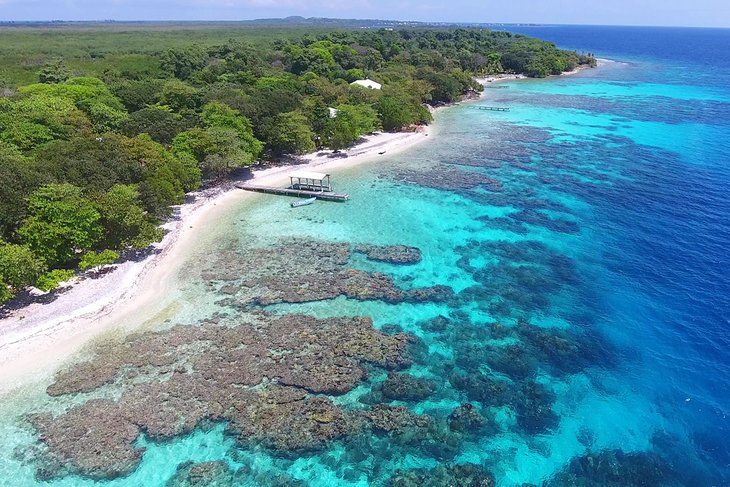
But the country's prized jewels are the beautiful Bay Islands. Ringed by thriving coral reefs – part of the world's second biggest barrier reef , which stretches north to Mexico – these laid-back islands lure many divers, snorkelers, and travelers seeking a relaxed tropical vibe.
Rich in culture, Honduras is also home to the archeological treasures of Copán , one of the finest Maya sites in the world. Other adventures include dolphin encounters, birding tours, rafting trips, and the chance to swim with gentle whale sharks.
Discover a world of wonder in this diverse country, with our list of the top attractions and places to visit in Honduras.
1. Roatán, Bay Islands
2. copán ruins archeological site, 3. utila, bay islands, 4. dolphin encounter, roatán institute for marine sciences, 5. museum of mayan sculpture, copán, 6. la tigra national park, 7. lake yojoa (lago de yojoa), 8. parque nacional jeanette kawas, 9. cayos cochinos, 10. lancetilla botanical gardens, 11. río plátano biosphere reserve, mosquito coast, 12. museum of national identity, tegucigalpa, 13. cusuco national park, 14. carambola botanical gardens & trails, roatán, 15. little french key, bay islands, 16. pico bonito national park.
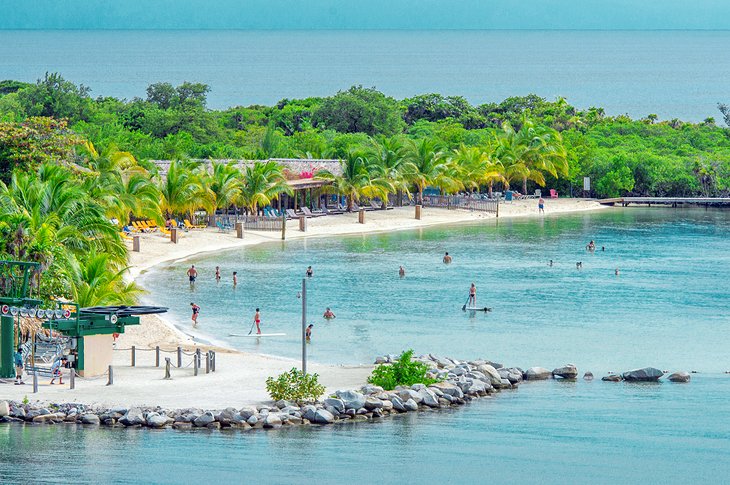
Roatán is the largest and most developed of the Bay Islands. Once a well-kept secret, it is now a cruise ship port and a popular vacation destination – especially for avid divers and snorkelers.
A mountainous backbone undulates through the island's center, and flourishing coral reefs fringe its shores, offering superb opportunities for diving and deep-sea fishing .
Even with the influx of travelers, Roatán's beaches are beautiful. One of the best strands is West Bay Beach. Although packed on cruise ship days, it ticks all the boxes, with clear waters, snorkeling, swaying palms, and plenty of shops and restaurants nearby.
The small community of Sandy Bay is the cultural center of Roatán. Top tourist attractions here include the Roatán Institute of Marine Sciences with its popular dolphin encounters; Roatán Museum ; the Carambola Gardens, a favorite with nature lovers; and the Roatán Marine Park , with excellent snorkeling.
Craving a cute animal encounter? Head to Manawakie Park , where you can cuddle sloths and get up close to capuchin monkeys, as well as soak up a dose of Honduran culture. Gumbalimba Park is another haven for wildlife lovers with sloths and monkeys. You can also pose for a photo with colorful macaws and soar through the jungle on an exhilarating zipline.
Other top things to do in Roatan include visiting the environmentally friendly Blue Harbor Tropical Arboretum and the Butterfly Gardens. Tucked in tropical fruit trees, the garden spotlights butterfly species native to Honduras and the Bay Islands.
French Harbour is Roatán's biggest fishing port and the economic engine of the island. A popular attraction here is Arch's Iguana and Marine Park .
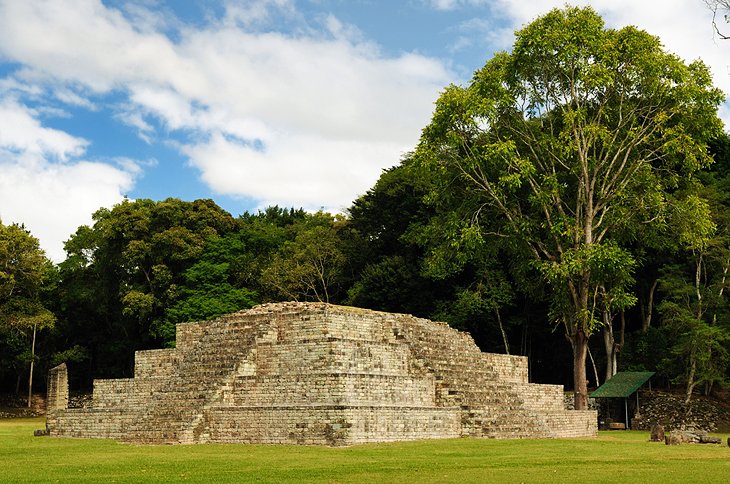
Copán Ruins Archeological Site (Copán Ruinas Sitio Arqueológico) is the most studied Maya city in the world and a UNESCO World Heritage Site . Dating back nearly 2,000 years, the society that lived here was highly stratified, deeply symbolic, and focused on tradition.
You will find plenty to appreciate here. The site is famous for the stelae and altars that are scattered around the immense plaza, most of which were erected during the years 711 and 736. Other highlights include the ball court; the Hieroglyphic Stairway, a unique temple, which holds the longest known Mayan text; and the Acropolis featuring superb carved reliefs of the 16 kings of Copán.
About 1.6 kilometers from the central acropolis, Las Sepulturas archaeological site forms part of the "PAC" (Proyecto Arqueológico Copán) and provides valuable insight into how the Mayan elite lived during the days before the collapse of Copán. While you're exploring the site, keep an eye out for the spectacular scarlet macaws flying among the ruins.
After touring the ruins, don't miss the Museum of Mayan Sculpture , which displays impressive artifacts recovered from the site. Many visitors also like to stroll along the well-signed nature trails , where birds and butterflies dart among the thick foliage.
Not far from Copán, El Puente is a smaller Mayan archaeological site on the Chinamito River with several pyramids that have been partially restored.
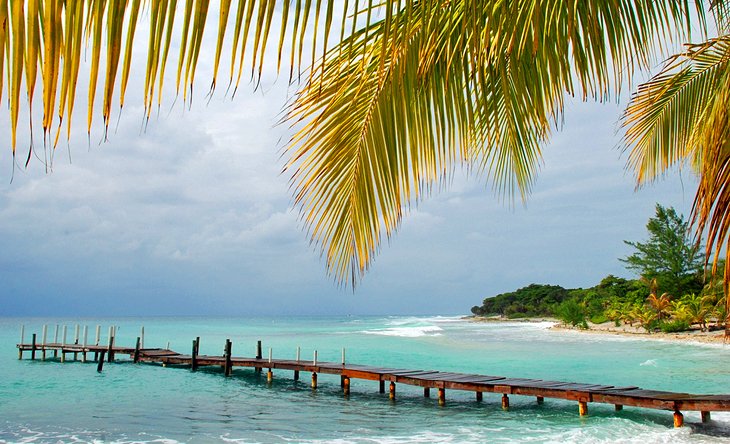
About 32 kilometers from the west coast of Roatán , Utila is the most budget-friendly of the Bay Islands. Backpackers flock to this small, 13-kilometer-long-island, and many visitors come here on affordable dive vacations.
Presiding over an arching bay, Utila Town is the main settlement, where locals compete fiercely over domino games and tourist shops and dive centers dot the streets. Save time to enjoy some fresh seafood and traditional Honduras cuisine at one of the funky waterfront restaurants here.
Besides diving, most visitors bide their time basking on the two slivers of beach, snorkeling in the lagoon, zipping out to a sprinkling of cays off the island's southwest coast, and soaking up the rustic tropical vibe. You can also get up close to some of the island's wildlife at the Iguana Research & Breeding Station .
Dive operators also offer the chance to dive or swim with whale sharks . These gentle giants are frequently spotted in the waters around the island - especially during March to April and August to September.
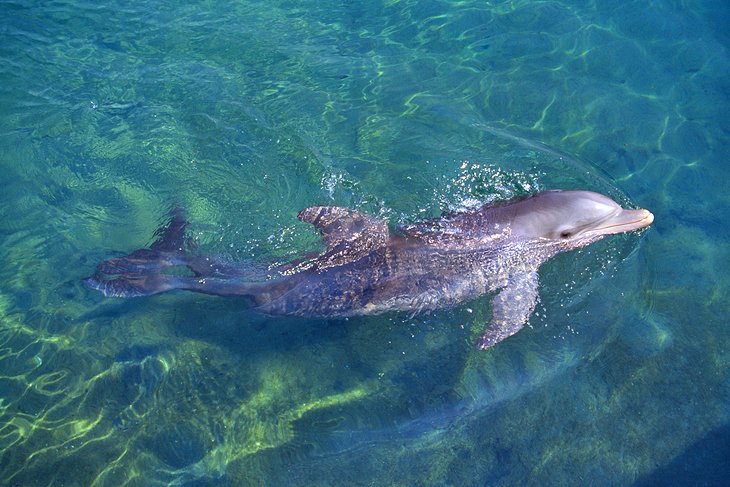
On the northwest coast of Roatán at Anthony's Key Resort , the Roatán Institute of Marine Sciences offers an unforgettable dolphin experience. Best of all, it takes place in a natural lagoon, where the dolphins are free to swim around in a large area like they do in the wild. The center also educates locals and visitors about marine ecology.
Besotted animal lovers can swim and snorkel with the dolphins, play simple games with them, participate in a dolphin specialty course, or enjoy a dolphin dive experience. Budding marine biologists can also sign up for the "Dolphin Trainer for a Day" program and perform their own dolphin show for their proud parents at the end.
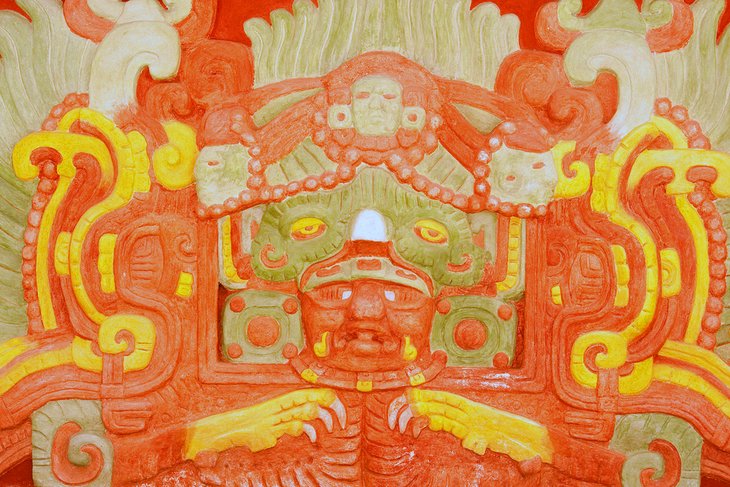
At the Copán Ruins Archeological Site, the superb Museum of Mayan Sculpture is an essential stop on any visit to the ruins. It displays a series of original pieces of sculpture, stelae, and altars recovered from the site.
The museum, which tunnels through a hillside before opening out into a vast sunlit open space, is best visited after touring the ruins to understand where the pieces on display originally belonged.
The collection has a total of over 3,000 pieces of original Maya sculpture and carvings depicting spiritual entities, people, and sacred animals like macaws and bats. There are also several buildings on-site that were rebuilt from the pieces found in the nearby dig site.
Undoubtedly, the masterpiece here is the full-sized replica of the ornate Rosalila Temple , discovered intact under structure 16 in the acropolis.
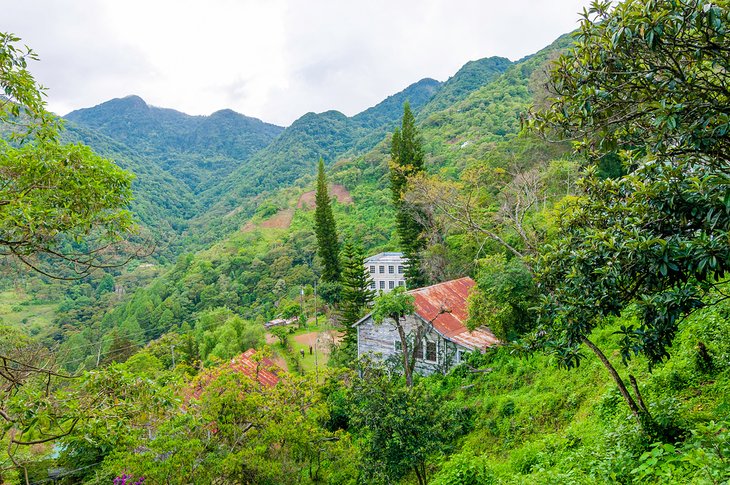
About 20 kilometers from Tegucigalpa, La Tigra National Park (Parque Nacional La Tigra) is one of the most beautiful places to visit in Honduras. Perched at an altitude of 2,270 meters, this unspoiled park preserves a lush cloud forest that is home to ocelots , pumas , and monkeys , although it's rare to see these larger mammals.
This is one of the most visited parks in Honduras and offers a vision of how the area looked long before logging claimed much of the surrounding forests.
The park is also a haven for birds - more than 200 species flit within its borders, including toucans, trogons, and the elusive quetzal. Well-marked hiking trails wind through the thick forest, where bromeliads and orchids flourish.
Stop by the visitor's center at each entrance for maps and park information and to pay the admission fee. Guides can also be arranged here.
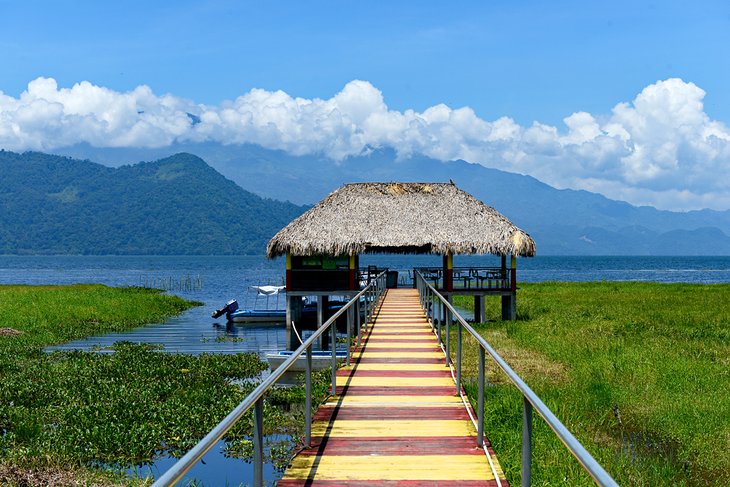
Along the main road between Tegucigalpa and San Pedro Sula, Lago de Yojoa is the largest natural lake in Honduras and a haven for birders . More than 480 species have been spotted here, including whistling ducks, northern jacanas, and crakes.
You can explore this shallow lake from shore, or glide through the reeds in a canoe or kayak. Two mountainous national parks border the lake: Santa Bárbara National Park on the northern shore and Cerro Azul Meambar National Park to the south.
Other popular things to do in the area include hikes to waterfalls, exploring an underground cave system, and tours of coffee plantations and archeological sites.
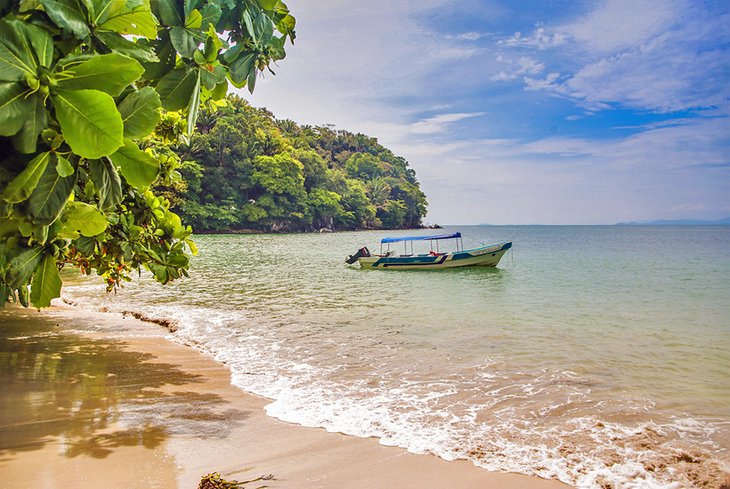
Formerly known as the Punta Sal National Park , this beautiful wilderness area is now named after the environmental activist, Jeanette Kawas, who fought passionately during her life to preserve its rich ecosystems.
The park stretches along a peninsula at the western end of the Bay of Tela and supports diverse habitats, from tropical jungle, mangroves, and wetlands to sparkling beaches and coral reefs.
Wildlife is abundant and includes many rare species. Visitors may encounter dolphins; howler monkeys; and a large variety of tropical birds, including toucans, quetzals, and motmots. The Micos Lagoon has the highest population of birds in the area, with up to 350 different species.
Tour operators run day trips to the park from Tela, which typically include a hike across the peninsula to a pretty beach, swimming, snorkeling, or diving and an optional visit to the traditional Garifuna village of Miami on a picturesque beach and lagoon.
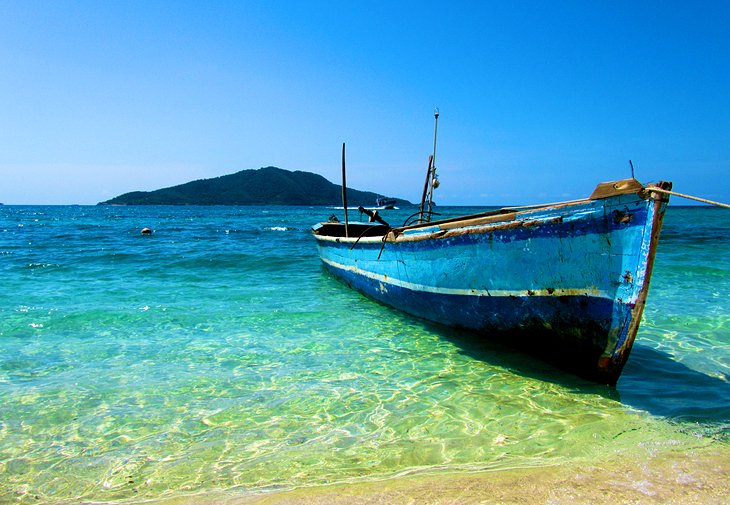
Also known as the Hog Islands, the archipelago of Cayos Cochinos is an undeveloped, quintessential tropical paradise. This group of small, privately-owned islands and cays lies 17 kilometers off the coast near the old banana port of La Ceiba .
The islands and the black coral reefs that surround them are a Marine Biological Reserve and remain pristine due to their remote location and difficult access. A true back-to-nature experience, Cayos Cochinos offer excellent snorkeling, diving, hiking, and bird-watching.
Accommodation options include rustic eco resorts, as well as hammocks or huts at local Garifuna villages . The islands are accessible only by boat from La Ceiba, Roatán, or Utila.
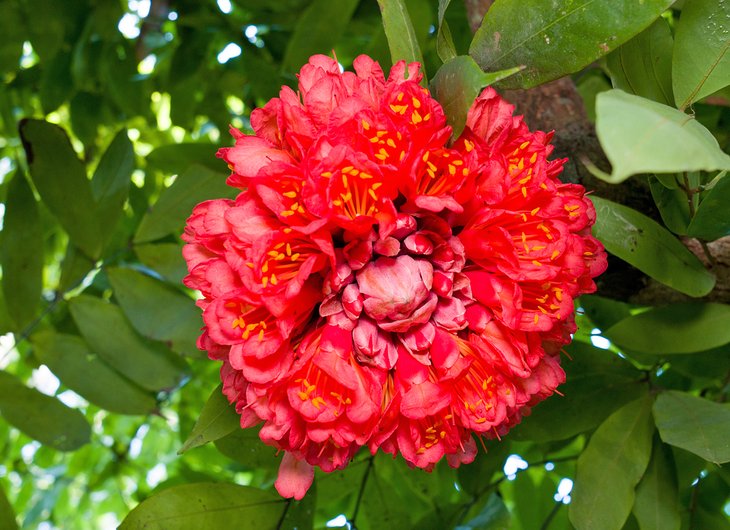
About five kilometers from the city of Tela , Lancetilla Botanical Gardens are the second largest tropical botanical gardens in the world .
In 1926, the United Fruit Company established the gardens as an experimental site to test the economic viability of various fruit and hardwood trees. Today, the magnificent groves of trees from Central America and other tropical regions comprise part of a protected wildlife corridor along the country's north coast.
More than 200 species of tropical birds have also made the garden home due to the abundance of fruit trees. Birders will be rewarded with many sightings as they wander along the well-marked trails through profuse plantings of palms, orchids, and mango trees, among others.
One particularly beautiful path leads through a tunnel of bamboo trees to a swimming hole in the Lancetilla River, a refreshing place for a cool dip after a long, hot walk.
This is a place where it's definitely worth organizing a guided tour, so you can learn interesting facts about all the different trees and plants in the gardens.
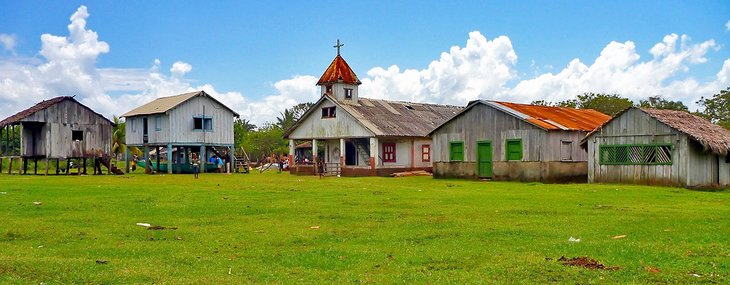
In 2011, UNESCO placed this massive swath of jungle along the remote Mosquito Coast on the World Heritage in Danger list . It is one of the few remaining tropical rainforests in Central America.
The reserve lies in the watershed of the Río Plátano and forms a mosaic of lowland tropical rainforest, coastal lagoons, undisturbed beaches, mangroves, grasslands, and patches of pine savannah.
Steeped in tropical humidity, this important wilderness area harbors a rich diversity of wildlife, including howler monkeys, scarlet macaws, giant leatherback turtles, toucans, and tapirs. Sadly, reports of logging and hunting continue to threaten the reserve's fragile habitats.
Sloping down to the Caribbean Sea, the mountainous landscape is also home to more than 2,000 indigenous people of the Miskito and Pech tribes, as well as the Garífuna, who continue to live their traditional lifestyle. Archaeological sites also lie within its borders.
The best way to explore the Río Plátano Biosphere Reserve is on an organized tour. Experienced guides can take you to the safe places to visit in this remote area of Honduras, away from drug smugglers and illegal loggers who often venture deep into the reserve. Ecotourism companies offer wilderness adventures and rafting trips down the Río Plátano.
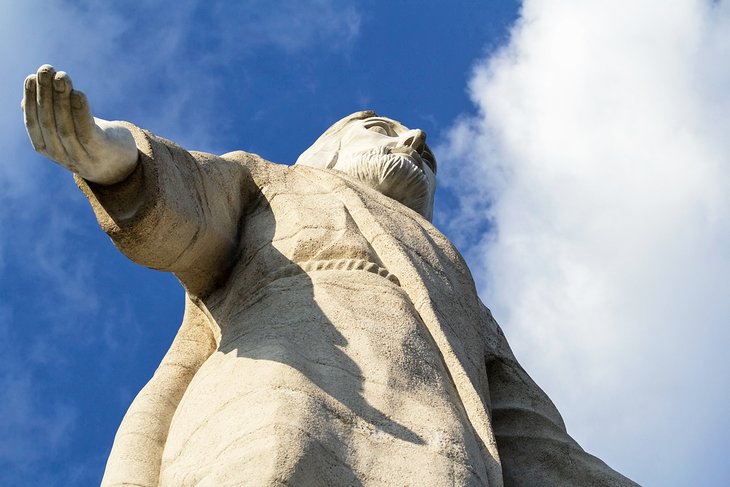
For a dose of Honduras culture and a journey through the country's history, visitors should stop by the excellent Museum of National Identity (Museo para la Identidad Nacional). This is one of the top things to do in Tegucigalpa, the country's capital.
Occupying a beautiful National Heritage building known as Palacio de los Ministerios , the museum also displays an impressive collection of Honduran and international art. Historic exhibits unveil the country's fascinating past, from pre-Hispanic times to the present day.
A highlight here is the virtual tour of the Mayan Acropolis of Copan, which provides a great primer for those who haven't yet visited the attraction and a welcome recap for those who have. Parking is scarce in this central city location, but taxis will take visitors directly to the door.
Another top place to visit in Tegucigalpa is the Parque Naciones Unidas El Picacho . Drive or catch a taxi to the park, which lies about six kilometers outside the city, and hike the trails to one of the city's iconic landmarks: the 20-meter-high statue of El Christo del Picacho , which towers over the capital. Best of all, you can enjoy panoramic views over the city to the mountains beyond.
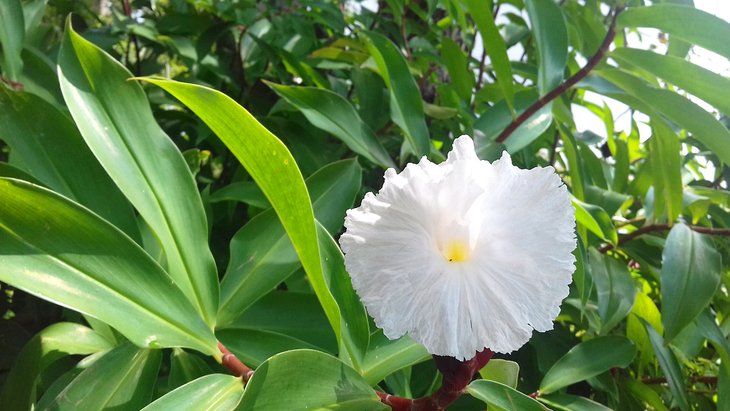
Located in Corinto, just west of San Pedro Sula in the Merendon Mountain Range, Cusuco National Park (Parque Nacional El Cusuco ) is famous for its enigmatic quetzal, one of the loveliest of all tropical birds. Sadly, habitat loss and unsustainable hunting for its beautiful long tail feather have pushed it to the brink of extinction.
The park's exceptional biodiversity also includes threatened species of frogs and salamander, jewel scarab beetles, Baird's tapir, and more than 260 species of birds. The reserve is also home to several species of wild cats, including the ocelot, margay, and jaguar.
The park's frogs are among its most important residents, playing a vital role in controlling the insect population. They also perform other important functions within the ecosystem which, in turn, influences the health of the residents of San Pedro Sula.
Hikers can enjoy some challenging trails here – the park's highest point rises to 2,200 meters above sea level. Local guides can provide access details and share information about the rich flora and fauna.
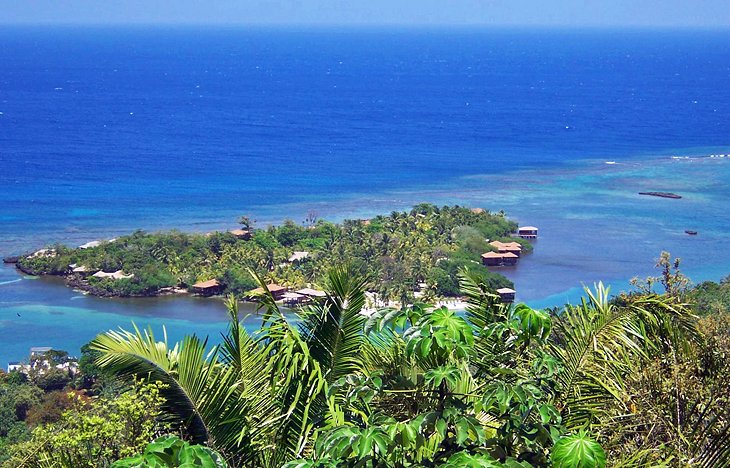
Beautiful Carambola Botanical Gardens & Trails offers a tranquil island nature experience. Trails wind through forests of fruit trees, palms, ferns, orchids, spices, and mahogany.
For breathtaking views, follow the mountain path to the top of the ridge, where a lookout peers out over the azure Caribbean, the adjacent barrier reef, and for those who time it well, dolphins leaping from the water at Anthony's Key Resort.
Along the way, keep an eye out for some of the tropical wildlife. Colorful birds dart throughout the foliage, and you might also spot Roatan Anoli lizards and entertaining parades of leafcutter ants.
Also in the gardens, Iguana Wall is a sheer section of cliff that offers a breeding area for iguanas and parrots.
Official site: http://www.carambolagardens.com/
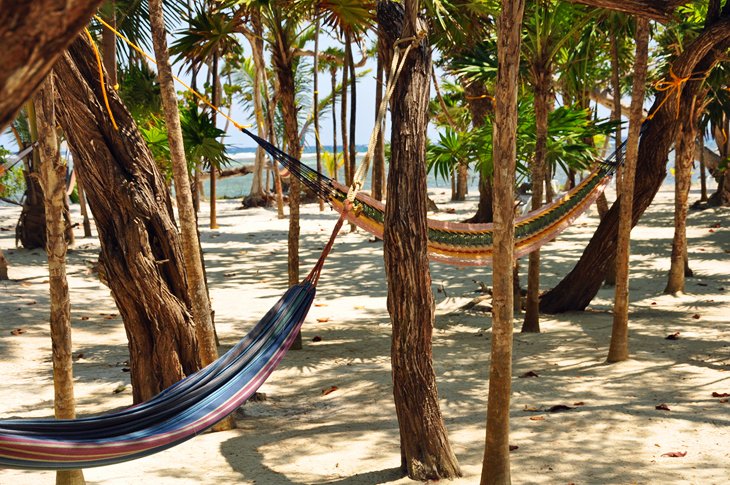
A popular day trip from Roatán , Little French Key is an eco-friendly tropical paradise off the island's south shore. Anyone seeking a tranquil tropical experience in manicured surrounds will enjoy it here. Imagine hammocks slung between coconut palms, sparkling clear waters with fantastic snorkeling, and a pretty white-sand beach with kayaks and chaises loungues.
After a few hours of beach fun, you can dine on fresh seafood at the restaurant or head to the wildlife sanctuary for close-up animal encounters. Sanctuary residents include rescue animals such as monkeys, deer, and toucans.
Feel like some more pampering to go with your beach basking? Sign up for a massage, manicure, or pedicure while you're here.
Official site: http://www.littlefrenchkey.com/
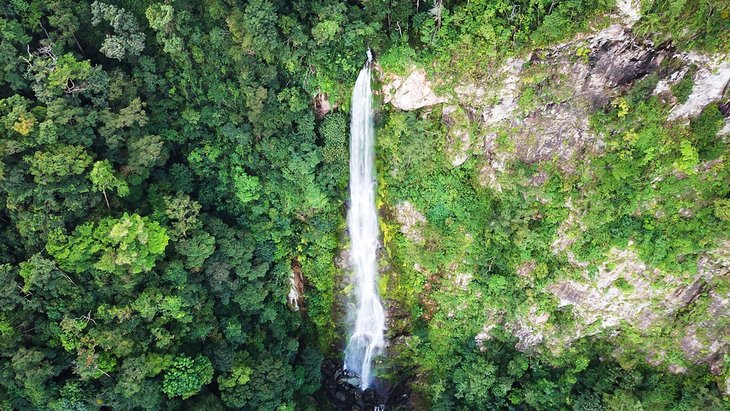
Pico Bonito National Park is a nature lover's paradise and one of the most popular hiking areas in Honduras . Located near the northern coastal city of La Ceiba, the 2,480-meter summit of Pico Bonito is a landmark visible from the Bay Islands.
In addition to the park's lush green rainforests and diverse wildlife, the park is full of dramatic waterfalls , some of which can be viewed from the road.
The park offers a variety of hiking trails, including the moderate one-hour La Roca loop that offers thrilling views from a swing bridge that crosses the Cangrejal River . There are also longer, more challenging trails that visit waterfalls and swimming holes, as well as scenic vistas.
Most of the trailheads are located at the park's visitor center, located only a few kilometers from La Ceiba.

More on Honduras
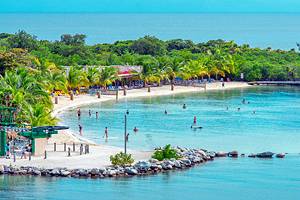
Nomadic Matt's Travel Site
Travel Better, Cheaper, Longer
Honduras Travel Guide
Last Updated: September 1, 2023
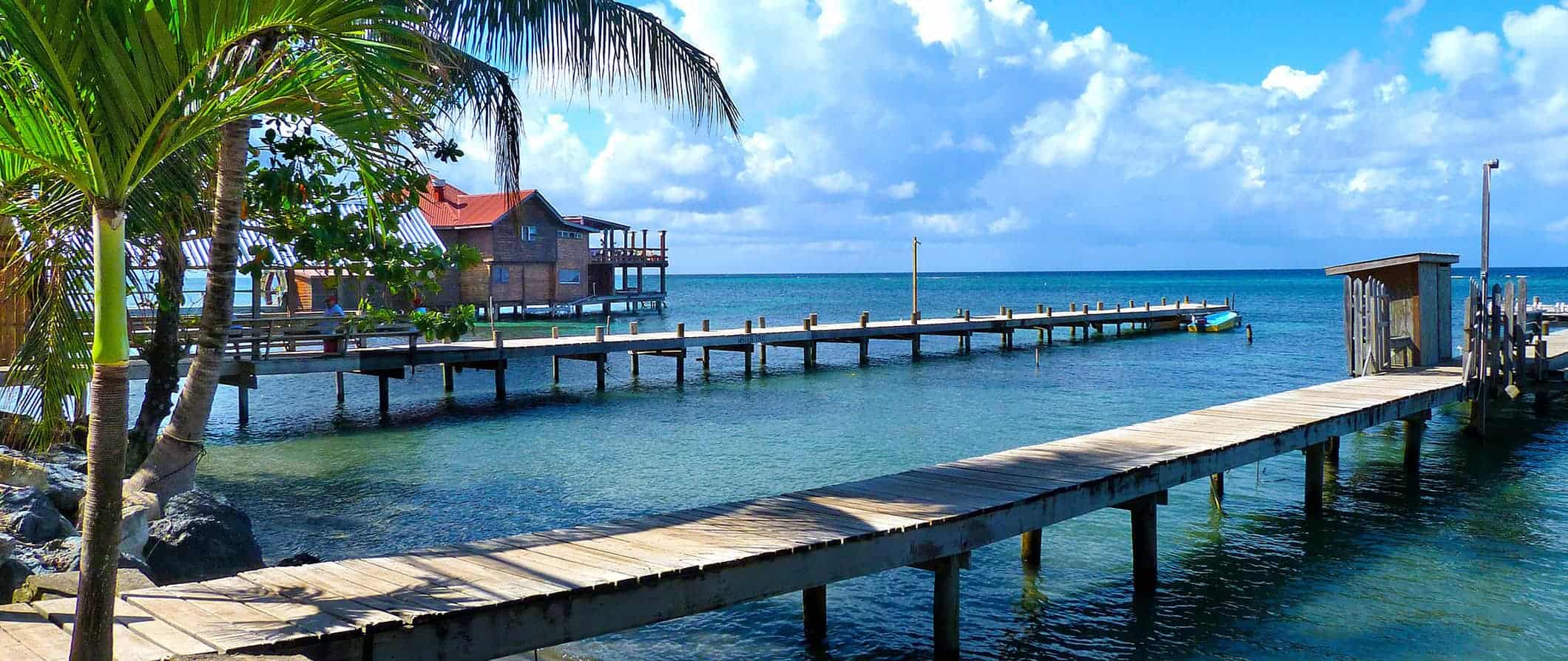
Unfortunately, owing to its violent past, it often gets glossed over for more polished Central American hotspots.
However, Honduras today is a much safer country and is popular with intrepid backpackers and expats looking to get off the beaten path. With world-class diving, a cheap cost of living, and incredible weather, Honduras offers some of the best value in the region.
That said, you’ll still need to take precautions and keep your wits about you — especially on the mainland — as crime and gang activity are still common.
This travel guide to Honduras can help you see the country, stay safe, and make the most of your visit to this beautiful and affordable country!
Table of Contents
- Things to See and Do
- Typical Costs
- Suggested Budget
- Money-Saving Tips
- Where to Stay
- How to Get Around
- How to Stay Safe
- Best Places to Book Your Trip
- Related Blogs on the Honduras
Top 5 Things to See and Do in the Honduras
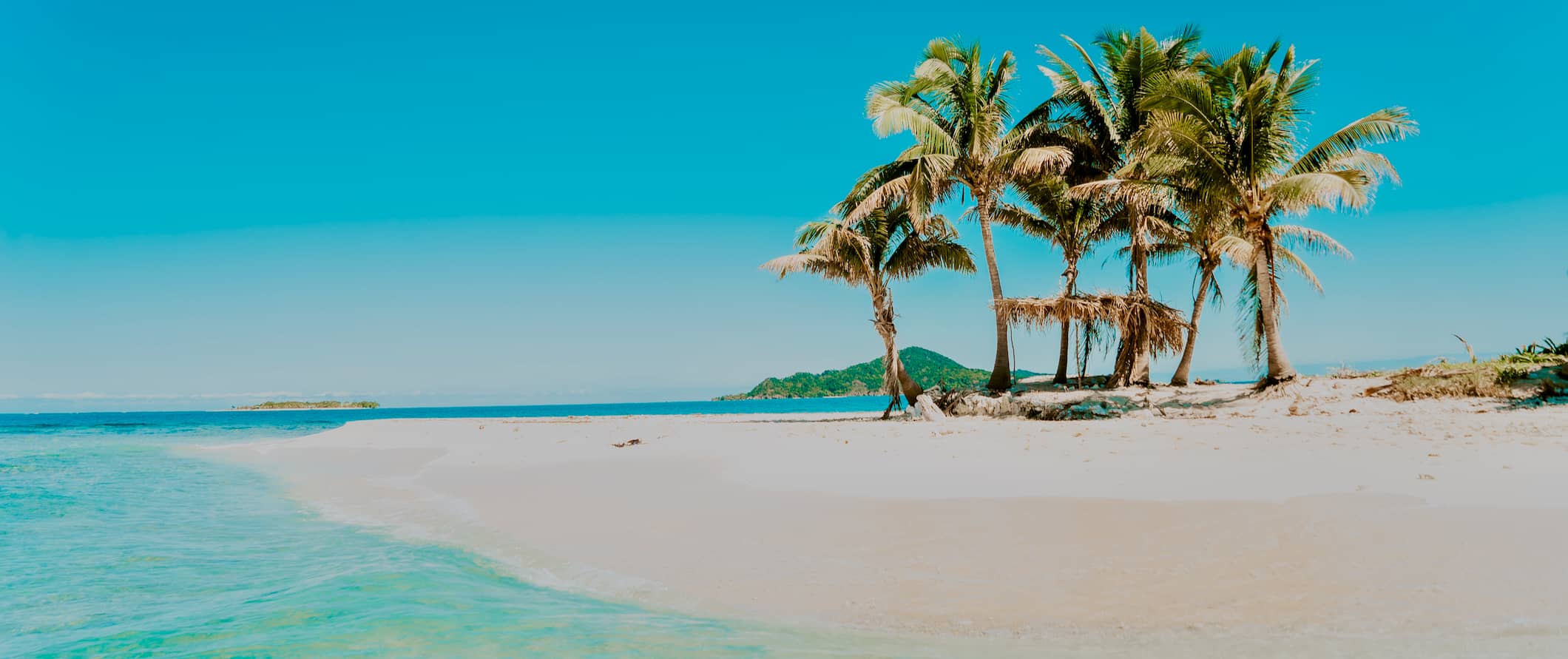
1. Explore the Copán Ruins
These incredible Mayan ruins are located near the border with Guatemala and are one of Honduras’ most popular tourist attractions. Nestled in a lush jungle valley, Copán Ruinas are a UNESCO World Heritage Site dating back to the height of the 5th century when Copán was a powerful capital of the Southern Maya kingdom. But in 738 CE, the king was captured and executed by his rival and archeologists believe that the city was abandoned by 800 CE. Today, the ruins attract tourists for their intricate stelae, tunnels, a hieroglyphic stairway, as well as the geography of the area itself which is filled with diverse wildlife including monkeys, sloths, parrots, and macaws. It takes a couple of days to see the entire site so try not to squeeze your visit into a day trip. There are two main sites: Copán, the main site originally used for nobility, and Las Sepulturas. To get there, head to the town of Copan Ruinas near the border with Guatemala; the ruins are nearby. Bring lots of sunscreen and water. Admission is 370 HNL.
2. Dive the Bay Islands
The Bay Islands, known as “Islas de la Bahía,” are one of the best diving spots in the Caribbean. They are located in the Gulf of Honduras and near the Belize Barrier Reef, which is part of the Mesoamerican Barrier Reef System. The Roatan, Utila, and Guanaja archipelagos all offer stunning dive sites with crystal-clear waters and incredible marine life. Roatan is the largest island while Utila is the cheapest, attracting budget divers as the island as it also offers a stunning array of wildlife, including nurse sharks, sea turtles, stingrays, and more. Get up close to colorful coral formations or deep dive 2,000 feet into the abyss for bluntnose sixgill shark sightings. Prices start at 870 HNL for one dive or a package of ten dives for 7,405 HNL.
3. Relax at Lake Yojoa
The country’s largest lake is rich in biodiversity with almost 400 bird species and over 100 plant species. This incredible site is a popular fishing spot for locals, a great place to visit a coffee plantation tour, and a fun place to zipline. Or if you’re looking for an adrenaline-filled experience, hike behind the stunning Pulhapanzak waterfall and explore the inside caves with the sound of water pounding around you. For something a bit more peaceful, rent a kayak and spend a few hours paddling around the lake. Or, if you don’t mind small spaces, head into the Caves of Taulabé where you can either explore on your own or hire a spelunking guide if you want to go deep underground. For a nice wander through the lush jungle wetlands, check out Los Naranjos Ecological and Archaeological Park. And if you’re up for a real challenge, hire a guide to climb to the top of Santa Barbara (2,744 meters/9,000 feet).
4. Adventure at Pico Bonito National Park
This sprawling bio-diverse national park is home to lush tropical jungles and moody cloud forests. It’s a haven for hiking, wildlife watching, and ziplining. The Cangrejal River is a fantastic place for white water rafting, with Class I-IV rapids. Or you can go swimming in the river and even jump off the rocks into the water if you feel like it. There are many different hiking trails here too, like the La Roca loop and the El Mapache trail to Bejuco Falls. If you’re a fan of the outdoors, don’t miss it. You can reach the park from La Ceiba or do it as a day trip from nearby regions.
5. Escape to Cayos Cochinos
The archipelago of Cayos Cochinos, made up of Cayo Menor and Cayo Grande, are two coral-abundant islands that offer some of the most postcard-perfect sandy white shorelines in Central America. They offer plentiful diving and snorkeling and the nearby cays are home to the world’s second-largest coral reef system. The only way to reach the Cochino Cays Marine Sanctuary is by boat; you can take a chartered day tour from Roatan and Utila or from La Ceiba. It’s a great place to disconnect and relax.
Other Things to See and Do in the Honduras
1. visit mercado guamilito.
Located in San Pedro Sula, this traditional market is an excellent place to buy Lenca ceramics, high-quality (and reasonably priced) leather, cigars, and silver. There’s also a no-frills food market that locals claim offers the best baleada , a national dish made with flour tortillas, cheese, cream, and fried beans. The market is open daily from 7am-4 pm.
2. Chill out on Utila
Most backpackers make a beeline for the island of Roatan, but if you’re looking for something beyond diving, Utila is a better option. It has a buzzing nightlife, cheap accommodation, beautiful white sand beaches, and even the chance to spot whale sharks. The 45-minute ferry ride from La Ceiba to Utila costs 750 HNL.
3. Visit Parque Nacional Jeannette Kawas
This national park is named after Jeannette Kawas, an environmental activist who fought to protect the area from commercial development and was brutally murdered in 1995. Now, her legacy lives on with this protected area, filled with abundant wildlife including howler monkeys, boa constrictors, and toucans. You’ll also find pristine beaches and untouched coral reefs here. The secluded park is also known as Punta Sal National Park and is just a 30-minute boat ride from Tela, a Caribbean coastal town. Admission is 120 HNL. Day trip prices start around 690 HNL.
4. Go zip lining
If you’re craving an adrenaline rush, Honduras has a dozen zip-lining experiences to choose from all around the country (including several on Roatan). Prices vary but expect to pay at least 950-1,085 HNL for a half-day tour. Lunch is usually included.
5. Explore the Río Plátano Biosphere Reserve
This heavily-forested area is a UNESCO World Heritage Site and one of the last remaining tropical rainforests in Central America. Established in 1982, it spans over 5,250 square kilometers (2,027 square miles) and is home to Mayan ruins, ancient petroglyphs, pumas, jaguars, giant ant-eaters, sloths, and over 2,000 indigenous locals. Getting here requires some effort (it’s a 6-hour bus from La Ceiba followed by a short boat ride) but you’ll be rewarded by sweeping vistas and a rare look at indigenous life in the rainforest. You can hire a day guide on arrival (for around 400 HNL) or embark on a multi-day tour up the river for 3,000 HNL. Kayaking day trips start around 940 HNL and crocodile night watching starts around 1200 HNL. Admission to the reserve itself is by donation.
6. Visit Valle de Angeles
This colonial town makes for a good day trip from Tegucigalpa, the capital of Honduras. It’s located 35 minutes away by car and, aside from the beautiful colonial buildings, there’s a lot of affordable handicraft shopping. While you’re here, spend some time relaxing in Parque Central, where you’ll see the historic colonial church or head into La Tigra, the nearby cloud forests that are full of hiking trails (admission is 247 HNL). Don’t forget insect repellent if you do visit the forest!
7. Attend Carnaval de La Ceiba
This is the biggest carnival in Central America. Held every May in La Ceiba, it attracts half a million revelers every year. The celebration is in honor of Saint Isidore the Laborer, the patron saint of the city. For two weeks, throngs of people flock to La Ceiba’s barrios (neighborhoods), who compete to throw the best carnavalito (little carnival) in town. It’s all in anticipation for the main event, the rainbow-filled parade “La Feria de San Isidro”, which takes place along Avenida San Isidro on the 3rd or 4th Saturday of May.
8. Go hiking in Parque Nacional Cusuco
This ethereal cloud forest is nestled into the Merendon mountain range near the border with Guatemala, making it somewhat difficult to access (during the rainy season you’ll need a 4×4). It’s a 2-3-hour drive from San Pedro. There are five stunning hiking trails that cross the cloud and dwarf forests. Expect to see plenty of parrots, toucans, and quetzals here. Unless you have a 4WD vehicle, you’ll need to go with a tour company. Admission is around 250 HNL.
9. See the Roatan Butterfly Garden
Located in Roatan, this indoor garden is home to over 30 species of moths and butterflies, as well as a large collection of boa constrictors, parrots, scarlet macaws, and tropical orchids. It is best to visit during the early morning when the butterflies are most active. Admission is around 358 HNL.
10. Visit the Lancetilla Botanical Garden
Located on the coast in Tela, Honduras’s only botanical garden happens to also be the largest in Latin America. Spanning over 4,100 acres, it boasts thousands of varieties of national and exotic flora and fauna (including a bamboo collection and an orchid collection). There are over 1,500 trees in its arboretum and the garden also has 3,000 acres of virgin rainforest. It’s open 365 days a year and admission is 198 HNL.
Honduras Travel Costs

Hostels – Shared dorms with 4-8 beds cost 370 HNL per night, with private rooms costing anything from 400 to 1,400 HNL. Free Wi-Fi and free breakfast are generally included. Most hostels also have A/C and hot water.
Wild camping isn’t recommended here due to petty theft, rainstorms, and the sweltering humidity. There are a few campgrounds around the country, though they aren’t any cheaper than staying in a hostel.
Budget hotels – Budget hotels can be found for around 1,000 HNL for a double room. Most of the cheaper hotels include Wi-Fi, however, for a hotel with a kitchen, A/C, and a pool you’ll pay at least 2,000 HNL per night.
Airbnb is available in Honduras but really only found in Tegucigalpa and the tourist spots on the coast. Prices start at 500 HNL for a shared room, 1,000 HNL for a private room, and 2,900 for a villa.
Food – Honduran cuisine leans heavily on fish, soups, beans, rice, and coconut. Popular dishes include guisado (a spicy chicken stew), carne asada (grilled sliced beef), and baleda (cheese and bean tortilla). Generally, you can expect a mix of Spanish, Lenca, and Caribbean influences.
Local meals consisting of rice, beans, and a drink costs around 120 HNL. Set lunch menus at comedores (small local eateries) offer large portions for cheap so stick to them when eating out.
Street food is popular here, with popular favorites being grilled corn, baleadas (a tortilla filled with fried beans, cream, and cheese), pastelitos (a Cuban pastry similar to empanadas), and fruit smoothies (a common breakfast here). These are usually under 50 HNL.
A three-course meal at a restaurant serving local cuisine costs 600 HNL, including a drink. These establishments usually add a 10% service charge to your bill too. Expect a blend of traditional Mayan cuisine (rice, beans, corn, seafood) with touches of Western and Caribbean flair.
A bottle of water is 17 HNL and a latte or cappuccino will set you back 43 HNL. Domestic beer is around 70 HNL.
Backpacking Honduras Suggested Budgets
On a backpacker budget of 875 HNL per day, you can stay in a dorm, eat street food for all your meals, take buses to get around, and do some hikes or other free activities like lounging on the beach. If you plan to drink, you’ll need to add around 150 HNL more per day.
On a mid-range budget of 2,400 HNL per day, you can stay in a budget hotel, eat out at local restaurants, have a few drinks, take the occasional taxi, and do some paid activities like visiting national parks or diving.
On a “luxury” budget of 5,200 HNL, you can stay in a private villa or nicer hotel, take taxis everywhere, eat out anywhere you want, drink more, and do more tours and activities. This is just the ground floor for luxury though. The sky is the limit!
You can use the chart below to get some idea of how much you need to budget daily, depending on your travel style. Keep in mind these are daily averages — some days you’ll spend more, some days you’ll spend less (you might spend less every day). We just want to give you a general idea of how to make your budget. Prices are in HNL.
Honduras Travel Guide: Money-Saving Tips
Honduras is very affordable. You’d be hard-pressed to spend a lot of money here unless you are actually trying to. That said, a true budget traveler always looks for ways to save. Here are some money-saving tips to help you:
- Refill your water – The tap water in Honduras is not safe to drink so make sure you have a reusable bottle with a built-in filter. To stay safe, bring a water filter like LifeStraw to ensure your water is clean and free from bacteria. You’ll save money on buying bottled water and save the environment too!
- Know what to pay – When you need to barter for something, talk to your hostel/hotel staff first. Find out what a fair price is so that you can avoid getting overcharged.
- Avoid paying with a credit card – Honduras is a cash-driven society. In places where you can pay with a credit card, expect fees of 5-10%. Pay with cash as often as possible.
- Learn some Spanish – To avoid getting overcharged, learn some Spanish. Even just a few words and phrases can help you avoid being charged tourist prices.
- Travel during the shoulder season – Prices are highest during the dry months (December-April). To avoid crowds and save money, travel during the rainy season or shoulder season. You might get rained on, however, accommodation and activities will be cheaper.
- Stay with a local – Honduras has a small Couchsurfing scene, but if you book early you can likely find a host who can share their insider knowledge and give you a free place to stay.
Where to Stay in Honduras
Honduras has plenty of fun, safe, and social hostels. Here are some of my suggested places to stay in Honduras:
- Roatan Backpackers Hostel (Roatan)
- Palmira Hostel (Tegucigalpa)
- Iguana Azul (Copan Ruinas)
- Jungle River Lodge (La Ceiba)
How to Get Around Honduras
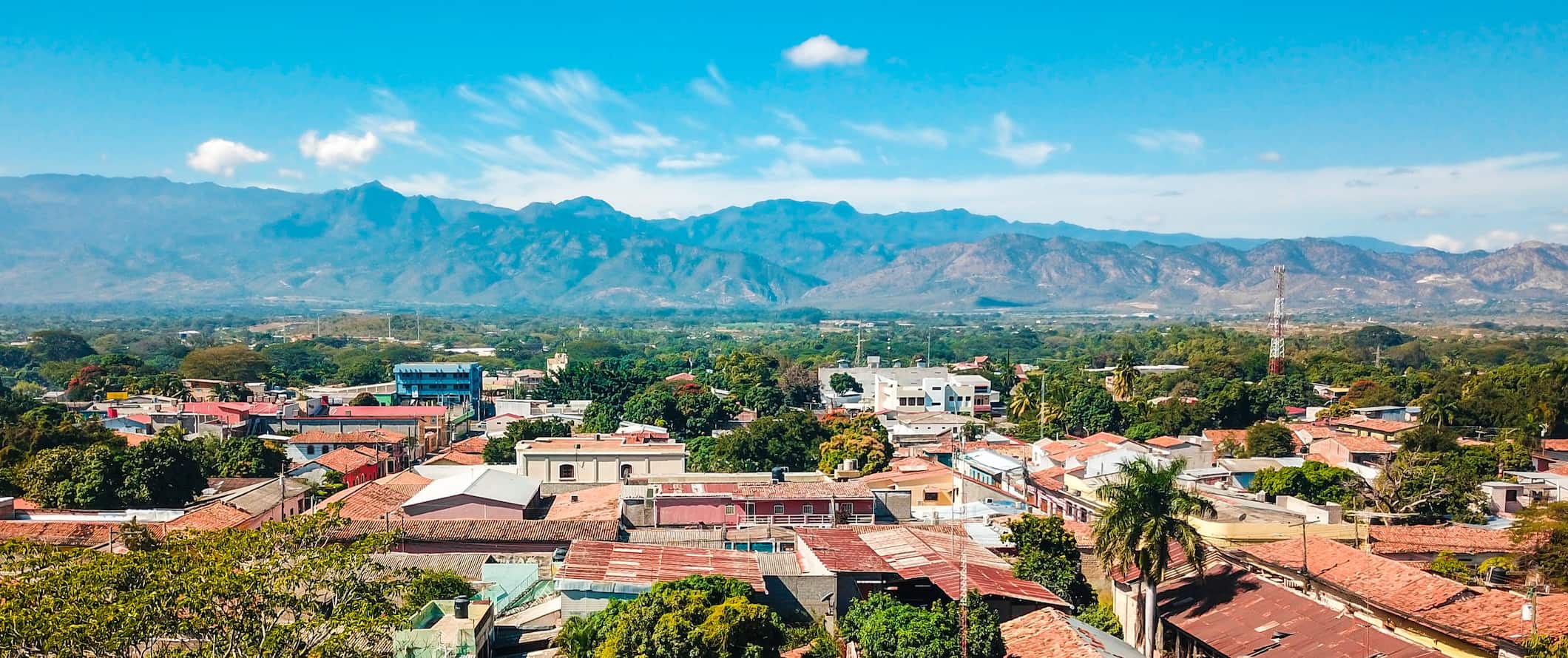
Bus – The cheapest way to get from A to B in Honduras is by bus. For local city journeys, taxis are recommended due to safety issues (petty theft is common on public transportation).
Direct buses for cross-country trips are more expensive but more comfortable and faster than the slower buses that make multiple stops. A direct bus from Tegucigalpa to La Ceiba takes around 6 hours and costs 860-950 HNL. A direct bus from Tegucigalpa to Copan Ruinas takes 9 hours and costs 1,293 HNL.
The multiple-stop buses ( parando ) are slower and can add a few extra hours to your trip. But, if you’re not in a rush, they can save you upwards of 50%.
Taxi – Taxis are plentiful and can be found pretty much everywhere. Fares start at 74 HNL and are charged at 65 HNL per kilometer.
Shared taxis ( colectivos ) are common for popular routes in the bigger cities too and will slash the private rates in half. Negotiate prices prior to getting in the car. Ask your hotel/hostel staff for rates before you arrive so you aren’t ripped off.
When on the islands, water taxis are your best option for getting around. They run from Roatan to West End, and from Coyolito to Isla del Tigre. Shared water taxis cost between 75-100 HNL depending on the route.
Flying – Domestic flights in Honduras are expensive. Connections between the major cities (La Ceiba, Tegucigalpa, San Pedro Sula) to Roatan, run frequently, however, one-way tickets to these key destinations usually cost between 3,000-4,250 HNL each way. If you’re on a budget, avoid flying.
Car rental – Driving in Honduras is not recommended as the roads aren’t that safe (landslides, flooding), there’s heavy traffic, and robberies are common. Avoid renting a car and stick to buses.
When to Go to Honduras
Honduras is, for the most part, a year-round destination. Temperatures hover around the 27-32°C (82-90°F) mark all year. However, the clammy humidity can feel like it’s higher than that during the rainy season (May-November).
Hurricanes are possible from April to October, however, if you’re willing to change your travel plans on a whim due to the weather, you can save a lot of money by visiting during this period. Be aware that booking during las lluvias (the rainy season), means rural areas (and hiking trails) can be harder to access due to storms.
The driest months, from December to April are considered peak season and are the best (albeit most expensive time) to visit. The coastal areas are particularly packed during this period, although ‘busy’ for Honduras is still pretty quiet compared to other popular Latin American destinations. If you’re serious about diving, you’re also going to get the best visibility during this time.
How to Stay Safe in Honduras
Honduras has found it difficult to shrug off its former status as the ‘murder capital of the world.’ Yet the country has improved leaps and bounds in terms of safety and the majority of travelers have no trouble navigating the country safely.
Homicides decreased by over 50% from 2012-2019 and kidnappings declined by 82% from 2013-2019. The majority of crimes happen in the major cities: Tegucigalpa, San Pedro Sula, and La Ceiba so I would be extra vigilant in those places, especially at night. (I wouldn’t walk around the capital at night alone.)
Outside of those areas, crime is much less common (especially in the Bay Islands). That being said, it’s important to keep an eye on your belongings on public transport, in busy urban areas, and near bus stops/stations.
Take cabs at night (ideally with other travelers) instead of walking alone and avoid walking down side streets that are not well lit.
Walking around during the daytime is usually trouble-free as long as you keep your valuables out of sight and don’t flash fancy jewelry, phones, or money.
Avoid taking the city bus, where pickpocketing is rife.
Since scams can occur here, read about common travel scams to avoid so you can be prepared.
Solo female travelers should generally feel safe here as long as they follow the advice above. Additionally, the standard precautions apply (never leave your drink unattended at the bar, never walk home alone intoxicated, etc.).
If you’re visiting during hurricane season (April-October), be sure to check the weather regularly.
If you experience an emergency, dial 911 for assistance.
The most important piece of advice I can offer is to purchase good travel insurance. Travel insurance will protect you against illness, injury, theft, and cancellations. It’s comprehensive protection in case anything goes wrong. I never go on a trip without it as I’ve had to use it many times in the past. You can use the widget below to find the policy right for you:
Honduras Travel Guide: The Best Booking Resources
These are my favorite companies to use when I travel. They consistently have the best deals, offer world-class customer service and great value, and overall, are better than their competitors. They are the companies I use the most and are always the starting point in my search for travel deals.
- Skyscanner – Skyscanner is my favorite flight search engine. They search small websites and budget airlines that larger search sites tend to miss. They are hands down the number one place to start.
- Hostelworld – This is the best hostel accommodation site out there with the largest inventory, best search interface, and widest availability.
- Booking.com – The best all around booking site that constantly provides the cheapest and lowest rates. They have the widest selection of budget accommodation. In all my tests, they’ve always had the cheapest rates out of all the booking websites.
- Get Your Guide – Get Your Guide is a huge online marketplace for tours and excursions. They have tons of tour options available in cities all around the world, including everything from cooking classes, walking tours, street art lessons, and more!
- SafetyWing – Safety Wing offers convenient and affordable plans tailored to digital nomads and long-term travelers. They have cheap monthly plans, great customer service, and an easy-to-use claims process that makes it perfect for those on the road.
- LifeStraw – My go-to company for reusable water bottles with built-in filters so you can ensure your drinking water is always clean and safe.
- Unbound Merino – They make lightweight, durable, easy-to-clean travel clothing.
- Top Travel Credit Cards – Points are the best way to cut down travel expenses. Here’s my favorite point earning credit cards so you can get free travel!
Honduras Travel Guide: Related Articles
Want more info? Check out all the articles I’ve written on Asia travel and continue planning your trip:

Do You Need Travel Insurance for Costa Rica?

The Best Tour Companies in Costa Rica
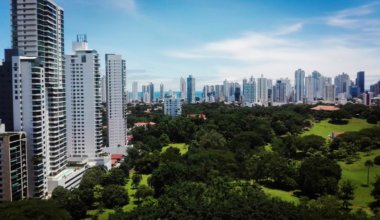
The 6 Best Hostels in Panama City, Panama
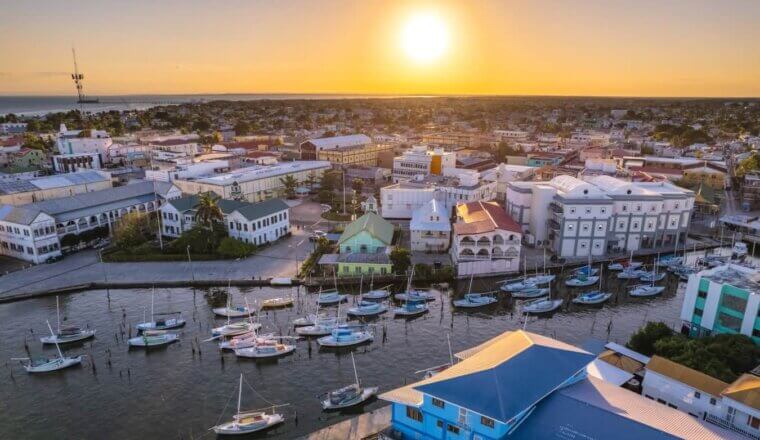
Is Belize Safe to Visit?

Is Central America Safe to Visit?
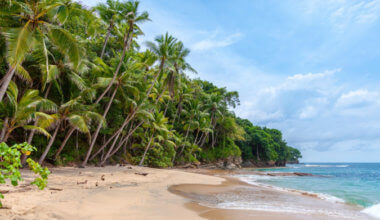
How to Get Around Central America on a Budget
Get my best stuff sent straight to you, pin it on pinterest.
- Where To Stay
- Transportation
- Booking Resources
- Related Blogs
24 Best Places To Visit in Honduras in 2024

Planning a trip to Honduras in 2024? Prepare yourself for this tropical paradise and Central America’s second-largest country. Honduras is full of hidden gems like gorgeous pristine islands, ancient ruins, lush rainforests, and picturesque mountains that attract about 2 million tourists annually.
Unfortunately the vast majority only set foot on the gorgeous Caribbean islands in North Honduras, but there are so many more beautiful places to see in Honduras.
All the recommendations, travel tips, things to do and places to visit in Honduras are based on my own experiences extensively traveling in Honduras. On my multiple trips I have seen a fair share about the good, the bad and the ugly which you will all discover in this travel blog.

Please let me inspire you to see a whole different world beyond the Bay Islands. However, when you travel to Honduras don’t skip these pristine tourist destinations either. Honduras has immediate access to the world’s second-largest barrier reef and, therefore, offers one of the best diving and snorkeling experience in the Caribbean.
The beauty of the magnificent landscapes in Honduras and the potential for limitless adventures have proven to be irresistible for the adventure traveler. But it is hard to spread the word about a country that has a pretty unstable image to those that have been fed with negative stories about traveling in Honduras.
Stay connected when traveling to Honduras and get yourself an e-sim card or a local prepaid sim card. Read everything about buying a sim card for Honduras in 2024 in my extensive guide.

More about safety issues in Honduras later. Lets start with this little video about all my recent adventures and latest Honduras travel tips to see with your own eyes how amazing it can be to travel to Honduras.
Now let’s look into all those amazing Honduras tourist attractions.
RELATED: 19 Best Places To Visit in El Salvador !
1. Roatan - Caribbean Island Vibes
No introduction needed Roatan, one of the Bay Islands, is without a doubt among the most beautiful places to visit in Honduras. It is the largest and most developed of all Caribbean islands belonging to Honduras.
This long, slim bay is a popular tourist place and a major port-of-call for cruise ships.
The gradual blossom in tourism is of course attributed to the Bay Island’s pituresque scenery and varied water activities such as diving, snorkeling, and swimming in crystal clear waters. Other places to go in Roatan are the Carambola Gardens and the Roatan Butterfly Garden .
West Bay Beach, one of the best beaches in Roatan, is a beloved place for tourists to stay. The main reason why it gets quite packed is that it ticks all the boxes – has crystal clear waters, swaying palm trees, pristine beaches for Instagram photos and plenty of shops, bars and restaurants. This place offers a complete Caribbean experience. This is the place to get find those laid-back island vibes when traveling to Honduras.
The eastern side of Roatan island is relatively distant and much more unexplored. If you want to get away from the touristy side than this is your best bid.
Where to stay in Roatan
Hotels in Roatan are not among the cheapest places to stay in Honduras. For the 5-star Ibagari Boutique Hotel you can easily pay $500 per night. But there are plenty of hotels with a 9+ review for under $100 per night: West Bay B&B , Pirate’s Den Hotel , Hotel Posada Las Orquideas .
On the East side of the island I can highly recommend you the following Roatan hotels: Marble Hill Farms and Camp Bay Lodge .
2. Utila - Picture Perfect Beaches
Welcome to one of the best places to go scuba diving in the world . Utila has a reputation of being much more moderately priced than Roatan and in fact it is one of the cheapest destination to get your scuba diving certification.
For this reason, Utila has gained popularity amongst young backpackers who are traveling the world on a budget. Finding cheap accommodation in Roatan is not that hard therefore. Utila is one of the most famous tourist attractions in Honduras especially those that are looking for great nightlife.
you may also like...

On top of that Roatan is simply a top attraction because of its world class white sand beaches. There are very few designated roads on the island and most of the areas aren’t developed. Access to some gorgeous bays and villages is by sea only.
Needless to say that diving and other water activities like swimming, snorkeling, kayaking, and paddle-boarding are among the top things to do in Utila, but there is more. Visitors also come here for hiking and horse riding.
However the number one reason people visit Utila is to enjoy the slow paced life on the island!
Where to stay in Utila
Accommodation is clustered around the much more developed east side of the island. This is also where you will find the boats coming in and the Utila Airport. The Mango Inn Resort and the Sea Eye Hotel - Tropical Building has good reviews and are under $100 per night.
3. Cayos Cochinos - Tiny Island Atolls
Cayos Cochinos, also known as Hog Islands, is a group of privately-owned islands, atolls and coral reefs that sits just 17km offshore from the Honduras mainland. It consists of two main islands and several smaller cays.
The two islands and the coral reefs that encompass them are part of a Marine Biological Reserve since 1994. They remain pristine thanks to their far-away positioning and troublesome access.
Cayos Cochinos is not the easiest place to visit in Honduras, but it is well worth the effort on a beautiful day.
There are no roads or automobiles on these gorgeous islands. They are only accessible by boat from La Ceiba, Roatan or Utila. This quintessential tropical haven provides a peaceful retreat for tourists who want to experience the natural beauty of Honduras without the disturbance of crowds.
There are plenty opportunities for snorkeling, diving, swimming and even some birdwatching activities for tourists. Most Cayos Cochinos day trips start from Nueva Armenia, about 1 hour East of La Ceiba.
Where to stay in Cay Cochinos
Most people visit Cayo Cochinos on a day trip as accommodation is very limited and expensive. It is hard to find a hotel online, but there are some Cayo Cochinos Airbnb’s available.
4. Copan Ruins - Ancient Maya Archeological Site

Dating back to 427 AD, the Copan Ruins are the most famous place in to see in Honduras after the Bay Islands. If you love history and nature then this is a must-see place for you. Copan Ruins is an ancient Mayan city discovered by Diego Garcia de Palacio in 1570. The ruins are listed as a UNESCO World Heritage Site since 1980 as they’re deeply symbolic and very important as a civil, political and religious epicenter of the Mayan history.
For more than 2,000 years, the town was occupied and controlled by the Mayan people but was later mysteriously deserted in the 10th-century. It wasn’t until the 19th-century that the site was dug up and still hasn’t completely been discovered.
Visitors today can explore the area and learn about the history of an ancient civilization. On-site is the Maya citadel that has portrait-style stone rocky monuments known as stellar, overlapping step-pyramids, and many numerous wrecked structures.
Hiring a guide is highly recommended as compared to Tikal in Guatemala, Copan Ruins is very detailed and there are many mystery to be explained and unfolded right in front of you.

When visiting Copan Ruins you can not miss the Cafe Via Via , a popular joint in the center of this laid-back town. Sample a bunch of craft beers and mingle with locals in this popular backpacker bar.
Another Honduras travel tip is to head up to one of the haciendas in the hills above Copan Ruins. Hacienda San Lucas , a 100 year old property converted into an Eco Lodge, is not only a place that serves delicious local food and has great views over the hilly countryside, it also offers accommodation.
One more thing to do when visiting Copan Ruins is to head over to Finca Santa Isabel - Welchez Coffee Farm . It is about 30 kilometer east of Copan Ruins on your way to Santa Rosa de Copan.

Where to stay in Copan Ruins
Right in the heart of this tranquil village you will find Hotel Marina Copan , in the corner of the main square. It has a lovely courtyard with a big swimming pool and attached bar, a great place to stay in Copan Ruins.
5. Macaw Mountain Bird Park - Honduras' National Bird

I wouldn't normally send you to a zoo or anything like that. No one wants to see caged animals, but visiting the Maca Mountain Bird Park in Copan Ruins is different. Straight in the beginning you get explained why you are looking at mostly caged birds and then you will understand.
The owner of the bird park an older American came here many years ago and dedicated his life to the utterly beautiful Scarlet Macaw, Honduras National Bird. The Macaw Mountain Bird Park is basically a rehabilitation and breeding centre to save this endangered bird specie. Hundreds of birds from all over the country are brought in and as much as they can they are released back into the wild.

It is extremely hard to breed some of the birds but they are some major success. When visiting Copan Ruins you will see with your own eyes why the Macaw Mountain Bird Park is such a major success, as the Scarlet Macaw is all over this ancient Maya city and these ones are wild.
See all my videos of my Copan Ruins adventures in my Instagram Highlights: Honduras 1 & Honduras 2 .
6. Santa Rosa de Copan - Coffee Plantations

Santa Rosa de Copan looks like an old Spanish colonial town, but it is only a little more than 100 year old and flourished because of the Tobacco Industry. Therefore visiting Flor de Copan Cigar Factory is one of the best things to do in Santa Rosa de Copan.
Other things worth visiting Santa Rosa de Copan are the surrounding coffee plantations and the agritourism opportunities. A great place to visit for a coffee plantation tour in Santa Rosa de Copan is Finca Seis Valles , they also serve great breakfast.
For a cool agriculture experience head over to Hacienda Montecristo . Fee baby cows, collect eggs between hundreds of chickens, ride horses, etc.

One of the cool places to visit in Santa Rosa de Copan is the local market. Go here for breakfast and try things like Atol Chuco, fermented corn or the local Tamales. Not my preferred breakfast but I recommend you to give it a go. Souvenir shopping in the local market in Santa Rosa de Copan is on point!
When visiting Santa Rosa de Copan you also have to try Madrasso, a sweet drink with alcohol. It is a kind of fruit punch / margarita, so sweet you can hardly taste the alcohol! :)
7. Mosquito Coast - Last Frontier: Jungle Meets Caribbean Coast
La Mosquitia is among other things home to the Rio Platano Biosphere Reserve and is one of Honduras’ least developed areas. Only the bravest, most adventurous, and most daring tourists visit the Mosquito Coast due to the harsh living conditions and lack of proper transportation in this very rural location.
Unfortunately on my last trip to Honduras I was unable to visit this almost impossible to travel last frontier. But because of its uniqueness I put it high on the list of best places to see in Honduras. Next trip I will definitely give it another try.
This area of swampy mangroves, unblemished rainforests, and virgin shorelines makes up almost a fifth of the entire country but is almost impossible to travel around. There are basically no roads and 99% of the area consists of dense jungle.
Visiting the Mosquitia is a good way to get away from the savage modern world and enjoy incredible natural sights, fantastic wildlife, and a thriving native culture. There is no phone reception and zero signs of the modern world. When visiting the Mosquito Coast you go into survival mode, but visiting isolated villages in this part of the world must be one of the coolest travel adventures ever.
The Rio Platano Biosphere Reserve located on the Mosquito Coast is the largest protected area in Honduras with more than 5,250 square kilometers. It is one of the few tropical rainforests left in Central America.
In 2011, UNESCO listed this massive jungle land on their list of World Heritage in danger. Sadly, activities like logging, illegal hunting as well as drugs trafficking continues to threaten the reserve’s fragile inhabitants. The reserve is home to a rich diversity of wildlife including howler monkeys, scarlet macaws, toucans, giant leather turtles, and tapirs.
The most famous thing to do in La Mosquitia is a multi day rafting trip down the Rio Platano and with multi-day trips I mean 8 to 12 days! Are you ready for an adventure then the Rio Platano Biosphere Reserve is one of the best places to go when visiting Honduras.
A company that organizes adventures trips to the Mosquito Coast is Omega Tours .
8. Rio Cangrejal - La Ceiba's Outdoor Heaven

Among Honduras’ top destinations for adventurous thrill-seekers is Rio Cangrejal. It’s a prime spot for kayaking and rafting regardless which month you visit Honduras. It is located only about 20 minutes away from La Ceiba.
The long extensions of white water rapids race around the boulders and plunge over drop-offs providing lots of adrenaline rushes for tourists who enjoy water activities. Four different sections of the river are marked depending on the skill level. They range from amateur to experienced.
Various tour companies operating in the area offer organized tours with guides to help beginners learn all the necessary basics of kayaking and rafting.
I went rafting with Omega Tours and had a blast. Despite the heavy rains we went out with the team to make the most of the day and it was absolutely epic rafting down Rio Cangrejal.
Where to stay in Rio Cangrejal
I recommend you to stay around the river, in the middle of the jungle. Omega Tours Eco-Jungle Lodge scores a 9.5/10 out of more than 70 reviews and I personally gave them a 10/10 as well. Their restaurant serves delicious organic and healthy food. I was not only a big fan of their remote location, also of their meals!
9. Pico Bonito National Park - Hiking & Waterfalls
The Pico Bonito National Park is also located just right outside La Ceiba in the Nobre de Dios mountain range. If you want to visit Pico Bonito I recommend you to combine it with visiting Rio Cangrejal.
Surrounded by Dole pineapple plantations, cattle farms, and the Rio Santiago and Cangrejal rivers there is an iconic mountain peak where the national park is named after. The peak of the mountain inside the Pico Bonito National Park goes up to a height of 2,435m above sea level.
Thanks to its lush plant-life and varied wildlife, Pico Bonito is considered to be one of the best spots to go in Honduras for (multi-day) hiking trips. Climbing Pico Bonito is very though as it will lead you through very thick vegetation. Always wanna wander through the jungle with a machete, arrange a tour into Pico Bonita National Park and make your way up to the top.
Tours into Pico Bonito National Park can also be arranged through Omega Tours.
10. Villa Soleada - Volunteering in Honduras

This is not a standard place to visit, but only for those travelers who like to give back when visiting Honduras. If you are looking to volunteer in Honduras then keep on reading.
Villa Soleada is a charity project run by a Japanese American that 15 years ago came to a no name village near El Progresso to volunteer. After staying for 1 month he decided to dedicate his life to these people and turned one of the most violent villages of the country into the most educated one in Honduras.
I volunteered here for 1 week with the Students Helping Honduras organization. There is a bilingual school and an orphanage. Every helping hand is welcome and it would be an honor if after reading this Honduras travel blog you decide to look into this project.
Volunteering one week at Villa Soleada left a deep impression and made me even more grateful for the thing I have in life. Growing up in a village in Honduras is hard and we mostly don’t realize how fortunate our lives are until we see the opposite.
The project is run by @shinfujiama , check out his Instagram and be inspired by his amazing story changing his life drastically moving into the slumps of Honduras dedicating his life building a new village with over 40 homes and takes care about 25 orphans at the same time.
For more heartbreaking videos of the people of Villa Soleada I invite you to look at my Instagram highlights: Honduras 3 and learn even more about this amazing project.
11. Cusuco National Park - Off The Beaten Path Hiking
The Cusuco National Park is yet another well-conserved remote area of Honduras that’s located east of San Pedro Sula. The park covers an area of about 243 square kilometers on the border with Guatemala. Most of the roads leading to the park are pretty inaccessible making it challenging for tourists to get here.
If you’re looking to make the most out of visiting Cusuco National Park, hire a local guide to help with navigating the forest and see the wildlife here. The best time to visit is between April and June, early in the mornings, to spot wildlife.
A trek up the mountain peaks gives stunning views of the surrounding areas. Some of the mountain peaks are above 2,000m and if you are looking for a place to walk above the clouds this is one of them. These are the coordinates of the Cusuco National Park visitor center: 15°29'46.0"N 88°12’42.0”W. It takes a little less than 2 hours to get here from San Pedro Sula, but if you are looking to go off the beaten path in Honduras this is your destination.
Bird watching is one of the main tourist attractions here. There are more than 260 bird species in this park including parrots, toucans, and enigmatic quetzals. The quetzals are some of the loveliest tropical birds. The park’s exceptional biodiversity also includes threatened species of frogs and salamander, jewel scarab beetles, and Baird’s Tapir.
12. Jeannette Kawas National Park - The Lagoon of Playa Miami

Jeanette Kawas National Park was initially known as Punta Sal National Park. It was later renamed Jeanette Kawas after an environmentalist who fought passionately during her life to preserve the rich ecosystems of Punta Sal.
This beautiful wilderness area is accessible from land and sea. It stretches along the Caribbean coast west of the Garifuna beach town of Tela. Wildlife is abundant and includes numerous rare species. Visitors may encounter dolphins, howler monkeys, and a large variety of tropical birds. The park also supports diverse habitats from ranging tropical jungle, mangroves, wetlands, to pristine beaches and coral reefs.
The two best places to visit in Jeannette Kawas National Park are Playa Miami and Punta Sal. Miami is a sandy bar peninsula that is less than 100 meters (300 ft) wide. On one side there is the Caribbean sea and flanked on the other side by a tropical lagoon with rainforests and mangroves.
The best thing to do in Playa Miami, Honduras is to watch the sunset from a boat tour on the lagoon after you enjoyed delicious fresh seafood for late lunch.
Where to stay in Tela

Tela is the nearest town to Playa Miami and Punta Sal. It is a popular and vibrant holiday destination in Honduras due to its endless Caribbean beaches. There are two popular hotels in Tela with good reviews: Hotel Bahia and Hotel y Cabanas Playa Caribe . There is a 5-star in this area too: Indura Beach & Golf Resort Curio Collection by Hilton .
I recommend you to go off the beaten path and stay at Playa Miami at the end of peninsula. There is basically nothing around there apart from a couple huts on the beach. Imagine waking up to the sunrise over the Caribbean Sea with the chirping birds from the lagoon behind you.
Life is all about making memories, make sure your trip to Honduras becomes one of them!
13. Punta Sal - Remote Beaches

Punta Sal is also part of the Jeannette Kawas National Park and was once a paradise for pirates. Today, the area is a protected territory thanks to its wildlife and natural charm.
Punta Sal can only be reach by boat. Its remote location guarantees you deserted untouched beaches. It is one of the best places in Honduras to go snorkeling, but hiking and wildlife are popular activities too.
On your way to Punta Sal by boat from the Bay of Tela you will very likely encounter dolphins, then drive through the mangroves to spot sea turtles and end up on the stunning beach of Cocalito.
You can also opt to visit one of the remote living traditional Garifuna villages made up of thatched huts and learn more about the local culture.
14. Comayagua - Colonial village Former Capital

Welcome to the former capital city of Honduras: Comayagua.
This town sits at a height of 594m above sea level and is situated along the main road between Tegucigalpa and San Pedro Sula. It’s one of the most prettiest towns in Honduras and is well known for its Spanish colonial architecture.
The best places to visit in Comayagua are all downtown and include the Spanish Baroque Cathedral, the first university in Central America, and several churches. Most of these were constructed in the 16th-century but have been repurposed to their original state.
In the Comayagua cathedral you will find one of world’s oldest still working clock. It is located in the Cathedral clock tower nowadays and was brought to Central America as a gift by the king of Spain in 1620, but was constructed somewhere around 1100. When visiting Comayagua this is a must-see place. Visitors can go up to clocktower, ask inside the cathedral.
The quiet colonial village of Comayagua once played a very significant role in politics and religion. Nowadays it is mainly one of the tourist attractions in Honduras where tourists come to see the beautiful architecture and partake in the catholic heritages.
Comayagua is one of the best places to visit to enjoy the Easter celebrations. During the week between Palm Sunday and Easter Sunday, the town bursts into a flurry of activity and color with its street carpet tradition. The carpets are made with colored sawdust and other natural materials like rice and flower petals. The elaborately designed artistic carpets depict Biblical figures and events that led to the crucifixion of Jesus.
If you are looking for a local restaurant in Comayagua I can recommend you Carnitas Schole #2, located close to the main square. It serve delicious mixed grill barbecue. A simple restaurant with great food for a good price.
For more videos of my adventures in and around Comayagua have a look at the last part of my Honduras 3 Instagram highlights .
Where to stay in Comayagua
I stayed in the Hotel Antigua Comayagua for around $80 per night. It has a lovely courtyard with a swimming pool, although I didn’t make use of it as I only slept here. The WiFi was good. Hotel Antigua Comayagua has the highest rating: 8.5/10 out of all the hotels in Comayagua.
15. Ajuterique - Charming Village With Amazing Murals

A sleepy but lovely village only about 20 minutes away from Comayagua. Come here to unwind in the rolling hills around the town. There is a Instagrammable plaza with an umbrella street and plenty of coffee places.
But the number one reason why Ajuterique is listed as one of the Honduras tourists destinations are the numerous murals. They are scattered all around town and pretty impressive. Also take a photo with the Ajuterique sign of course.

When visiting Ajuterique you must try the local drink XXX. It looks like a nice mango juice, but it does not taste anything like that. It is a fermented drink and a weird experience in your mouth I can tell you.
My Instagram highlight Honduras 4 starts with travel videos from Ajuterique.
16. La Esperanza - Traditional Mountain Village

This mountain village is a famous Honduras tourist attraction because it has the coolest climate in the country. Obviously it is not only the moderate temperatures that lure a lot of tourists to La Esperanza.
There are a lot of cool things to do in La Esperanza apart from scrolling through this typical charming and colorful Central American village and visiting the cathedral. Walk up to La Gruta, a shrine/cave with great views overlooking the village.
La Esperanza is the national capital of Honduran Folklore and is where the El Grande de Grandes festival is organized every year. If you miss this festival then I recommend you to visit a show performed by Oro Lenca. Have a look at the Oro Lenca website to see where they perform.
Also when visiting La Esperanza make sure you eat at La Hacienda Lenca and try their special mushrooms. The only grow a couple days a year after heavy rainfall on high altitudes. A dish truly worth trying when visiting Honduras.
Where to stay in La Esperanza
One of the best places I stayed on my trip to Honduras was at Las Cabañas de Carlos. Tucked away in the forest about 5 minutes out of town you will find 4 wooden cabins. A perfect romantic getaway for a couple traveling to Honduras. The best way to make a reservation is to contact them through their Instagram account .
Sip wine next to the campfire in a sweater and covered by a blanket and have your breakfast surrounded by chirping birds. Los Cabañas de Carlos is the best place to stay in La Esperanza. It sincerely is one of my best Honduras travel tips.
17. El Mirador Waterfalls - Rappelling, ATV, Dirt Bike

The adventure traveler needs to stay an extra day in La Esperanza because they can not miss the El Mirador waterfalls and all the cool adventures around.
There are multiple activities here like: hiking, MTB tracks, dirt bike, ATV riding. The best activity here though is rappelling down the more than 70 meters high El Mirador waterfall. Definitely one of the coolest things to do in Honduras for me.
See the video for more about this crazy adventure. My tour was organized by Mitos Hostal. For more videos about La Esperanza and the El Mirador Waterfall check out my Instagram highlights Honduras 4 and Honduras 5 .
18. La Campa - Highest Zip Line In Central America

La Campa itself is a sleepy village in the highlands of Western Honduras, not far from the city of Gracias. There is very little action going on, but the number one reason you are visiting La Campa must be the amazing zip lines.
There are 6 zip lines across a deep canyon and the highest zip line is almost 400 meters above the ground. It was an amazing adventure and definitely among the most epic things to do in Honduras. To get to La Campa it is best to take a taxi from Gracias, but prepare yourself for a bumpy ride on unpaved roads through remote highlands.
The nearby biggest town Gracias is a pretty developed village with hot springs. When visiting Gracias make sure to visit the Fortaleza San Cristobal, a fort on top of a hill with amazing views over the town. From here you can also see the highest mountain in Honduras: Cerro Las Minas.
Don't miss out the videos of this amazing adventure in Honduras on my Instagram highlights.
Where to stay in Gracias
I stayed at Hotel Villa de Ada in the countryside. They have two swimming pools and 2 huge ponds full of fish and turtles, it was a very nice place. If you have a little more budget then definitely stay at Casa Hotel Celaque, a stunning place in the hilly countryside with lovely rooms and amazing food. One of my favorite places to stay in Honduras. You can also come here for dinner. Contact them through their Facebook Page .
19. Lake Yojoa - Beautiful Scenery

Lago de Yojoa is the largest natural lake in Honduras, covering an area of 79 square kilometers. It’s found in a cavity that was formed by volcanoes a long time ago. The strategic location of the lake along the highway between San Pedro Sula and Tegucigalpa makes accessing the lake easy and therefore it is a popular tourist attraction in Honduras.
Lake Yojoa is a perfectly located pitstop for people traveling between the two largest cities in Honduras.
The lake is a hot spot for many tourists, especially birders. There are about 480 bird species spotted here including whistling ducks, northern jacanas, and cranes.
Apart from birdwatching and fishing, there’s so much to do and see at Lake Yojoa. Tourists may also enjoy taking dips in the nearby hot springs, hikes along the shore line, exploring the underground cave system, hiking up to the stunning waterfalls, and touring the nearby coffee plantations.
Where to stay in Lake Yojoa

If you are looking for unique places to stay in Honduras I can recommend you the Agualpa Domos & Cabanas . The hotel consists of little white dome shaped bubbles and is located on the waterfront of Lake Yojoa. There is the opportunity to eat in an old airplane that is located in the garden and there is a big outdoor pool.
20. Pulhapanzak Waterfall - Amazing Outdoor Adventures
Often rated as the best waterfall to visit in Honduras and I must say it didn’t disappoint. The Pulhapanzak waterfall is near Lake Yojoa and is enormous. Its surrounding scenery is beautiful too. On top of the waterfall the water is calm, you can swim, sunbath and have drinks and food at restaurants along the river side.
If you are up for an adventure then don’t miss the ziplines that cross the waterfalls several times. Of course the La Campa zip line is unbeatable, but this one is good fun too.
What makes Pulhapanzak one of the most adventurous places to visit in Honduras is the special bottom of the waterfall tour. Highly recommended if you are looking for the ultimate adrenaline rush. Accompanied by a guide you go to the bottom of the waterfall and walk behind it. The power of the water is unfathomable.
Truly the one of the craziest things to do in Honduras. I was stunned an pumped with excitement after the tour. You can arrange this tour and the ziplines on the spot. Wanna see all the videos of this amazing place to visit in Honduras then head over to my Instagram Highlights Honduras 7 .
21. Celaque National Park - Highest Mountain in Honduras
Looking for the highest mountain in Honduras? Cerro Las Minas is located in Celaque National Park, nearby Santa Rosa de Copan in the Lempira department.
Hiking up Cerro Las Minas is not easy and will take up to 5 hours. A popular thing to do in Celaque National Park is to camp above the clouds, just underneath the summit of Honduras’ highest mountain.

Even if you are not ready to hike up to Cerro Las Minas it is worth visiting Celaque National Park. There are numerous moderate hiking trails through the forest, hidden waterfalls and lookout towers.
22. Museum of National Identity - Tegucigalpa
Traveling in Honduras is amazing, but let me be very honest with you: Tegucigalpa is probably my least favorite city in Latin America. I spent about a week there and could NOT find the charm, cool things to do or fun places to visit. However may you end up in Tegucigalpa I recommend you to visit the Museum of National Identity.
For a trip down Honduran history, make a stop by the Museum of National Identity. This fantastic museum showcases an excellent collection of Honduran and international art. The fascinating art found here tells a lot about the country’s captivating history. The museum is also home to the Palacio De Los Ministerios which is a comprehensive National Heritage building.
A major interesting attraction at the museum is the virtual tour of the Mayan Acropolis of Copan. This has proven to offer a great primer for tourists who are yet to visit the site and a great recap for those who have already been to the Mayan Acropolis of Copan.
Where to stay in Tegucigalpa
If you are looking for comfort try these 5 star hotels: Hotel Real Intercontinental Tegucigalpa , Clarion Hotel Real . For more moderately priced hotels with great reviews have a look at: Hotel Plaza San Martin or Casa Sur for only around $40 per night.
23. La Tigra National Park - Jungle Vibes
La Tigra National Park is perched at an altitude of 2,270 meters about 20km from Tegucigalpa. The park is one of the few cloud forests in the world (only 1% of the forests in the world are considered cloud forests).
This immaculate national park is home to monkeys, pumas, and ocelots. If you’re lucky enough you’ll catch a glimpse of these mammals although they can be quite hard to see. The park is also a haven for more than 200 bird species including trogons, toucans, and elusive quetzal.
There are well-marked serpentine trails throughout the dense jungle where bromeliads and orchids thrive. Because of its proximity to the capital it is one of the most popular tourist places in Honduras.
24. Guanaja - Secret Island Escape
The last place on this list of the most beautiful places to see in Honduras is one of my secret travel trips: Guanaja.
Guanaja is the most remote Caribbean island in Honduras, a delightfully charming spot that offers its visitors an idyllic escape away from the mainland. Travel to Guanaja to either relax or engage in fun outdoor activities.
The island’s temperatures remains warm all through the year so tourists can visit any time of the year. The levels of visibility of the ocean waters surrounding the island and the presence of the coral reef make Guanaja an ideal tourist destination in Honduras for snorkeling and diving.
Other fun activities that that tourists can take part in include hiking, jungle trekking, exploring the lovely on-site waterfall, souvenir shopping, eating fresh seafood, and visiting local villages.
I would be proud if you decide to travel to Guanaja after reading this blog, it is a truly hidden gem in Honduras.
Is Honduras safe for tourists?
Therefore let’s quickly chat how safe Honduras is for tourists. Despite all the stories you will find on the internet I am going to say: YES, it is safe to travel to Honduras in 2024.
Recently I drove more than 3,000 kilometer through this relatively little country and did not come across anything that made me feel uncomfortable. I visited some standard tourist attractions in Honduras, but also went off the beaten path. Visited cities like San Pedro Sula, rented an apartment for a week in Tegucigalpa and volunteered in a poor neighborhood near El Progresso.

So all my impressions are based on my OWN EXPERIENCES, conversations with locals and the advice of travel agencies.
So will visiting Honduras put your life at risk? You gotta be kidding me! :)

Honduras has a bad reputation when it comes to political unrest, petty crime, violent crimes, and a very high homicide rate. Despite all this, the majority of the locals are very laidback and friendly. But just like anywhere else in the world, there are some shady areas that you should avoid on your trip to Honduras.
Some people might be tempted to stay away from Honduras because of its reputation as a dangerous country. It‘s definitely not the safest country in the world but it’s totally okay for tourists. Just make sure that you always keep your valuables concealed and beware of your surroundings at all times, just like in other places.
If you use common sense and aren’t that ignorant tourist, visiting Honduras will be pure joy!
Things to eat in Honduras
The most typical local dish in Honduras is Baleada which is a decent-sized wheat flour tortilla that’s folded and filled with beans. Some chefs may incorporate cream, cheese, and scrambles eggs into it. Others customize them with meat, plantain, avocado, hot sauce, etc. Freshly fried plantains, chicharrones (fried pork) and pupusas (thick corn tortillas with different fillings) are other common things to eat in Honduras.
Best time to visit Honduras
The best time to plan your trip is between November and March because then it is dry season. It can get quite hot, but not uncomfortably. On the other hand, the cheapest time to travel is during the rainy season which is usually between May and October. Generally, Honduras is quite affordable as compared to other tourist destinations in other parts of the world.

Honduras is truly a diamond in the rough. It’s bound to dazzle you with its natural beauty, diverse wildlife and amazing travel adventures. From whitewater rafting to hiking and exotic wildlife viewing to ancient Maya ruins there’s no end to the history, beauty, fun and adventure in Honduras. You will love this wonderful Central American country after exploring the amazing places listed above.
Honduras has a diverse landscape with forested hills, lowland marshes, and untouched jungles rich with howler monkeys, bats, armadillos and uncountable bird species. The beautiful Caribbean Sea gives tourists a chance to swim with dolphins, whale sharks and manatees.

I hope all the above Honduras travel tips were helpful and you will be able to get to see some of these amazing places to go. Let me know if you have any more questions by leaving me a comment below.
Curious what it looks like trying to visit every country in the world ? Go check out my Instagram account @traveltomtom and follow along. As of January 2024 I have visited more than 155 countries, so still a long way to go.
View this post on Instagram A post shared by Adventure Traveler & Blogger (@traveltomtom)
Enjoy your trip to Honduras!

- central america
- tegucigalpa

Honduras Travel Guide
Looking for an in-depth Honduras travel guide ?
Then you’re in the right place!
Located in Central America, Honduras is a country of lush rainforests, beautiful beaches, and deep history.
There really is something for every kind of traveler in this country of just over 43,000 square miles.
And while the country may have a reputation for being dangerous, don’t let that deter you from checking out this travel gem.
Beach lovers will definitely want to check out the Bay Islands, located just off the east coast of Honduras. The region’s three main islands — Utila, Roatan , and Guanaja — offer a laid-back vibe, white sand beaches, and plenty of nightlife for those who like to party.
The islands are also home to breathtaking coral reefs and many different types of fish, making them a diver’s or snorkeler’s paradise. If you’re looking for a beach experience away from the pristine resorts of the easter islands, Honduras’s Caribbean Coast is the place to go.
Honduras was also once a major hub of Mayan civilization and there are plenty of historic ruins to explore throughout the country.
One of the most popular sites is the Copan Ruins , a UNESCO World Heritage Site located just a few miles from the Guatemala border.
Here, you can check out a Mayan citadel and learn more about this great civilization. Throw on some comfortable shoes, as this site has a lot to explore!
The country’s more rural areas are places of unspoiled natural wonder, with great sites for outdoor explorers — especially hikers wanting to explore some of the world’s best hikes . Do some rafting along the Cangrejal River, hike through the Moskitia Forest, and check out the serene Lago de Yojoa.
Any way you slice it, there’s so much to see in Honduras and no two trips will look exactly alike!
Keep reading to dive into resources that will help you with planning a trip to Honduras, a destination that should be mentioned in every Central America travel guide !
Note: This ultimate guide to Honduras travel contains affiliate links to trusted partners!

Honduras Map
Use this Honduras travel map to begin planning your trip to this incredible country!
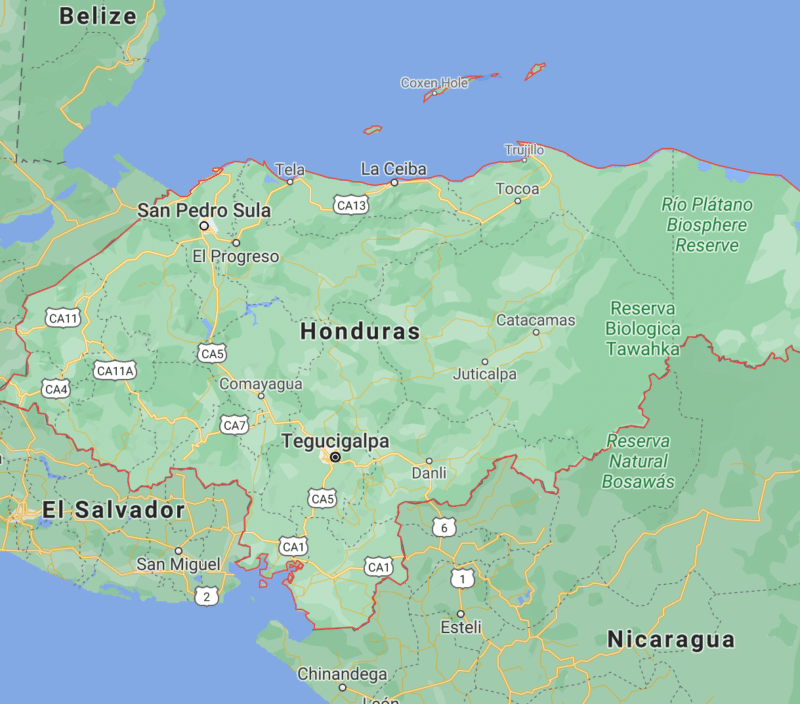
Click here for an interactive Google Map version of the above graphic.
Honduras Travel Advice
Plan the perfect trip to Honduras with these travel guides.

Exploring The Caribbean Side Of Honduras On Roatan Island

Copan, Honduras: An Amazing Day Exploring Mayan Ruins In The World’s Most Dangerous Country

From Solo To Sidekicks: Notes On My Central America Group Travel Experience
Top Honduras Tours
Explore the local culture with the help of a Honduras tour guide !
- Roatan Shore Excursion: Monkeys, Sloths, and Snorkel Adventure
- Roatan Ziplines Sloth Park and West Bay Beach Break
- Roatan Barrier Reef Snorkel & Monkeys/Sloth Sanctuary from French Cay
- Day Trip to La Tigra and El Picacho Park from Tegucigalpa
- Roatan Shore Excursion: Kayak Harbor Adventure and Reef Snorkel from French Harbour
- Day Trip to the Mayan Ruins of Copan from San Pedro Sula
Renting A Car In Honduras
Need a rental car for your Honduras trip?
Use Discover Cars to quickly compare your car rental options.
Honduras Hotels
Click here to browse hotels in Honduras !
Prefer self-contained stays?
Click here to check out unique local rentals!
You can also use this map to search for local stays:
Honduras Travel Insurance
It doesn’t matter if you’re traveling solo or with a group on a Honduras tour. When visiting Honduras — or any other country in the world — make sure to get travel insurance to protect your health and safety.
In my opinion, the best travel medical insurance for travelers is SafetyWing as they’ve got a large network and offer both short-term and long-term coverage — including coverage if you’re traveling for months as well as limited coverage in your home country).
Additionally, SafetyWing is budget-friendly and offers $250,000 worth of coverage with just one low overall deductible of $250.
With coverage, you’ll have peace of mind as you embark on your Honduras itinerary.
Click my referral link here to price out travel insurance for your trip in just a few clicks .
Honduras Travel Guide FAQ
Below, find answers to frequently asked questions about traveling Honduras .
Q: Is it safe to vacation in Honduras?
While crime is very much a reality in Honduras, the country is generally pretty safe to visit. There are certain areas to avoid due to higher crime rates, including municipalities along the north coast and in the central part of the country.
Most experts suggest avoiding Gracias a Dios department; its remote location and high level of drug trafficking make it particularly dangerous for travelers.
On the other hand, the Bay Islands, Copan Ruins, and other areas popular with tourists have a much lower crime rate and have a more robust law enforcement presence.
Keep alert and understand how to avoid pickpockets to protect yourself from petty crime in these areas, but know that more serious violent crime is not as common.
Q: Is Honduras expensive to visit?
Honduras is a very affordable place to visit. The average traveler should budget about $29 USD per day for meals, accommodation, transportation, and other expenses while in the country.
Accommodation rates are a bit more expensive around the coast, so keep that in mind.
Flights will likely be your biggest expense for this country. Round-trip flights from the U.S. generally cost around $400-$500 USD depending on the airline and departure destination, though you can find some great deals if you shop around.
Q: What do I need to know about traveling to Honduras?
One thing to know about Honduras is that the country’s poverty rate is very high. Many of the people you’ll encounter in the country are likely struggling to get by. Be a conscious visitor in Honduras and tip well, shop local, and don’t haggle too much with merchants.
Also, be sure to keep cash handy while in Honduras. Many businesses do not accept credit cards and working ATMs are scarce, so plan to get plenty of cash — ideally in the local currency — before you go.
Q: What are some travel tips for people visiting Honduras?
Leave plenty of time when traveling via ground transportation in Honduras. Local taxi and van services don’t always run on time, so be sure to work any possible delays into your itinerary.
While English is commonly spoken on the Bay Islands , Spanish is the national language of Honduras and most Hondurans only speak Spanish. Learn a few words and phrases before your trip to help you get by and show respect for the locals. Luckily, Spanish is often one of the easiest languages to learn for English speakers .
The country’s climate makes it a particularly welcoming environment for mosquitoes, many of whom carry diseases like malaria and dengue.
Malaria vaccinations, while not required by the Honduran government, are highly recommended. You can get vaccinated and acquire any medications you may need for your trip at your local doctor’s office.
And be sure to pack plenty of insect repellant and cover-up in particularly damp areas.
Q: What is the best place to visit in Honduras?
No visit to Honduras is complete without a trip to the Copan Ruins ! Designated a UNESCO World Heritage Site, this area was once the center of Mayan civilization in the Copan Valley.
Explore the Mayan citadel and stone portraits throughout the site to get a sense of what life was like in the area thousands of years ago.
While there, you can visit the Museum of Mayan Sculpture for even more insight into the artifacts found among the ruins.
Q: Do I need a visa to visit Honduras?
Citizens of the United States, Canada, United Kingdom, Australia, and the European Union do not need a visa to visit Honduras for less than 90 days. Visitors from these countries will need to show a valid passport and proof of a return flight upon entry into the country.
It’s recommended to view your country’s Honduras International Travel Information page for the most up-to-date information on entry and exit requirements. You can also contact the Honduras Embassy.
Q: Are credit cards accepted in Honduras?
While credit cards are sometimes accepted — especially Visa and Mastercard — many establishments only take cash, so make sure to have that on hand.
Moreover, it’s smart to bring two ATM cards in case you run into an issue.
Q: What is the best time to visit Honduras?
While Honduras is a year-round destination, the dry season is between December and April.
Q: What months are summer in Honduras?
Summer in Honduras runs from November to April.
Q: Can you drink tap water in Honduras?
It is best to avoid drinking the tap water in Honduras.
Q: What is the hottest month in Honduras?
The warmest months in Honduras are typically April and May.
Q: What is the local currency in Honduras?
The local currency in Honduras is the Honduran lempira.
What would you add to this Honduras travel guide?

Pin for later: Honduras Travel Guide
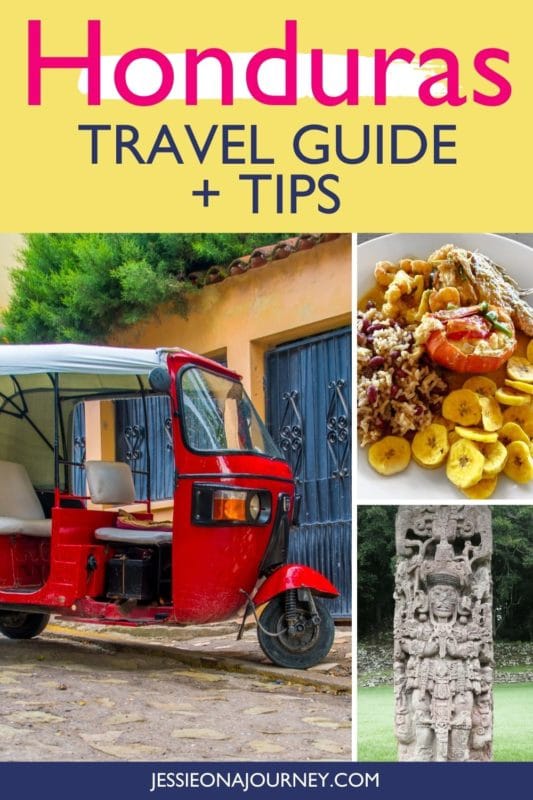

Touropia Travel Experts
Discover the World
17 Top Attractions & Things to Do in Honduras
By Jamie Gambetta Last updated on March 3, 2024
Located in Central America, Honduras is a tropical paradise attracting many tourists every year to its gorgeous islands, lush rainforests and picturesque mountains.
With its immediate access to the world’s second largest barrier reef, Honduras presents some of the best diving and snorkeling opportunities in the Caribbean. It also has a collection of biosphere reserves, national parks and marine reserves. All combine to protect and showcase the country’s astounding natural habitats. Add in some easy access and your days lounging by the beach can easily be balanced by epic outdoor adventures.
Not far from these memorable locations are equally splendid coffee plantations. These are surrounded by quaint small towns where indigenous culture runs strong. Elsewhere, old colonial settlements established by conquistadors maintain amazing heritage and architecture.
What’s more, there are many tourist attractions in Honduras like ancient Mayan ruins and festive celebrations. From whitewater rafting to hiking and exotic wildlife viewing, there is no end to fun things to do and adventure here.
Map of Honduras
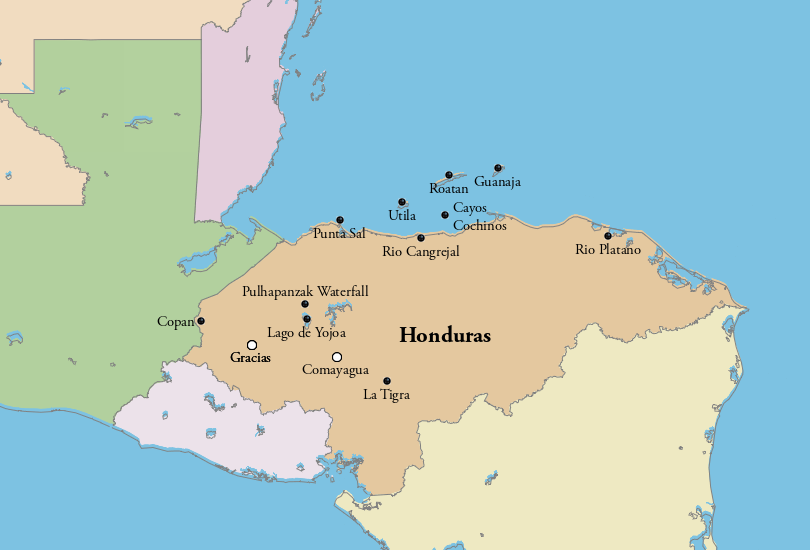
17. Pulhapanzak Waterfall
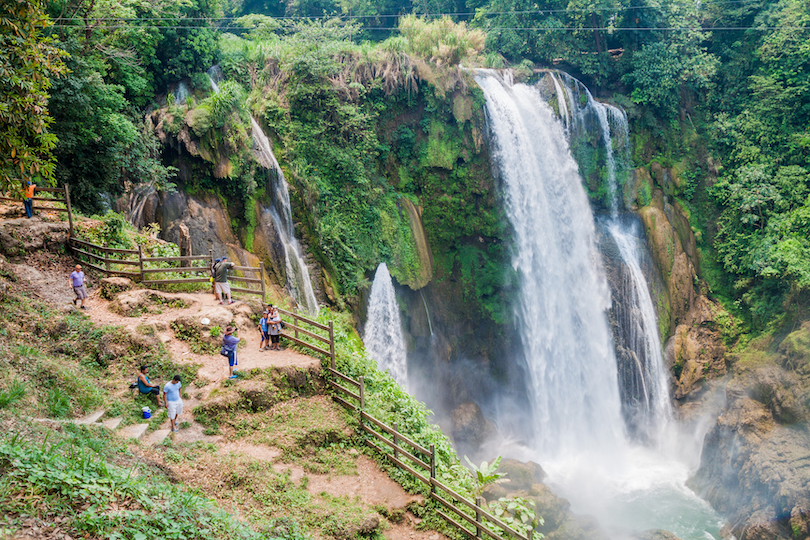
Tumbling over 40 meters, Pulhapanzak Waterfall is the best in Honduras. Seeing the falls is an easy day trip from San Pedro Sula. The falls are surrounded by beautiful rainforest making the trek all the more meritorious.
Although this is one of the best places to visit in Honduras, guides are required for this adventure. The falls are the highlight of a privately run area. The trek to the falls follows an, at times, challenging path but you’re immediately rewarded once they come into view.
The veil-like falls bounce down the rockfall where green vegetation clings for dear life. It’s utterly picturesque and with the additional fun of a swim or zipline, the falls promise to be one of your trip highlights.
16. Guanaja
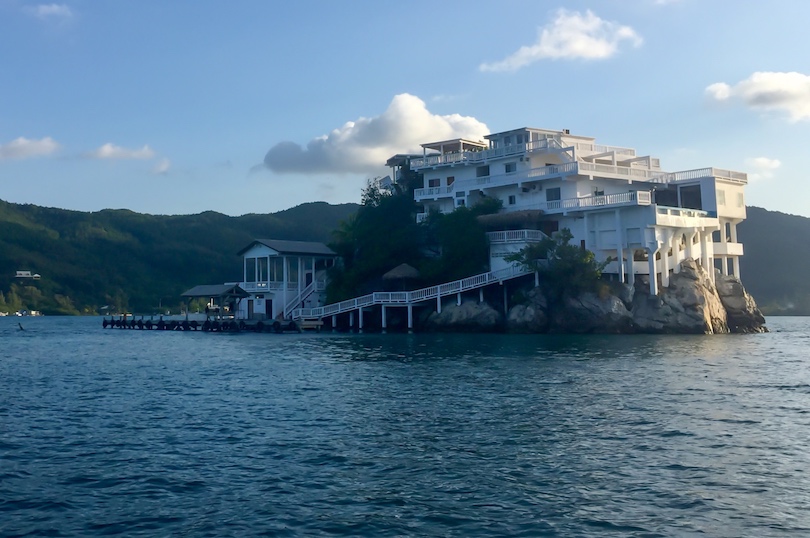
One of the three main isles in the Bay Islands, Guanaja, is an island of rolling hills and pristine shorelines. Roatán is the most popular of the three, making Guanaja a peaceful place waiting to be explored.
The island is enveloped by a wonderful coral reef. This makes spending days by the turquoise sea and snorkeling or diving an easy decision.
Away from the beaches, get among the Caribbean pine that has grown all across the island. The unspoiled terrain and lack of major developments make the island a gem to explore. Hiking trails snake throughout, leading to stories and experiences had by few who come to Honduras.
15. La Tigra National Park
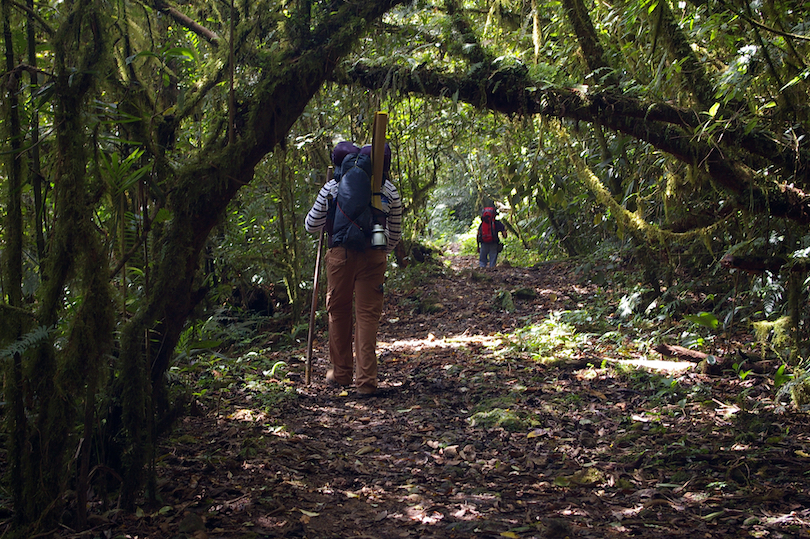
Not far from Tegucigalpa, La Tigra National Park sits high in the Central American Cordillera. It’s the oldest national park in the country and one of the most captivating.
At over 2,000 meters, this unspoiled wilderness is a welcome escape to the warm, lower altitudes. The landscapes fit this change in temperature and you can explore this on one of the many hiking trails.
The main trek is around 6 kilometers and is called the Sendero Principal. It takes you further into the mountains on an intermediate hike. You’ll have the chance to spot local wildlife and the park is renowned for its bird watching. There have been 350 species identified here.
14. Gracias
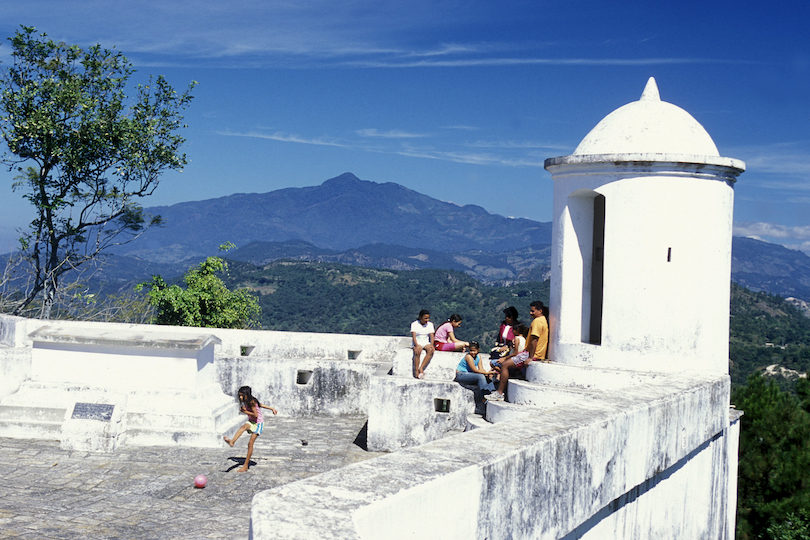
After weeks in the mountains, conquistador Juan de Chavez finally descended back into the valley. When he did this, he discovered flat open land. He was so thankful that he named the area Gracias. Today, it’s one of Honduras’ enduring colonial towns.
Once the capital of all of Central America, Gracias still has significance some 500 years later. This is because of its collection of astounding colonial architecture, the surrounding Lenca villages and close access to national parks.
The original town grid, while redeveloped, has kept the same layout for centuries. This allows you to retrace ancient footsteps as you wander by modern chic cafes and beautiful whitewashed homes on your way to the town’s highlights. This includes Museo Casa Galeano and the El Fuerte de San Cristobal. The latter is a historic fortification.
13. Gumbalimba Park
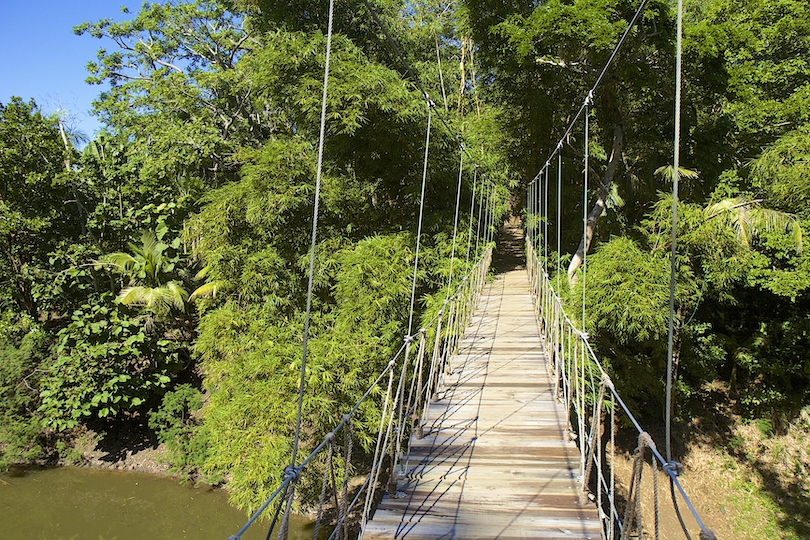
In the Bay Islands, on Roatán, Gumbalimba Park is an untamed world filled with sloths, white-faced monkeys, roaming iguanas and macaws. Since 2003, this private, eco-adventure park has been taking guests on a thrilling journey.
This journey is a mix of animal encounters and eco-tourism. But also a lot of classic fun, including their on-site pool, animal interaction area, a museum, gorgeous gardens and its very own waterfront.
This smorgasbord of activities makes Gumbalimba Park great for traveling families. The museum boasts pre-Columbian artifacts, while from the waterfront you can go for a snorkel and see what lies below. However, the real thrills come from the free roaming animals which meander about the park and could lie behind any corner.
12. Cayos Cochinos
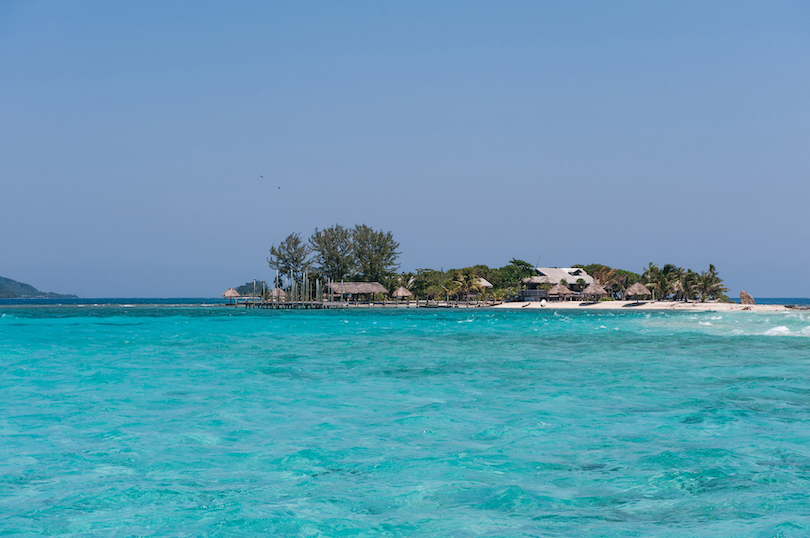
The pure definition of paradise, Cayos Cochinos aka Hog Islands is found 17 kilometers from the port town of La Ceiba. Cayos Cochinos is an 15-island archipelago, with most of them being the size of a teardrop above the turquoise sea.
The two main islands are Cayo Menor and Cayo Grande. You could easily walk from one end to the other. But in some of the smaller atolls, someone with a strong arm could throw a rock from side to side. With such all-encompassing beauty you’ll immediately feel on island time.
Cayos Cochinos is a part of a wider marine preserve that envelopes the archipelago. This is noticeable, especially as you dive into the glorious underwater world.
11. Río Cangrejal
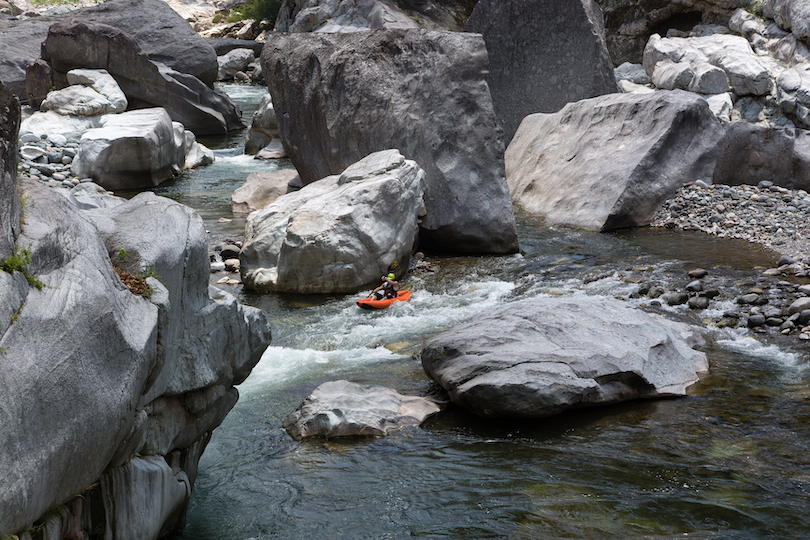
One of the most immersive adventures you can take in Honduras is a trip down the Río Cangrejal. The surging Class III-IV waters welcome you and immediately get your heart racing.
Coursing through northern Honduras over 30 kilometers, the river attracts thrill-seekers from around the world. Most white water rafting adventures will take you out on the water for a couple of hours with the pros ensuring you feel in good hands. The turquoise waters mix in with the splashing white and the fast currents whip you downstream dodging enormous boulders as you go.
For a massive undertaking, adventurous souls can consider the 13-day expedition that guides you through the spectacular Río Plátano Biosphere Reserve.
10. Comayagua Street Carpets
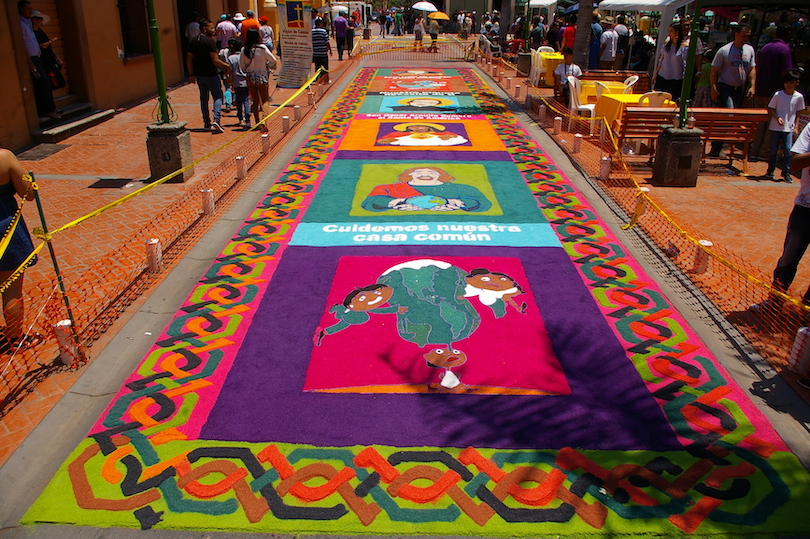
For over 300 years Comayagua was the capital of Honduras. That may have switched to Tegucigalpa, but the city founded by Spanish explorers in 1537 has some of the best colonial architecture in the country.
However, that’s not the main reason why you should visit. The famed Comayagua Street Carpets are found along the city’s main street. Using nothing but colored sawdust and powder, these “carpets” known as Alfombras, depict vivid religious scenes.
Since the sawdust and powder aren’t permanent, these eye-catching works of art disappear in the minutes following a hoard of marching steps. But don’t worry, they’re left on display for nine hours prior.
9. Little French Key
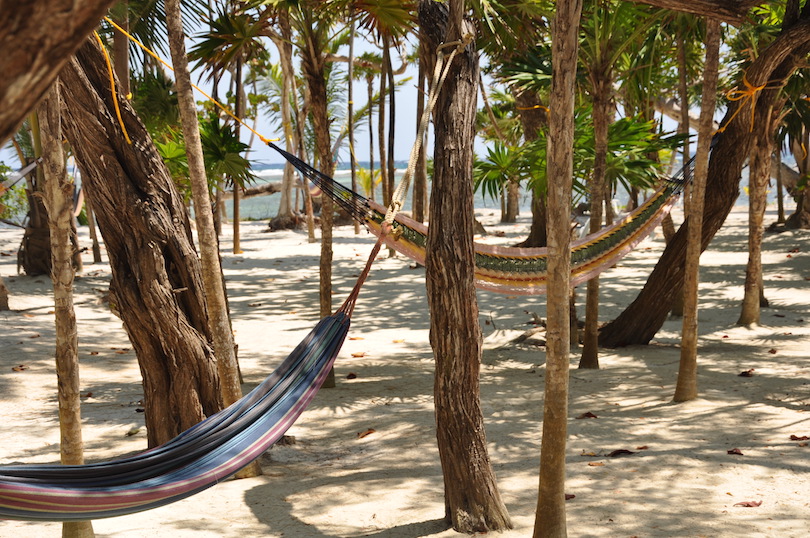
When exploring the Bay Islands, don’t just focus on the three main isles. Little French Key is an easy day trip from Roatán and is a veritable paradise.
The tranquility of Little French Key washes over you like a soothing towel the moment you step on land. Hammocks dance between swaying palms and glass-like water laps the golden sands.
You can bathe by the water on a sun lounge, snorkel and explore or paddle a kayak along the coast. Travelers can even sign up for a beachfront massage.
When you’re ready to head inland, the island’s wildlife sanctuary presents a protected ecosystem featuring toucans, deer and boisterous monkeys.
8. Visit a Coffee Plantation
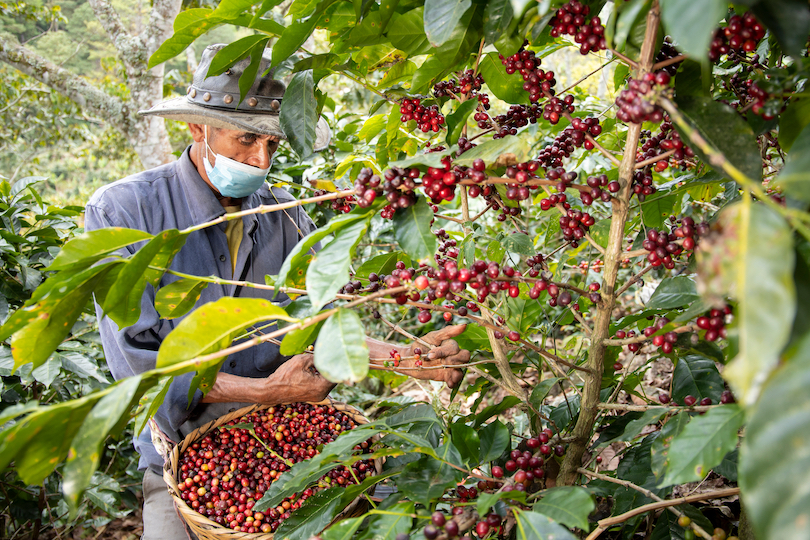
The flavorful arabica coffee of Honduras has steadily developed a reputation over the last couple of decades. There are several coffee regions from Agalta and Copan to El Paraiso and Opalaca. So exploring a coffee plantation is a simple thing to add to your itinerary.
The beautiful part about exploring the plantations is the ability to get up close to the process. Each region has slightly different flavor profiles. Copan is the most renowned, with a subtle chocolate taste. The warm temperatures of El Paraiso lead to sweet flavors.
After exploring your chosen plantation, you’ll revel in the culture and communities that surround them. These provide a unique look into local life.
7. Río Plátano Biosphere Reserve
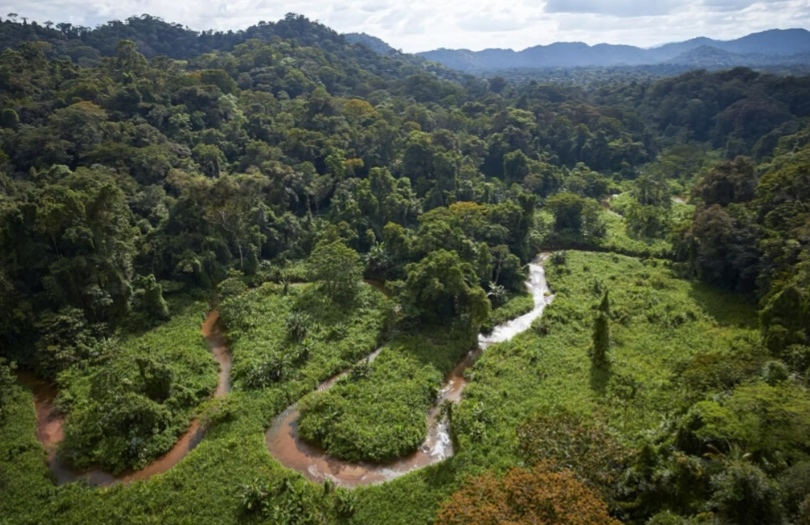
The UNESCO World Heritage Río Plátano Biosphere Reserve features a diverse array of ecosystems and wildlife. Pine-filled savannas are spliced between tropical rainforests and sprawling wetlands. It’s an enormous natural space that only native Pech and Miskito communities have made home.
Like Punta Sal below, exploring here brings you up close to some unforgettable wildlife. Jaguars roam about, the long snout of Baird’s tapirs make an appearance and harpy eagles zoom above. That’s before you head to the wetlands and shoreline where loggerhead and hawksbill turtles can be seen.
But you can expect trekking here to be tricky. Grab yourself a guide so you can spend less time in parts of the park inaccessible after wet season storms and more time exploring.
6. Punta Sal National Park
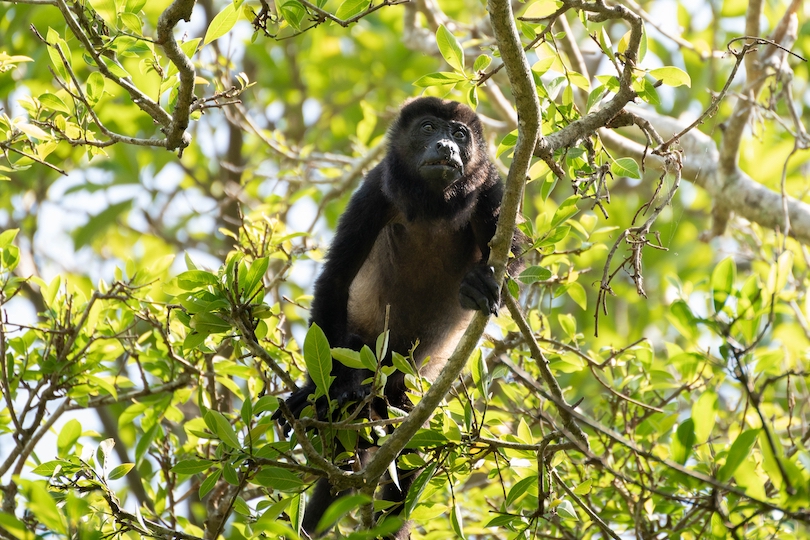
Encompassing a vast lagoon and a gorgeous shoreline, Punta Sal National Park is a natural utopia. Across these two ecosystems lies a breadth of adventures, each as eye-catching as the next.
Along the shoreline are soft golden sands lapped ever calmly by the emerald-hued Caribbean Sea. It’s a scene straight from a postcard. As you turn away from the water, the sea is replaced by rugged outcrops where, if you look closely, you can see monkeys bounding from tree to tree.
From the shore, you can venture into the jungle that has a rich collection of flora and fauna. Jaguars linger in the distance, monkeys make themselves known and the rainforest quickly envelopes you. Soon you’ll reach the lagoon where estuaries and mangroves burst from the water’s edge.
5. Lago de Yojoa
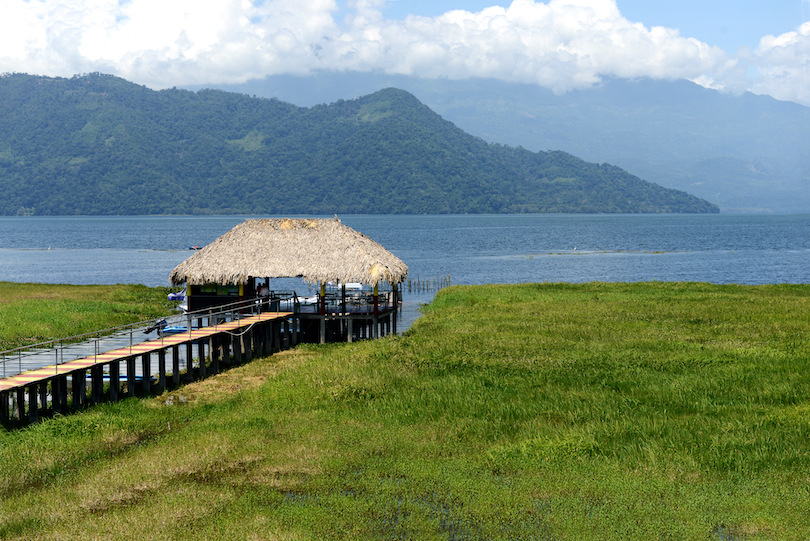
Honduras’ impeccable diving scene and golden shores take the bulk of traveler’s attention. This is good news for those who want to venture further inland. Lago de Yojoa isn’t just the largest lake in Honduras but marks one of Central America’s premier bird-watching destinations.
Every year swarms of native and migrating birds find their way to Lago de Yojoa. In fact, around 400 species have been identified here making use of the lake’s varied habitat. Hiking trails take you around its banks to long-range water and mountain views.
There are several lakeside spots where relaxing hotels can take you for the night. In the morning, wake up early for a kayak session where water sparkles in the early light and all you can hear is the splashing of your paddle and the birds calling out.
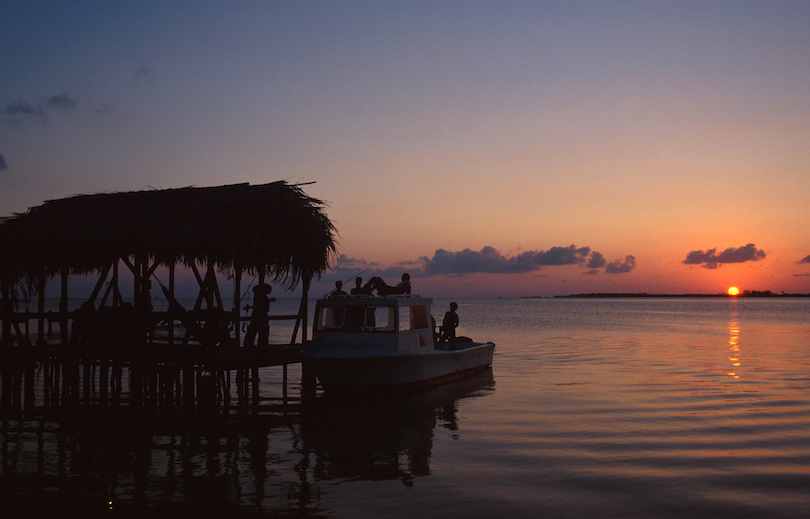
Enveloped in ivory white beaches , Utila is an island from a dream. Small in size (only 13km long), it’s a sparsely touched island that dances between paradise and wilderness.
The former is seen along its shores and from the views of waterfront accommodation. From the sand, you can dive into a vibrant sea where rays, turtles and colorful schools of fish roam. The wilderness is marked by the dense forests that flanked the island’s east and west ends. Only a few dirt roads venture in and untold adventures can be had for those who bravely venture in.
Come nightfall, get ready to experience some of the Bay Islands’ best nightlife. There’s all but one major road on Utila and that’s lined with bars and clubs whose neon shines into the early hours.
3. Copán Ruínas
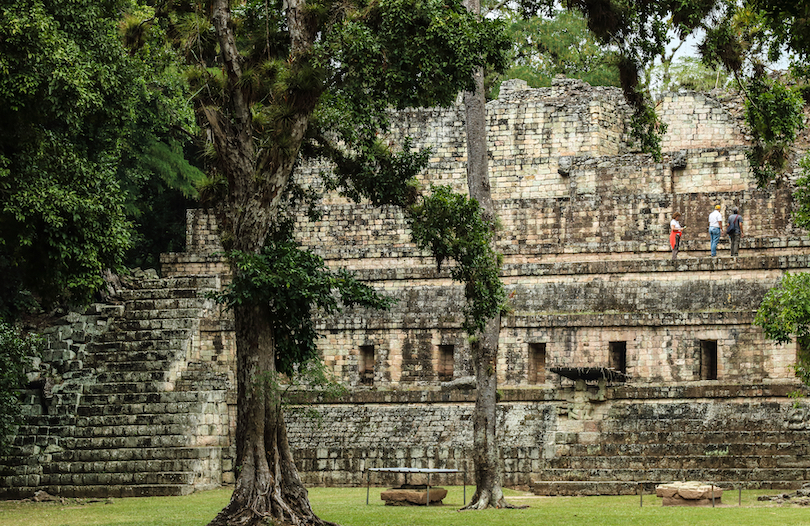
Close to the Honduras- Guatemala border, the Copán Ruínas is a former ceremonial city from the Mayan era. The Copán Ruins can be traced back over 2,400 years.
Copán is a relatively small Mayan site famous for its remarkable series of portrait stelae. The stelae and sculptured decorations of the buildings of Copán are some of the very finest surviving art of ancient Mesoamerica. The city grew into one of the most important Maya sites by the 5th century with more than 20,000 inhabitants but was mysteriously abandoned a few centuries later.
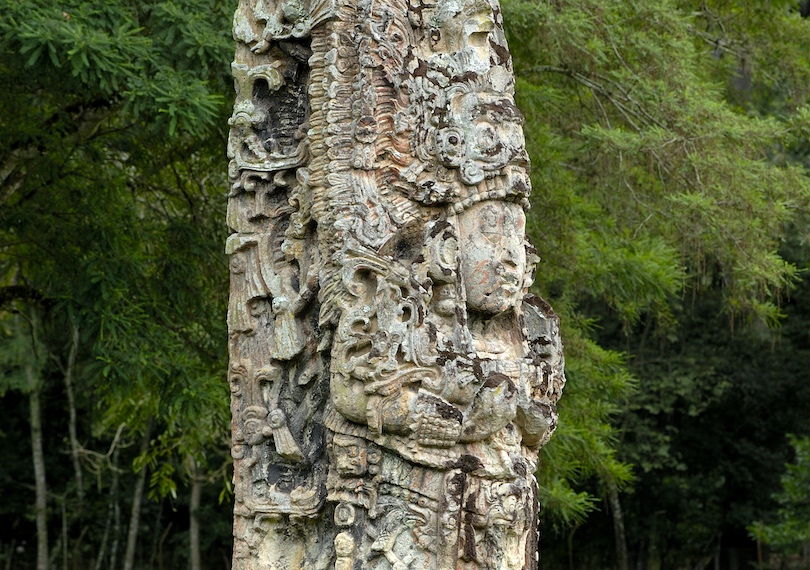
After making your way to modern-day Copán, you’ll find yourself around a kilometer from the ancient site. On arrival, the narrow path guides you through the tight Jaguar and Rosalia tunnels. It’s your first hint of how Mayan engineering works.
The layered construction from the tunnels to the temples reveals incredible Mayan engineering. The first of the main temples is the Temple of Inscriptions. However, across the Great Plaza is another that overshadows it completely. This is the Hieroglyphic Stairway, the center of the ancient city and one that stands strong among the surrounding jungles.
2. West Bay Beach, Roatán
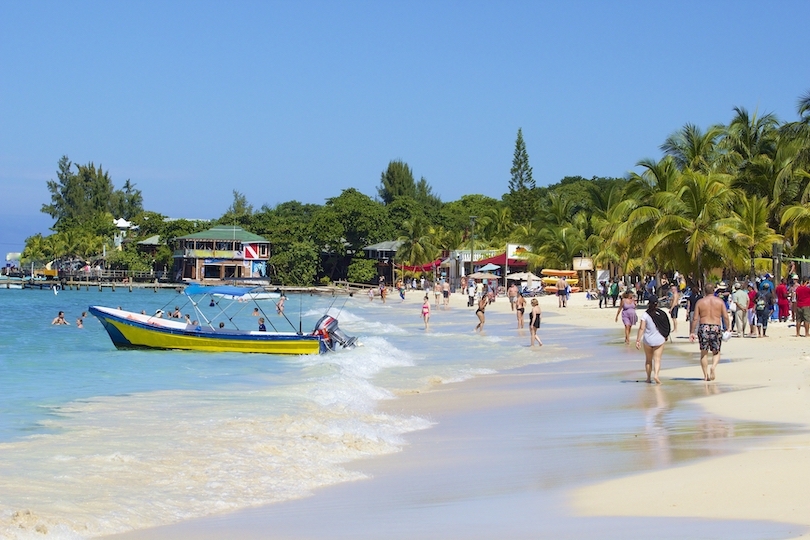
Located on Roatán, West Bay Beach can lay claim to being Honduras’ best stretch of ivory sand. Before you head offshore, you must take in the unspoiled beauty of this beautiful beach.
On the island’s western tip, it remains sheltered from the prevailing winds. This provides pristine sunbathing conditions, or sand castle building for the young-uns. The water also breaks calmly, allowing for relaxing swimming and great clarity for divers.
Diving outfitters dot the shorelines, providing easy access to the natural treasures of the shore. They’re joined by a slew of restaurants and beachfront bars from which you can recoup after a lengthy dive, or stick around for what promises to be a vibrant sunset.
1. Diving Around the Bay Islands
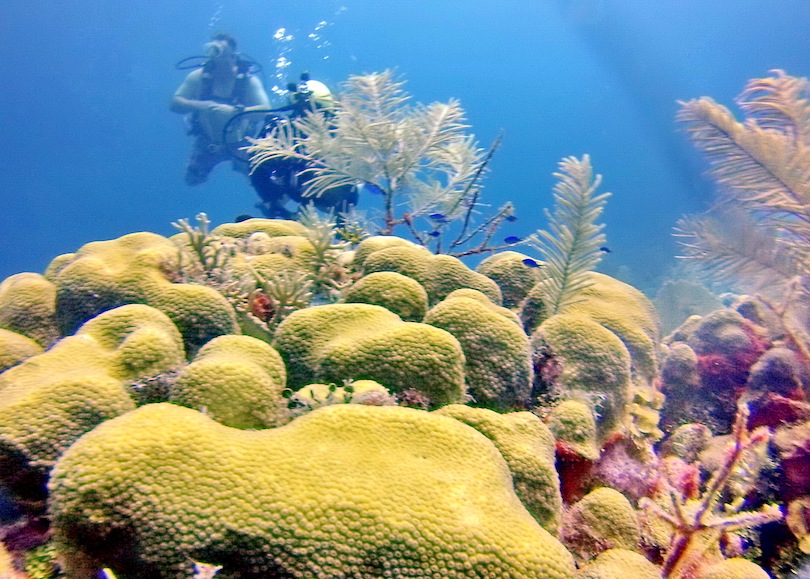
The best way to get to know Honduras is to explore off the mainland and head to the Bay Islands. Honduras boasts some of the world’s best dive and snorkeling sites, the highlight being the underwater world off the shores of Roatán.
It’s here you’ll discover the Roatán Marine Park. These designated protected waters feature spectacular coral and a breadth of tropical sea life. Whether you’re floating on the surface or diving deep, you have the chance to get up close with rays and turtles. There have also been sightings of whale sharks.
But you’ll find amazing diving on the other two Bay Islands destinations. At Utila and Guanaja, you’ll find a backpacker-friendly scene, where many go to achieve their PADI divemasters certificate.
Share this post:
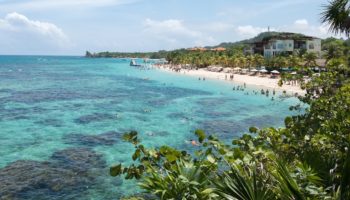
5 Most Beautiful Islands in Honduras
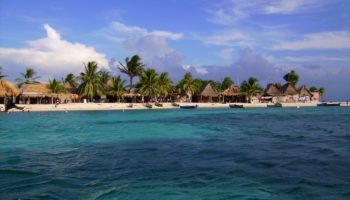
10 Best Beaches in Honduras
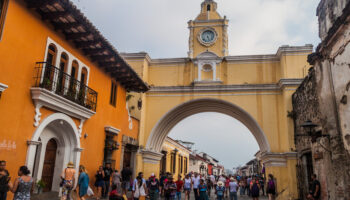
10 Best Places to Visit in Central America
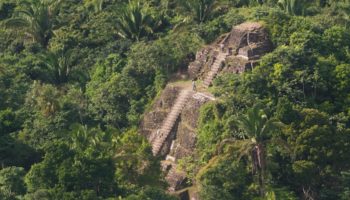
10 Most Beautiful Ancient Mayan Temples
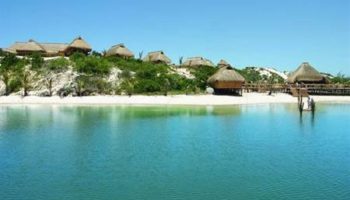
8 Best Mozambique Beach Resorts
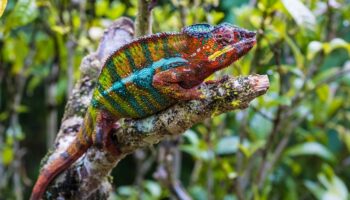
12 Top Attractions & Places to Visit in Madagascar

25 Best Cities to Visit in Asia
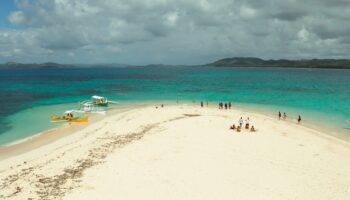
23 Most Beautiful Islands in Asia
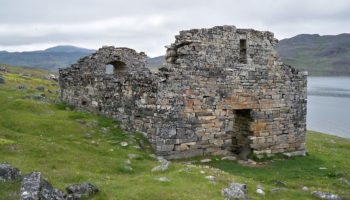
Discover the Hvalsey Church in Greenland
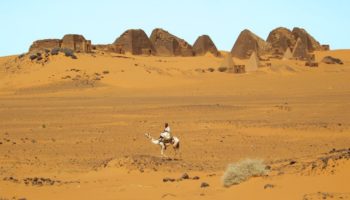
Visit Meroë: The Mysterious Pyramids of Sudan
Reader interactions.
September 9, 2018 at 5:33 am
I don’t think, that the maya ruins in Mexico are similar to the ones in Guatemala and Honduras. In Mexico the ruins look like “new”. In Comparison to that, if you stroll along the temples of tikal, you can get the feeling , that your are a discoverer on jungle-expedition 🙂
July 2, 2016 at 10:59 am
Copan is incredible. Enjoyed it more than Tikal. Fewer tourists and the detal on the carvings is absolutely amazing. Copan Valley is also filled with many hiking opportunities. It’s a five hour bus ride from Guatemala City.
February 19, 2013 at 6:39 pm
I’m doing a project on Honduras and I never noticed how cool this place really is… I hope to visit it some day. 🙂
February 11, 2013 at 4:10 am
The 3,000 years-old stone structures of Copán look very similar to the Mayan temples of Mexico – I would love to explore these sometime.
Leave a Reply Cancel reply
Your email address will not be published. Required fields are marked *
This site uses Akismet to reduce spam. Learn how your comment data is processed .
Travel Guide Honduras
Book your individual trip , stress-free with local travel experts
- roughguides.com
- Central America & the Caribbean
- Travel guide
- Travel Advice
- Accommodation
Plan your tailor-made trip with a local expert
Book securely with money-back guarantee
Travel stress-free with local assistance and 24/7 support
All too often, Honduras receives short shrift on travellers’ Central American itineraries: most visitors either race to see the Maya ruins at Copán or the palm-fringed beaches of the Bay Islands, and skip the rest of the country. And while these are two beautiful, worthy sights, there’s much more to Honduras – from the wetlands of La Mosquitia to the subtropical shore of the Golfo de Fonseca, this is a land of inspiring, often untouched natural beauty – and a longer visit will pay ample rewards.
Where to go in Honduras
Crime and personal safety, the football war.
The country’s development, however, has been held up by political instability and the (largely unchecked) violent activities of international drug cartels, which use the country as a staging post. Security in Honduras is a serious issue.
The capital, Tegucigalpa, is somewhat underwhelming, but home to the best facilities and services in the country, while 100km south of the city lies the volcanic Isla El Tigre, a little-visited but worthwhile getaway. An essential detour on the way north to the city of San Pedro Sula is the Lago de Yojoa region, which offers birdwatching, caves and a 43m waterfall. To the west, colonial towns like Santa Rosa de Copán and Gracias offer fantastic restaurants, hot springs and access to indigenous villages, while the sparsely populated region of Olancho – Honduras’s “Wild East” – and the Sierra de Agalta national park has the most extensive stretch of virgin cloudforest in Central America. On the Caribbean coast, Tela and Trujillo are good-sized towns with great beaches, while La Ceiba, larger and with thriving nightlife, is the departure point for the Bay Islands, home to world-class diving and a rich cultural mix.

Gradually, Honduras is waking up to its potential as an ecotourism destination – its network of national parks and preserves is extensive – as well as the likely benefits of an increased tourist infrastructure for the country’s struggling economy (it’s the second-poorest country in Central America, with more than half the population living below the poverty line). The pick of Honduras’s natural attractions is the biosphere reserve of the Río Plátano in La Mosquitia. Encompassing one of the finest remaining stretches of virgin tropical rainforest in Central America, the region is largely uninhabited and a trip here really does get you off the beaten track.
Top image © Diego Grandi/Shutterstock
Discover more places in Honduras

- Olancho Travel Guide
- Southern Honduras Travel Guide
- Tegucigalpa and around Travel Guide
- The western highlands Travel Guide
The security situation in Honduras has deteriorated dramatically in recent years, largely thanks to the activities of violent drug gangs (“maras”). San Pedro Sula has been dubbed the most violent city in the world, thanks to a horrifically high murder rate, and Tegucigalpa is not far behind. Street crime is a real concern throughout the country; as well as numerous cases of pickpocketing and robberies, some tourists have been killed (sometimes as a result of resisting a mugging). That said, the vast majority of travellers who visit Honduras do so safely, and you can reduce the likelihood of being a victim of crime by using common sense and caution. Leave your valuables at home (or in the safe of your hotel). Don’t walk around cities or bigger towns unless you’re very sure of your surroundings; see also our warning about bus travel . After dark take a taxi, even for short distances. Steer well clear of rough neighbourhoods (local advice on where not to go is invaluable): for example, the Comayagüela district in Tegucigalpa, particularly around the market, and the streets south of the old railway line in San Pedro Sula are both considered very dangerous. Going around in groups is safer than exploring on your own.
The Bay Islands are considered safer than the mainland, and rural areas are generally safer than urban areas, though far from crime-free; taking the usual precautions and seeking advice from locals are vital. Hiking alone or walking on isolated stretches of beach (or indeed any stretch of beach at night) is inadvisable.
If you are the victim of a crime the police are unlikely to be of much help, but any incidents of theft should be reported for insurance purposes (ask for a denuncia ).
The websites of the British Foreign Office (fco.gov.uk) and the US Department of State ( state.gov ) have up-to-date security information and advice on Honduras; check both before travelling.
Population 7.7 million
Languages Spanish, English in the Bay Islands
Currency Honduras lempira (L)
Capital Tegucigalpa (population: 1.8 million)
International phone code 504
Time zone GMT –6hr
In one of the more bizarre conflicts in modern Latin American history, on July 14, 1969 , war broke out on the Honduras–El Salvador border. Ostensibly caused by a disputed result in a soccer match between the two countries, the conflict also stemmed from tensions generated by a steady rise in illegal migration of campesinos from El Salvador into Honduras in search of land.
In April 1969 the Honduran government had given settlers 30 days to return to El Salvador, and then begun forced expulsions – the result was the break-out of sporadic violence. In June, the two countries began a series of qualifying matches for the 1970 World Cup. The first game, held in Tegucigalpa, was won by Honduras, with a score of 1–0. At the second game (won 3–0 by El Salvador), held in San Salvador, spectators booed the Honduran national anthem and attacked visiting Honduran fans. The third, deciding, match was then pre-empted by the El Salvadoran army bombing targets in Honduras, and advancing up to 40km into Honduran territory.
After three days, around 2000 deaths and a complete breakdown of diplomatic relations, the Organization of American States (OAS) negotiated a ceasefire, establishing a 3km-wide demilitarized zone along the border. Tensions and minor skirmishes continued, however, until 1980, when a US-brokered peace treaty was signed. Only in 1992 did both sides finally accept an International Court of Justice ruling demarcating the border in its current location.
Travel advice for Honduras
From travel safety to visa requirements, discover the best tips for traveling to Honduras
- Getting around Honduras: Transportation Tips
- Culture and Etiquette in Honduras
- Eating and drinking in Honduras
- How to get to Honduras
- Sports and Outdoor activities in Honduras
- Travel Tips Honduras for planning and on the go
- Best time to visit Honduras
Find even more inspiration here

Planning your own trip? Prepare for your trip
Use Rough Guides' trusted partners for great rates

written by Andy Turner
updated 26.04.2021
Ready to travel and discover Honduras?
Get support from our local experts for stress-free planning & worry-free travels.
- Where to stay
- Travel advice
- El Salvador
- Entertainment
- Expat Stories
- Real Estate
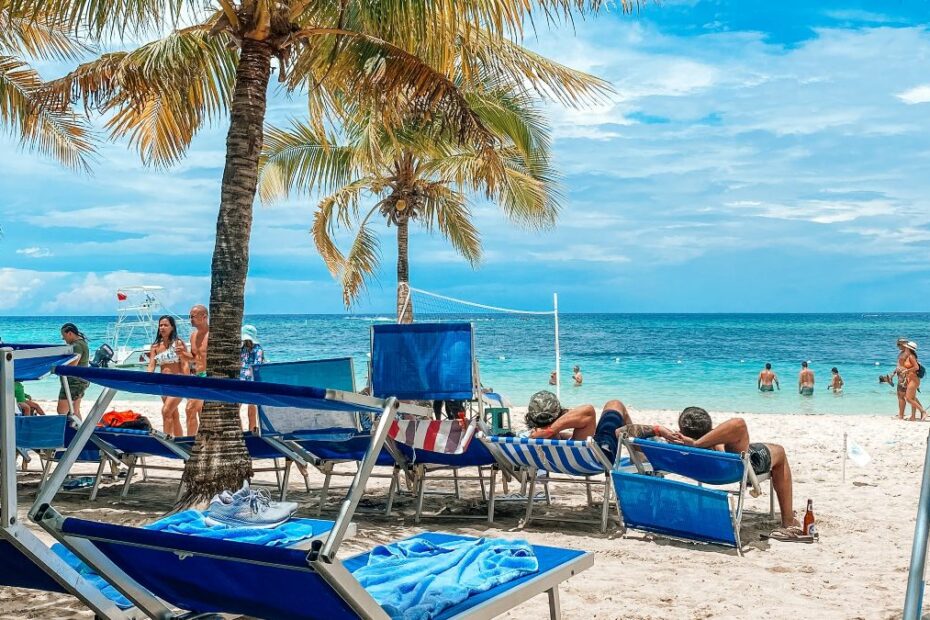
Unveiling Hidden Central American Gems: Discovering the Best Places to Visit in Honduras for the First-Time Traveler
- by John Dupuis
- May 16, 2023
- Honduras , Travel
Explore the best places to visit in Honduras for first-time travelers, where ancient Mayan ruins meet pristine rainforests and crystal-clear Caribbean waters. Uncover hidden gems, dive into adventure, and create lifelong memories. This article contains some affiliate links, where we make a small commission if you purchase anything after clicking, at no extra cost to you.
Central America, a vibrant region comprising seven distinct countries, may appear small in size, leading many to assume that the countries are homogeneous. However, each Central American country possesses its own unique attractions. In my opinion, Honduras stands out as a remarkable destination with an abundance of captivating experiences.
Because I live and work in Honduras , you could say I’m biased. And I probably am. But Honduras is special and offers much to see and do that you won’t find elsewhere.
One of Honduras’s greatest assets as a travel destination is its people. Nicknamed ‘ Catrachos ‘ , Hondurans are renowned for their friendliness and hospitality. You’ll receive a warm welcome from most people, complete with genuine smiles, curiosity, and respect.
Tourism, after all, holds the key to opportunity for Honduras. By traveling to Honduras, you can help create a brighter future for the country and its people!
So where are the best places to visit in Honduras as a first-time traveler to the country?
For first-timers, the ideal travel itinerary lies along the corridor between Copán Ruinas and the Bay Islands.This is where you’ll find the best places to visit in Honduras.
Copán is home to the most artistically impressive and most studied Mayan site in Central America. The extensive knowledge we have about Copán and its ancient inhabitants makes it a paradise for history and archaeology enthusiasts. Here, you can delve into the past at the unique museums that provide insights into pre-Columbian life.
Copán offers much more, however, than just its archaeological park. Picture a colonial town adorned with cobblestone streets and red-tile roofs, where upscale boutique hotels and budget-friendly hostels coexist. Chic coffee shops and gourmet restaurants offer a wide variety of culinary delights . Life is good in Copán Ruinas, and you’ll experience the charm of Central America at its finest.
The area around Copán is also prime coffee-growing territory. It’s easy to get out of town to a coffee farm and learn about the harvesting and processing of your favorite morning pick-me-up. Many of these farms have their own shops in town, where you can sample and buy your favorite coffee blends.
Another highlight of Copán is the Macaw Mountain Bird Park , home to numerous beautiful tropical birds and parrots native to Central America. These birds were either former pets or rescued from illegal trafficking. Macaw Mountain plays a crucial role in reintroducing birds into the archaeological park.
View this post on Instagram A post shared by Central America Living (@centralamericaliving)
Onwards from Copán Ruinas to La Ceiba
After exploring Copán Ruinas, continue your journey towards the Bay Islands. This archipelago, once under British rule, proudly preserves its heritage and English-speaking culture.
The easiest route from Copán Ruinas to the Bay Islands involves driving to La Ceiba, a small city on the Caribbean coast.To reach the Bay Islands from La Ceiba, you can choose between air and ferry services. The modern water jet catamaran ferry offers a fast and comfortable journey of fewer than two hours, with two daily departures.
But before getting onto a boat or a plane, I recommend spending at least a couple of nights in the La Ceiba area to visit the Pico Bonito National Park. Most travelers stay in the Cangrejal River Valley , approximately 10 km south of La Ceiba. This area has several hotels and lodges (including my own La Villa de Soledad ), granting you an up-close-and-personal rainforest experience. The Rio Cangrejal also offers some of the best white-water rafting in the world.
From the Cangrejal River Valley, any lodge will be happy to arrange your transfers to the La Ceiba ferry terminal or airport for onward travel to the Bay Islands.
View this post on Instagram A post shared by La Villa de Soledad B&B (@lavilladesoledadbb)
The Bay Islands of Honduras
For many visitors, the main allure of the Bay Islands lies in their spectacular diving and snorkeling opportunities along the Meso-American Barrier Reef. The archipelago comprises six islands and numerous small cays, but only Utila, Roatán, and Guanaja have permanent communities and well-developed tourism services.
Each island offers a unique experience, and it’s worth exploring all three to fully appreciate their distinct charms. Traveling between Utila and Roatán is convenient, thanks to the Utila Dream Ferry . Traveling from Roatán to Guanaja can be less reliable, often requiring a journey back to La Ceiba.
View this post on Instagram A post shared by Utila Dream (@utiladreamferry)
Utila is famous for its dive shops and attracts backpackers with its affordable scuba certification courses. It’s also a popular destination for encountering whale sharks , the largest fish species in the world. There’s a lively nightlife/bar scene on Utila that appeals to younger crowds, although the island also offers a relaxed ambiance that can be enjoyed by all, including those seeking tranquility.
View this post on Instagram A post shared by 🌴🌴🇭🇳El GRINGACHO ❤ 🌊UTILA ✌🏻😎 (@utiladronefotos)
Roatán generally attracts a more well-heeled traveler than Utila and serves as a prominent port of call for cruise ships. While the midweek period can witness a higher influx of tourists due to cruise arrivals, the island’s elongated shape allows you to escape the crowds if you wish. West End, with its small and eclectic beachfront community, and the resort-oriented West Bay Beach are the most popular areas on the island.
Roatán is the only Bay Island to feature a golf course and resort communities that rival other Caribbean destinations. Real estate opportunities on Roatán are competitive due to its popularity. The island also has its own international airport, facilitating direct flights from various U.S. gateways.
On a personal note, I highly recommend exploring the East End of Roatán. This part of the island retains its authenticity and allows you to escape the crowds brought by cruise ships. Experience the charm of small and intimate properties, relish the exquisite beaches, and immerse yourself in the captivating old island communities. Even if you choose to stay in West End, I urge you to plan a day trip to the East End to discover the genuine essence of Roatán.
Further east from Roatán are four more islands. Helene, though technically a separate island due to a natural canal, is an extension of Roatán. It remains relatively undeveloped and lacks tourist facilities. Morat, a small island with a saltwater lagoon, offers minimal attractions and is uninhabited. Next to Morat is Barbareta, a private island with pristine beaches. Pigeon Cays, located along the south shore of Morat, present an idyllic setting reminiscent of Robinson Crusoe, perfect for a day trip.
View this post on Instagram A post shared by Devin Lake (@rng_grey_c7)
Finally, on the eastern edge of the Bay Islands archipelago, lies the island of Guanaja. It was here that Christopher Columbus landed during his final voyage in 1502. Guanaja stands out for its untouched nature and rugged terrain, making it the most mountainous among the Bay Islands. With no roads on the island, boat transportation is the primary means of getting around.
Resorts on Guanaja are relatively small and isolated, offering self-contained experiences that include diving and meals bundled with accommodations. Due to its more remote location, Guanaja tends to be more expensive to visit. You can reach Guanaja from La Ceiba only by air, although there’s also a ferry service from Trujillo.
That wraps up my overview of the best places to visit in Honduras for first-time travelers
Honduras, with its Central American and Caribbean characteristics, offers many reasons to visit, and I’ve missed out a few here, including the Cayos Cochinos, the islands of the Gulf of Fonseca on the little-visited Pacific side, and the pine-clad mountainous interior. But all that and more can be the focus of your next visit! For now, I invite you to explore the enchanting destinations I have described and embark on an unforgettable journey through Honduras.

Related Posts

Ten Ways How Translation Apps Can Transform Your Central American Journey
- by CA Staff
- April 22, 2024
How using translation apps in Central America help with communication, navigation, dining, emergency situations, trip planning, and more.

An Angler’s Guide to Pacific Coast Fishing in Panama
- by Kenneth Reaves
- Panama , Travel
Fishing blogger Kenneth Reaves explains why the Pacific coast of Panama is the perfect destination for anglers of all abilities.

The Best Spots for Stand Up Paddle Boarding in Central America
- Entertainment , Travel
Stand up paddle boarding is a growing sport around the world, gaining popularity everywhere, and Central America is no exception.

John Dupuis
John Dupuis was born and raised in Mexico City but has been living in Honduras since 1992. An avid travel entrepreneur, he's always looking to promote his adoptive country. He founded the Honduras Tips travel guide, which became the “travel bible for Honduras”. Since moving on from Honduras Tips, Dupuis has built a bed and breakfast called La Villa de Soledad in the Cangrejal River Valley, just outside of La Ceiba. He manages his B&B with his Honduran wife, Soledad. He enjoys writing about travel in Honduras and runs Hondurastravel.com.
Scroll to Top
21 things to know before going to Honduras – Safe travel tips for Honduras

Sharing is caring!
Just like with every international trip, there are things that you end up realizing while you’re traveling. At that point, you kick yourself and wish you had known better to avoid the trouble and heartache that come with traveling to unknown places. That’s why we put together the list of the top 21 things to know before going to Honduras . This article will highlight the top travel advice for Honduras.
We hope these tips will help make your trip more enjoyable. Because truth be told, this is a beautiful country, and more people should be enjoying the amazing things to do in Honduras . So get ready because we’re sure you have a ton of questions, and we have some of the answers.
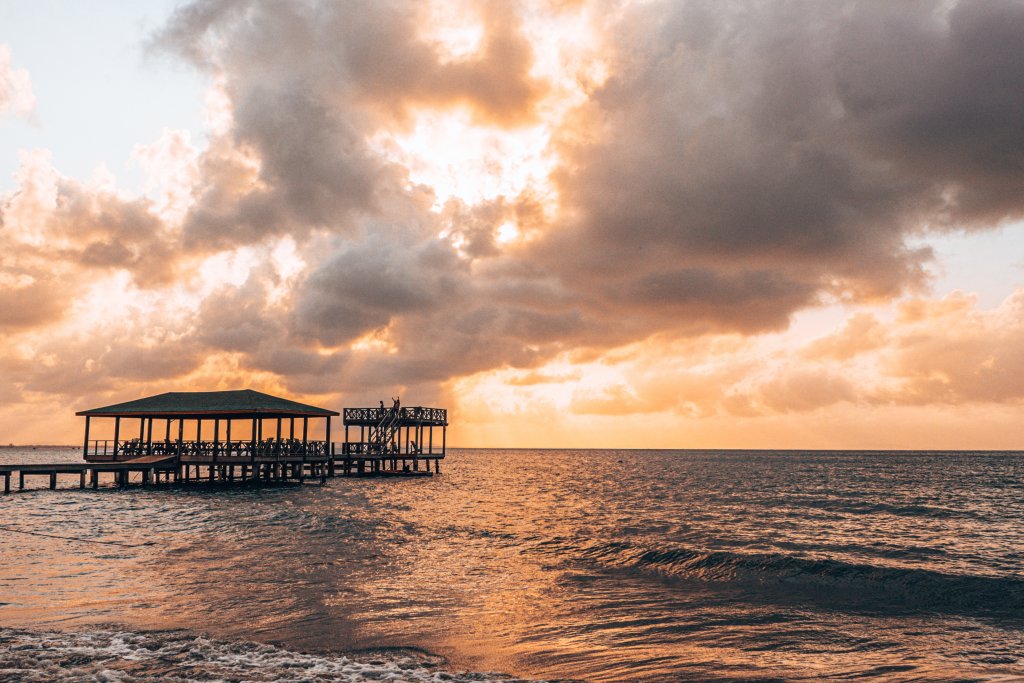
This article may contain affiliate/compensated links. For more information, please see our disclaimer here. We take all the efforts necessary to ensure the information included in this post is accurate, correct and current, sometimes, things just change! Travel information like opening hours, business operations and prices may change. If you find anything in this post that is incorrect or outdated, please let me know in the comments so I can update it for other readers. Cheers!
We love helping you plan amazing trips. If you need any of these services, consider booking them through our affiliate links. Without costing you anything extra, you will be helping support us so we can continue to write these blogs for you.
We thank you again for your continued support.
🏠 Find the perfect place to stay with Booking.com
✈️ Get the cheapest flights with Skyscanner
🚣 Book your favorite activities with Viator
💻 Make sure you have everything you need for your epic trip by checking our store on Amazon
Table of Contents
Health and safety tips in Honduras
1. is honduras safe country .
“Is Honduras a safe country to visit?” is the question you’ll hear the most when you tell people that’s your next destination. If you Google it, you’ll get tons of articles telling you it’s the murder capital of the world, that it’s not safe, and that it should be avoided. This is only one part of the truth.
It’s true that larger cities tend to be more dangerous, in certain areas, especially if you’re out looking for trouble (i.e. drugs). But for the most part, Honduras is really safe. In our three weeks there, we didn’t once feel scared, or like we were in danger. If you’re smart about your trip, and a careful traveler, you should be fine.
But to be extra safe, don’t wear expensive jewelry or electronics. Don’t flash your money around, and you won’t have any problems. The locals we met were all super kind and generous with us. Often, they gave us amazing tips to make our trip even better. Because nothing beats recommendations from locals!
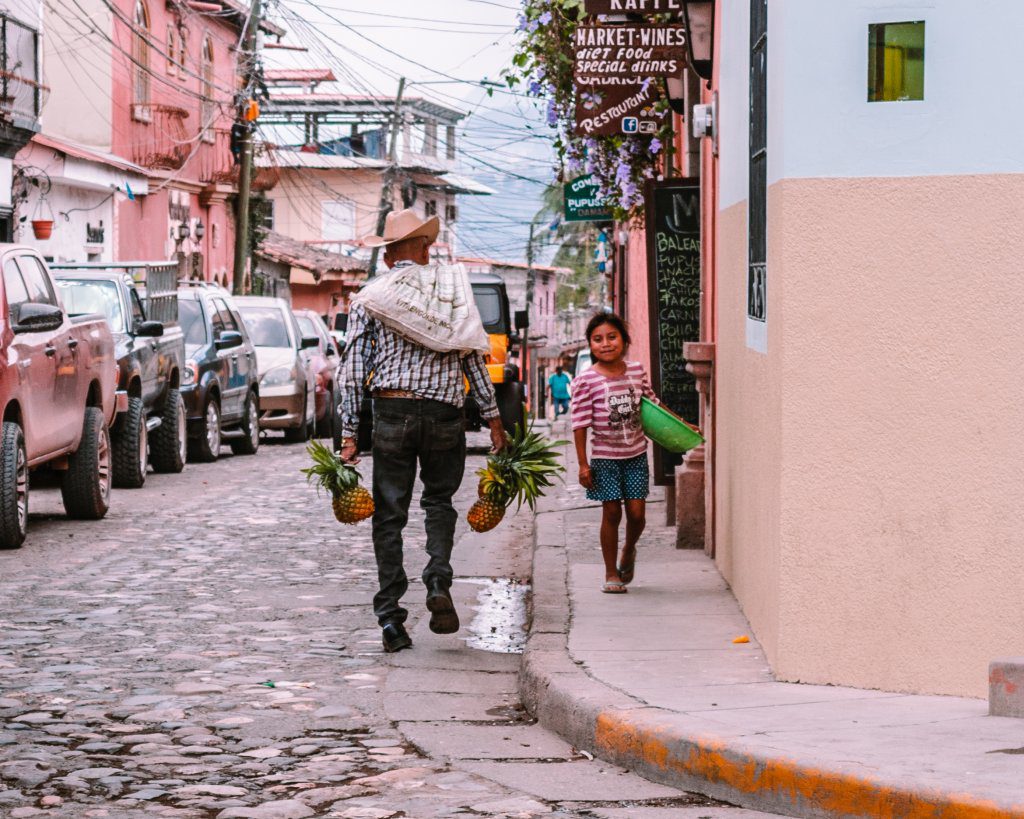
2. Can you drink the water in Honduras?
Unless you’re going around with a water purification system (like the Lifestraw Go or the Grayl GeoPress we have), don’t drink the water. The locals don’t do it either. If you want to avoid getting sick, avoid the lettuce too, unless you know it’s a good restaurant.
In restaurants, the water they serve is filtered and safe to drink. The ice is also safe for consumption so don’t worry about it.
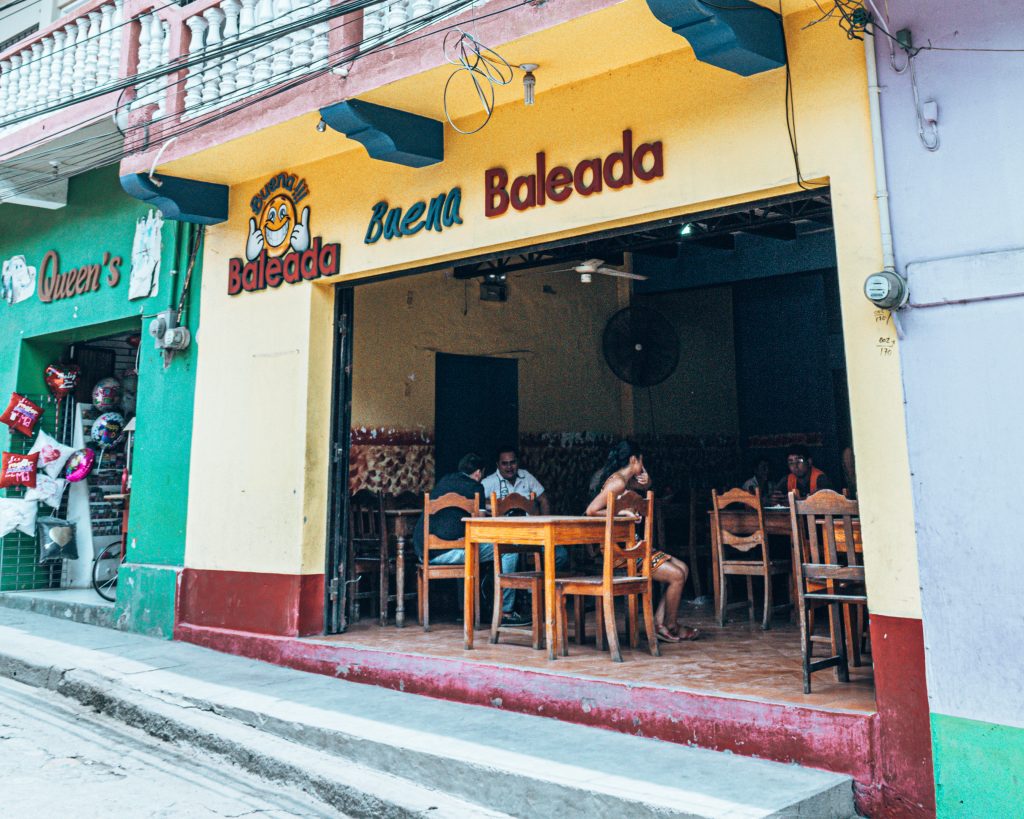
General travel advice for Honduras
3. is it easy to get around in honduras.
To get from one city to the next, we took the express buses . Some are closer to the chicken buses you see in Central America, that have been patched and repatched, the seats are tight and wonky, but the buses are efficient, cheap and don’t stop as often as the public buses.
Most bus companies will have direct routes to make it from one city to the next, although if you are going from one end of the country to the other side, you may have to switch in San Pedro Sula or Tegucigalpa. For example, when we went from Copan to Tela, we had to stop off in San Pedro.
Some of the better companies you should check out are these three.
- Hedman Alas
Although they have websites, their schedules aren’t always up-to-date. Your best bet is to call them to get their latest info. If not, their Facebook pages are usually better maintained than their website.
4. Are the routes developed in Honduras?
Although bus travel is fairly easy, the routes aren’t in such great shape. In fact, in many parts of the country, the routes have recently been developed or paved, so getting around to certain cities may be a challenge. Ask the locals how long and far it will be to get there and it’ll give you a good idea of what’s possible.
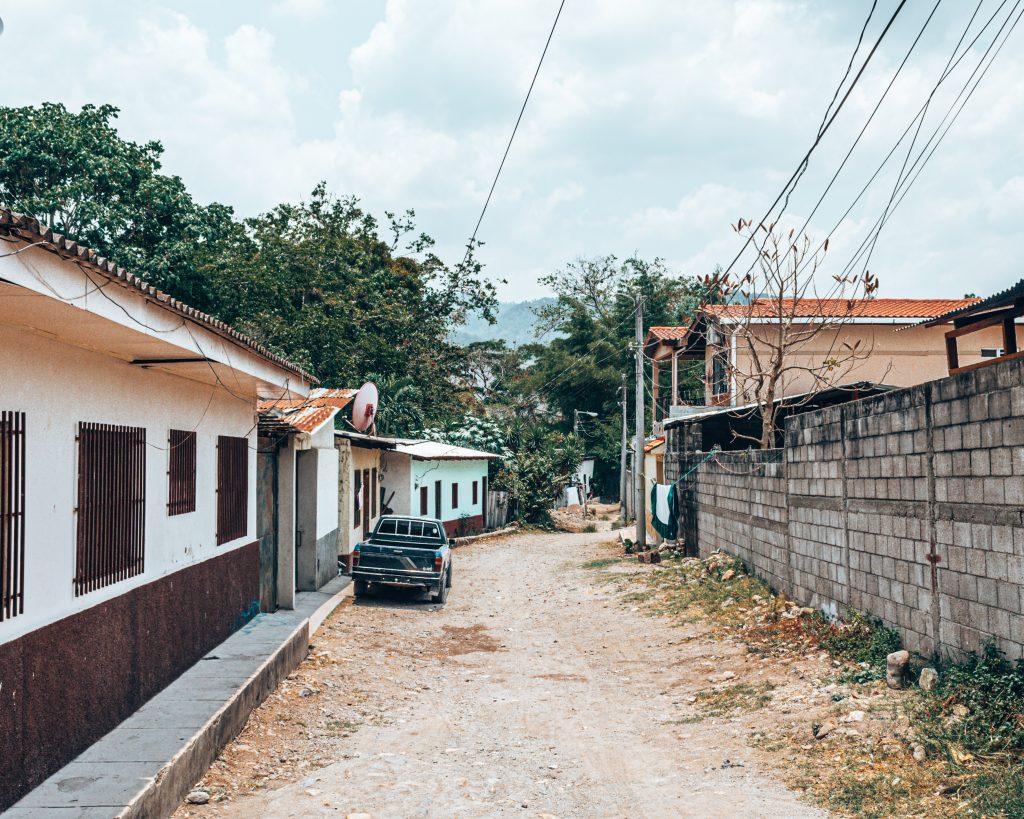
5. Do they only speak Spanish in Honduras?
We’ve always known that speaking many languages is the biggest wealth in the world, and if you speak Spanish, you’ll be golden in Honduras. However, English is widely spoken. Most tuk-tuk or taxi drivers know enough to get you where you need to go. Hotels will have English-speaking staff, especially at reception. And on the islands of Roatan and Utila , almost everyone speaks English.
However, if you speak Spanish, you’ll be able to connect a little more with the locals and get recommendations you wouldn’t get otherwise. So if you can, try to pick up a few words to make getting around easier.
Here are a few sentences to help you out:
- Hola = Hello
- Buenas días = Good morning
- Buenas noches = Good evening
- Cómo estás? = How are you?
- Que bueno! = How wonderful!
- Cuanto cuesta esto? = How much does this cost?
- Dónde está … ? = Where is …?
- La cuenta, por favor = The bill, please
- Quiero ir a … = I want to go to …
- Por favor = Please
- Muchas gracias = Thank you very much
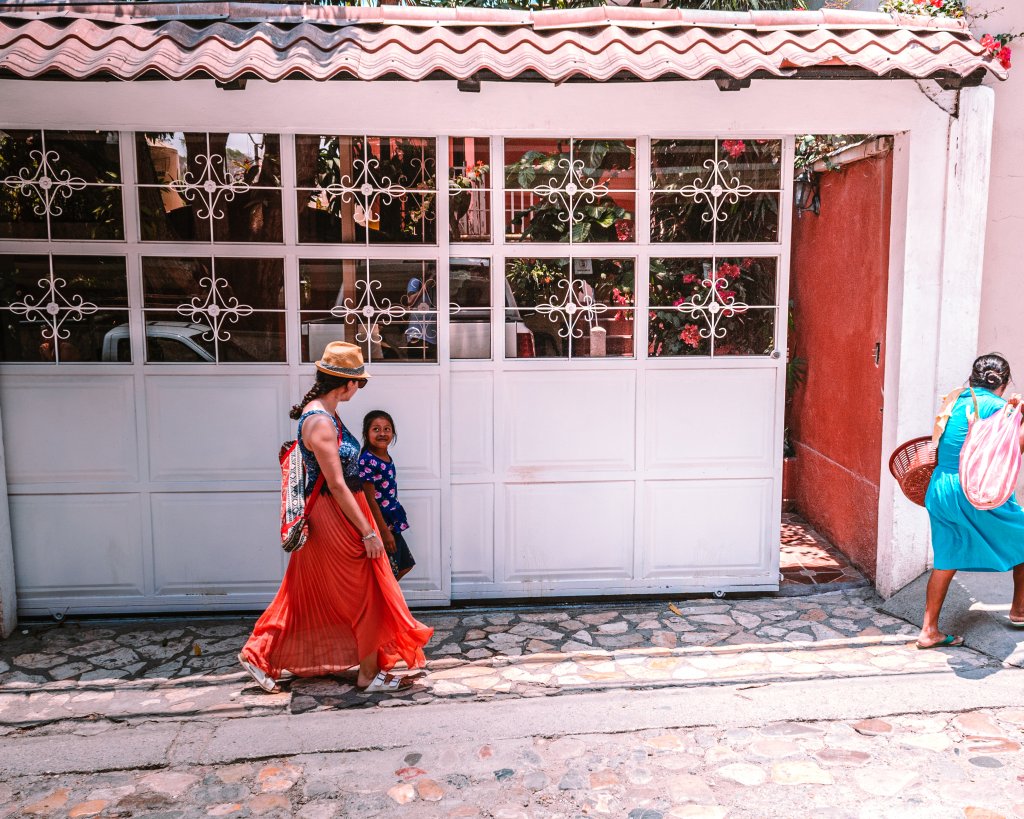
6. Is the local food good in Honduras?
You should not miss out on these delicious meals, especially if you’re vegetarian or vegan . Baleadas are cheap, delicious and nutritious. Thick corn tortillas, filled with refried beans, crema , cheese, and your choice of eggs, meat or plantains. They are a staple of every city we went to. They’re perfect for breakfast, lunch, and dinner. And chances are, you won’t just have one, but at least two!
Then there are pupusas, which are like baleadas, but more like a calzone, as in a closed pocket. They are usually filled with meat, however, so not as vegetarian-friendly.
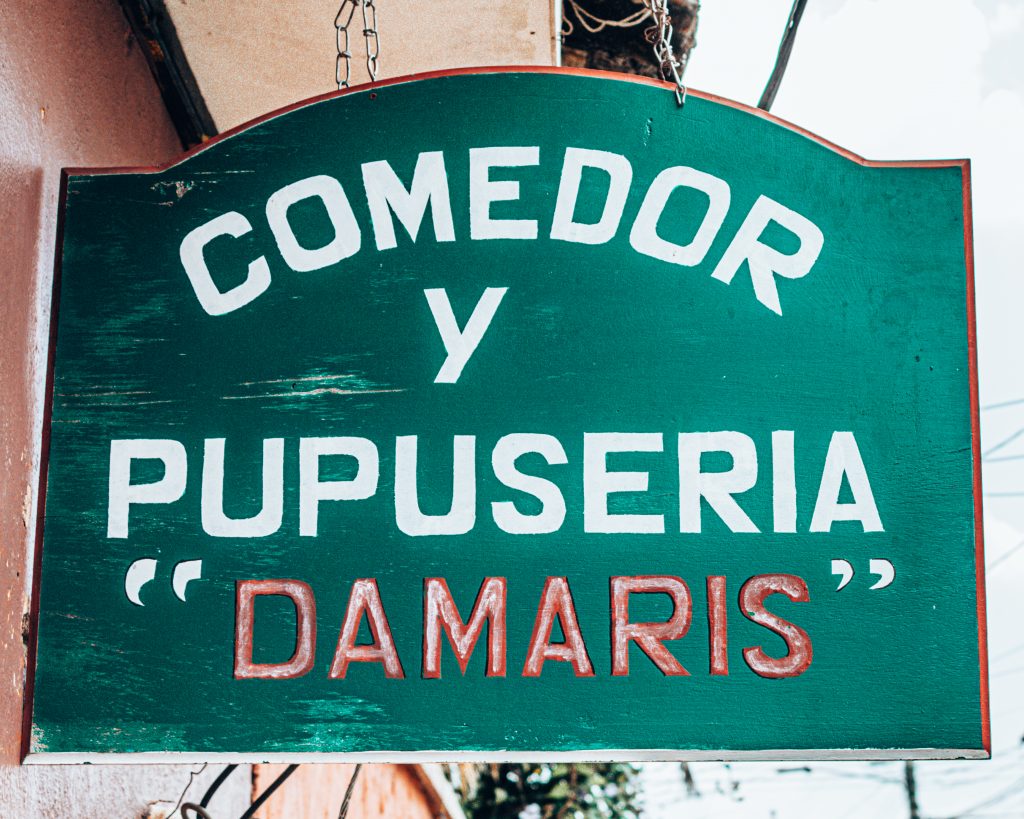
Things to know what to do in Honduras – your guide for the activities
7. is it cheap to scuba dive in honduras.
Utila is probably the cheapest place in the world to learn to scuba dive. Every other business in Utila is a dive shop (we’re exaggerating, but only slightly) and the island is just off the second largest reef in the world. So it’s no surprise that it’s one of the cheapest places to learn how to scuba dive.
You can get your Open water PADI certification for around $300 USD. Many dive shops even include your accommodations in the price of your certification. So if scuba diving is on your list, make sure you learn here. You might even get lucky and spot a whale shark like we did when we learned to dive in Thailand .
8. Is scuba diving better in Utila or Roatan?
The scuba diving is awesome in both Utila and Roatan. The reefs are protected by the eco-marine park , so they are quite healthy. They are also part of the second-largest coral reef in the world, so if you love to scuba dive, this is the place to do it.
And if you can’t scuba dive (and don’t want to learn how to) snorkeling these reefs is an excellent option too! Make sure you have your own mask and snorkel, as certain places charge upwards of $25 USD to rent the material for the day. If you go twice, you’ll have paid off the cost of buying the gear.
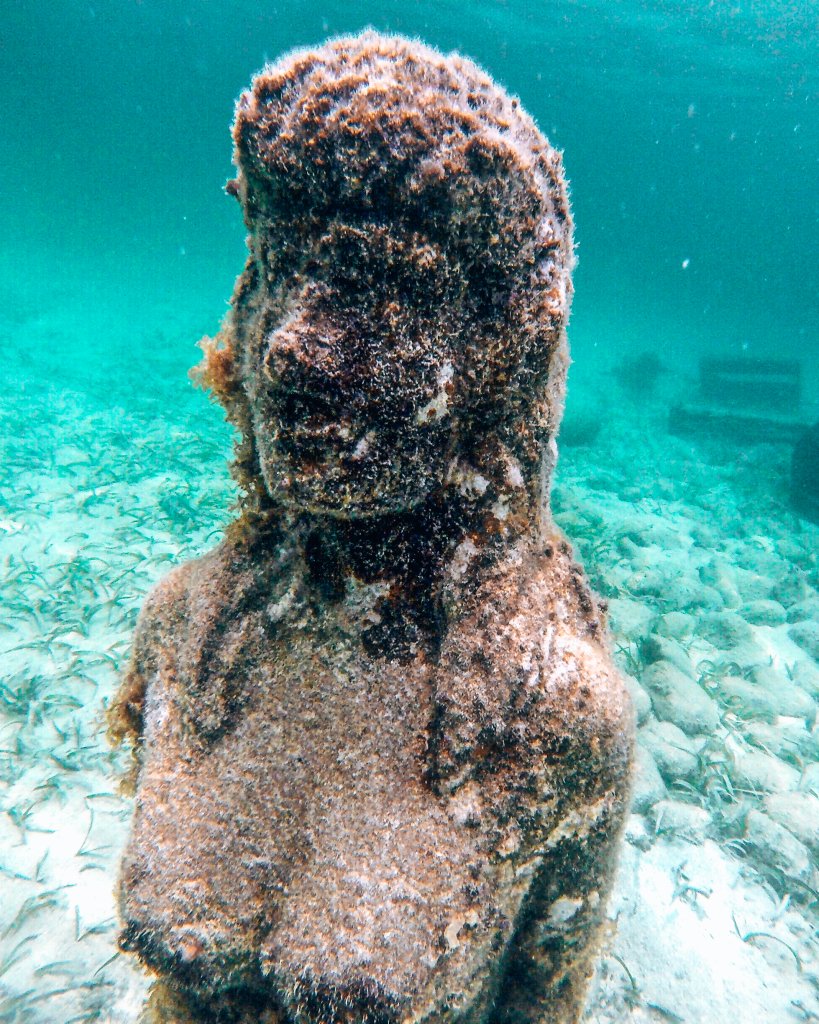
9. Are the Copan Ruins worth visiting?
The Copan Ruins are one of the most spectacular Mayan ruins and are still being excavated. However, because of the lack of tourism in Honduras, they are barely visited.
In fact, many asked us what the best time to go was to avoid the crowds, and our answer was simply ‘anytime!’ because, during our four hours there, we barely saw anyone. And don’t even get us started on the Sepulturas (the area where the nobility used to live), the other site included in the cost of the ticket. NO ONE ever goes there.
So if you’re looking to explore some Mayan ruins without the intense crowds, this is the place to do it. Just make sure you go early, simply because the sun gets hot very quickly!
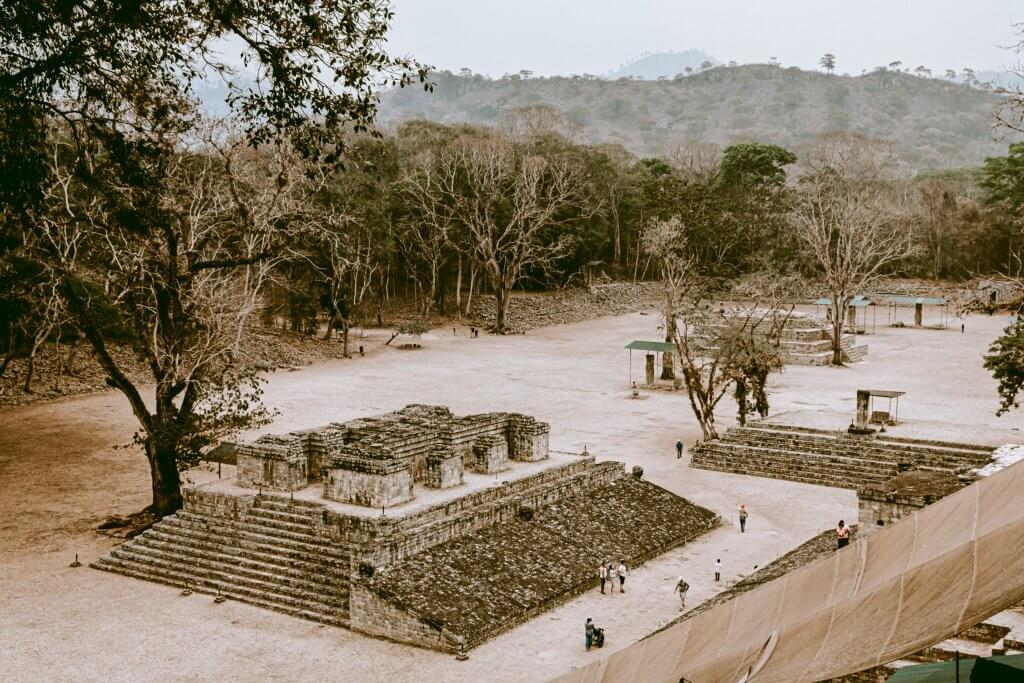
10. Are there any good national parksin Honduras?
From Pico Bonito to Punta Sal and everything in between. The national parks in Honduras are jewels to be uncovered. Hiking, water rafting, waterfall chasing, canoeing, whatever you want to do, you will find a national park that will satisfy your need for adventure. So if it’s an outdoor adventure you’re looking for, look no further than the national parks in Honduras.
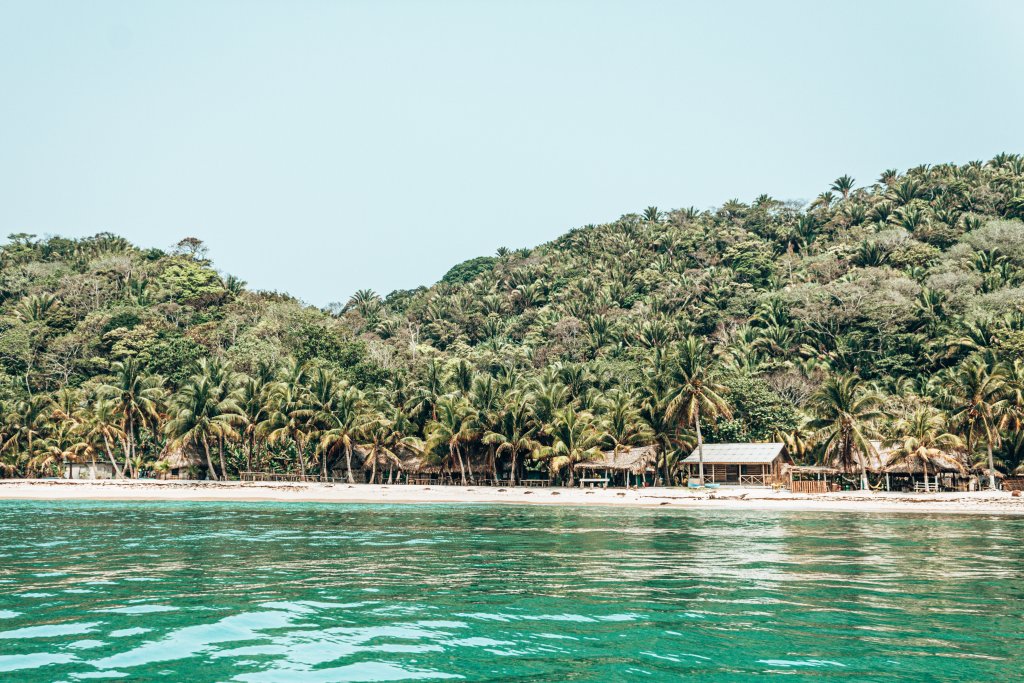
How to travel sustainably in Honduras – Eco-friendly travel advice for Honduras
11. do they recycle in most cities in honduras.
As in most developing countries, recycling is non-existent and trash is burnt. It’s no different in Honduras, except for certain islands (like Roatan), where they do try and recycle. In countries like Honduras, traveling in an eco-friendly way becomes even more important than ever.
Here are a few easy tips for things you can do to travel sustainably in Honduras:
- Avoid plastic bottles by bringing your own water purifying system . Even a reusable water bottle can do the trick as most hotels and restaurants will offer you water refill stations.
- Avoid buying packaged snacks, opting instead for local homemade goods and produce.
- Pick up trash when you see it, especially on beaches.
- If you finish some of your products in plastic bottles (like shampoo or sunscreen), bring them back home with you so you can recycle them there.
- Check out our articles to learn all about how we travel in a more eco-friendly way , or how to reduce the use of single-use plastic .
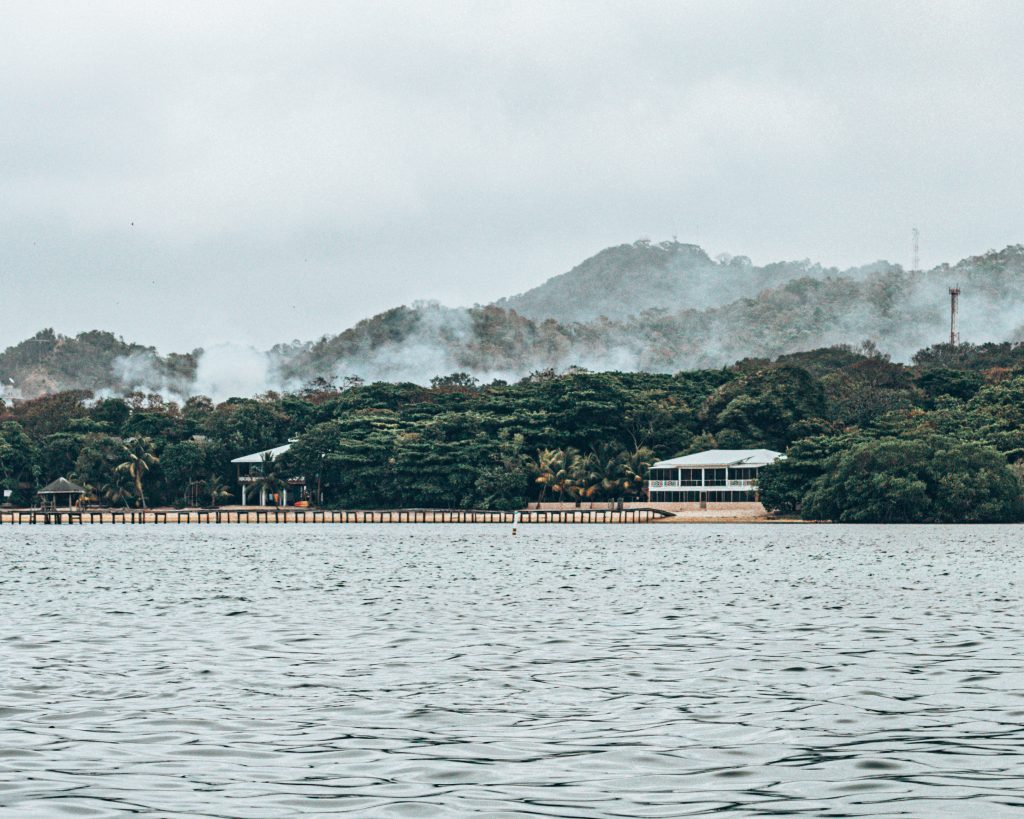
12. Is there a lot of poverty in Honduras? Can we help?
Around 60% of the Honduran population lives below the poverty line. We were told that on average, local Hondurans make $360 USD per month. Although more often than not, they don’t get paid properly and that amount is closer to $100. Imagine trying to feed a family on that salary. It’s heart-breaking!
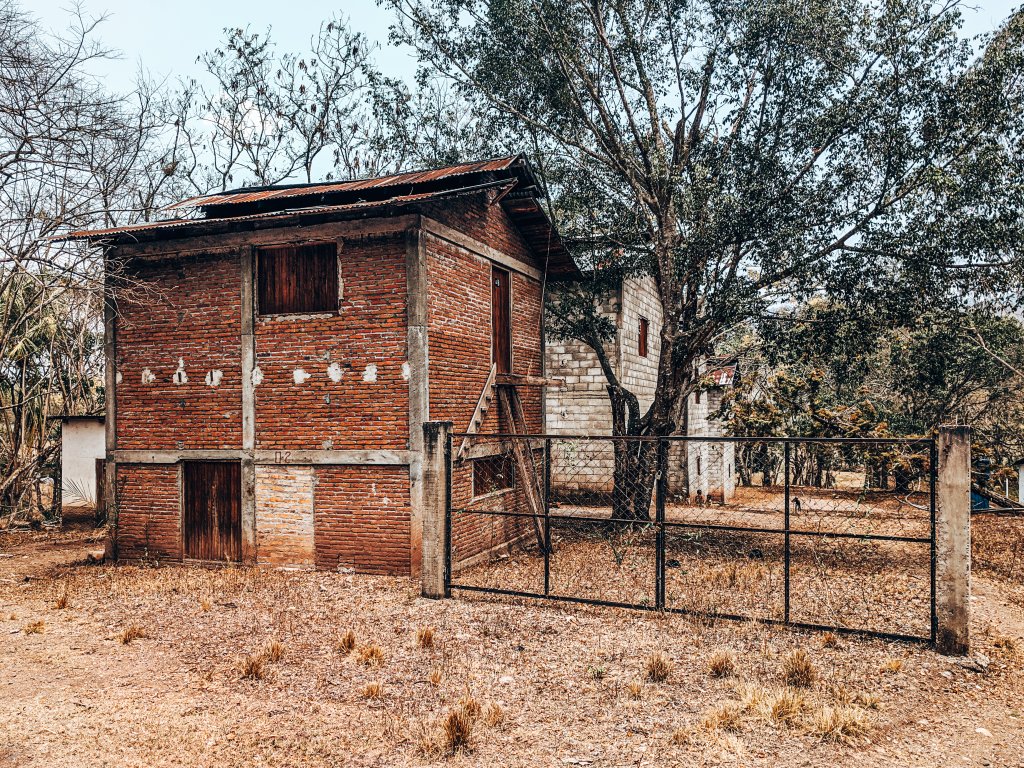
An easy way to help the local economy is to support local businesses, buy local products and produce. Instead of staying in large chains and resorts, opt for mom-and-pop-run hotels, B&B ‘s or guesthouses .
Instead of eating at a food chain, go to a local restaurant. Buy your produce from the lady selling it on the street corner or sustainable local companies.
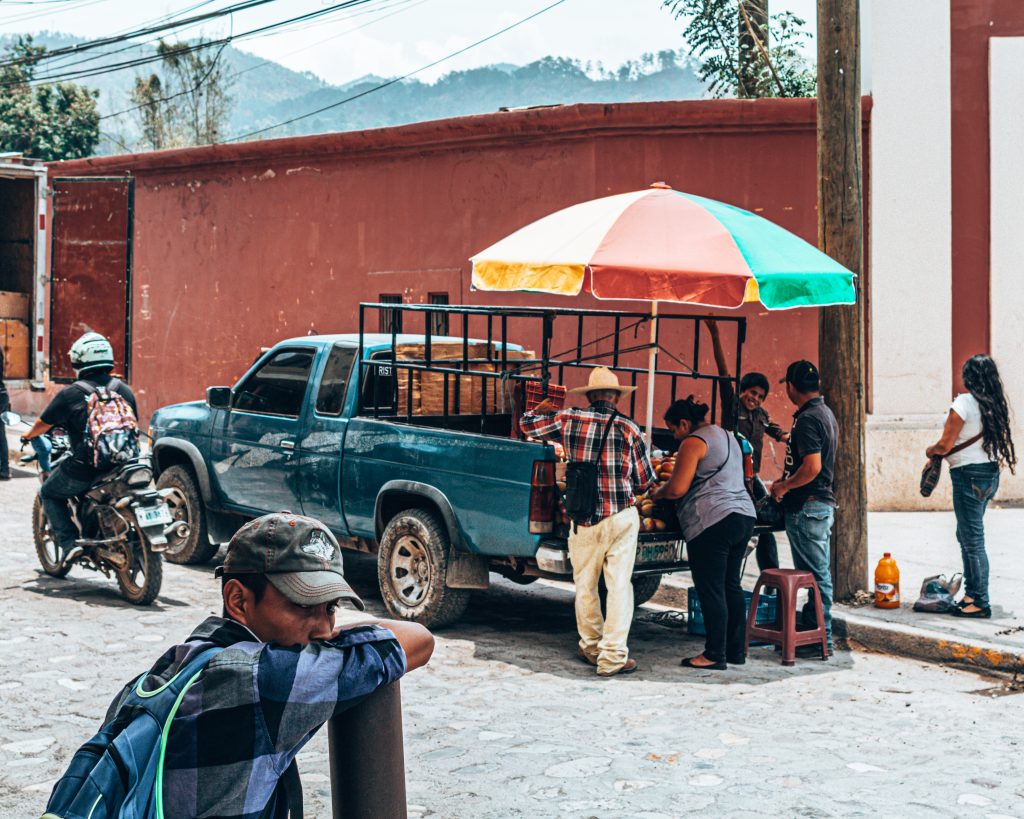
Every little bit helps them more than you can imagine. And when you haggle for the price of something that’s already a good deal, be fair! It may be an extra dollar or two for you, but for them, it’s the difference between eating or not.
However, if you’re looking to volunteer to help out, make sure you don’t do it with orphans or children. Research has shown time and time again that this is a bad solution. Instead, contact the organizations you look into and see if you can help in another way. For example, in Utila , there are a ton of nature and wildlife organizations that could use your help!
13. How can I support small local businesses in Honduras?
From the Roatan Chocolate factory to the Tea and Chocolate Place and the ViaVia hotel and restaurant in Copan , there are a ton of businesses out there trying to change the way things are done in Honduras . They’re more eco-friendly and sustainably run. They’re creating jobs for locals who can then start building a life for themselves and their families. They’re creating a business that will give now and for generations to come.
So when you find businesses like this, support them. Buy their products and tell your friends and family to help if they can. Write a review about them on Tripadvisor to get others to visit as well. It encourages these small businesses to make more important changes and to continue making this world a better place!
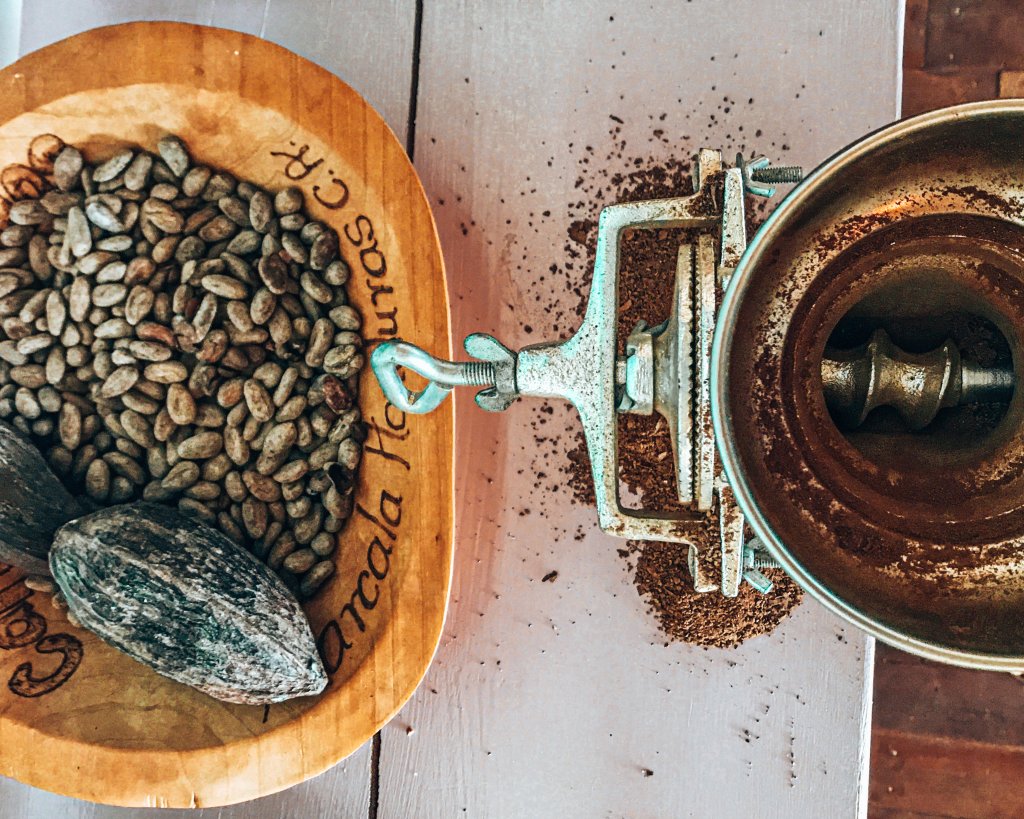
14. Can I swim with dolphins in Honduras? Or see other wild animals up close?
Short answer, yes. You can swim with dolphins and see some impressive wild animals. Should you? The answer is NO !
When you’re in Utila , there are a ton of conservation organizations that you can volunteer with, from whale sharks to iguanas. Unfortunately, the other animal tourism you will find, mainly in Roatan, is to be fully avoided. They have kidnapped dolphins and keep them captive so people can swim with them.
They have caged jaguars and pigs so people can take pictures with them. They have monkeys in chains for the perfect selfie… with a tortured and captive animal.
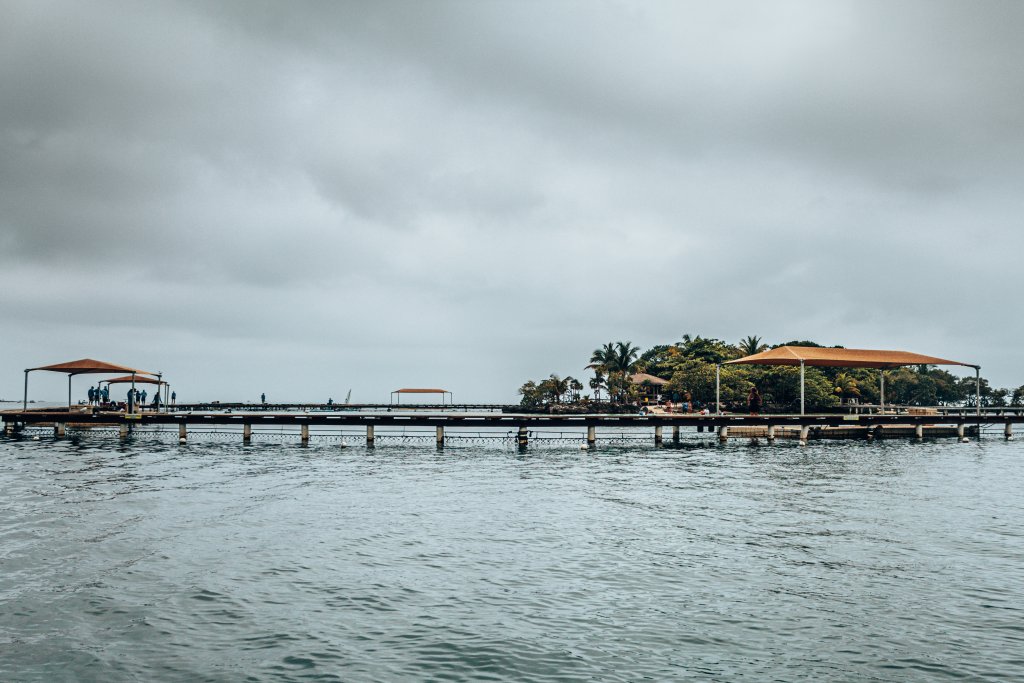
Please avoid this type of animal tourism in Honduras. By not giving these companies your money, you will make them reconsider their ways.
15. Do they have power outages in Honduras?
Let’s not forget that Honduras is a developing country, so they are still trying to figure certain things out. One of those things is how to get power to as many people as possible. In certain places, we had no trouble whatsoever with power outages. However, in a few places, mainly Roatan and Rio Cangrejal, the power went out almost daily.
This shouldn’t discourage you as you won’t be indoors during those times anyway. However, it’s important that you not leave things plugged in while you’re away from your room, or overnight, otherwise a power surge could destroy your valuable electronics.
Also, make sure you check out the power authorities’ Facebook page (like the one in Roatan ) as they’re very good at keeping everyone updated on scheduled outages.
16. Do they also have water shortages in Honduras?
With more and more people on this earth, it’s an understatement to say that certain people in developing countries don’t have access to water. The truth is that there are quite a few families in Honduras that live without water or power. Because this developing country depends heavily on rainwater, the dry season is somewhat brutal.
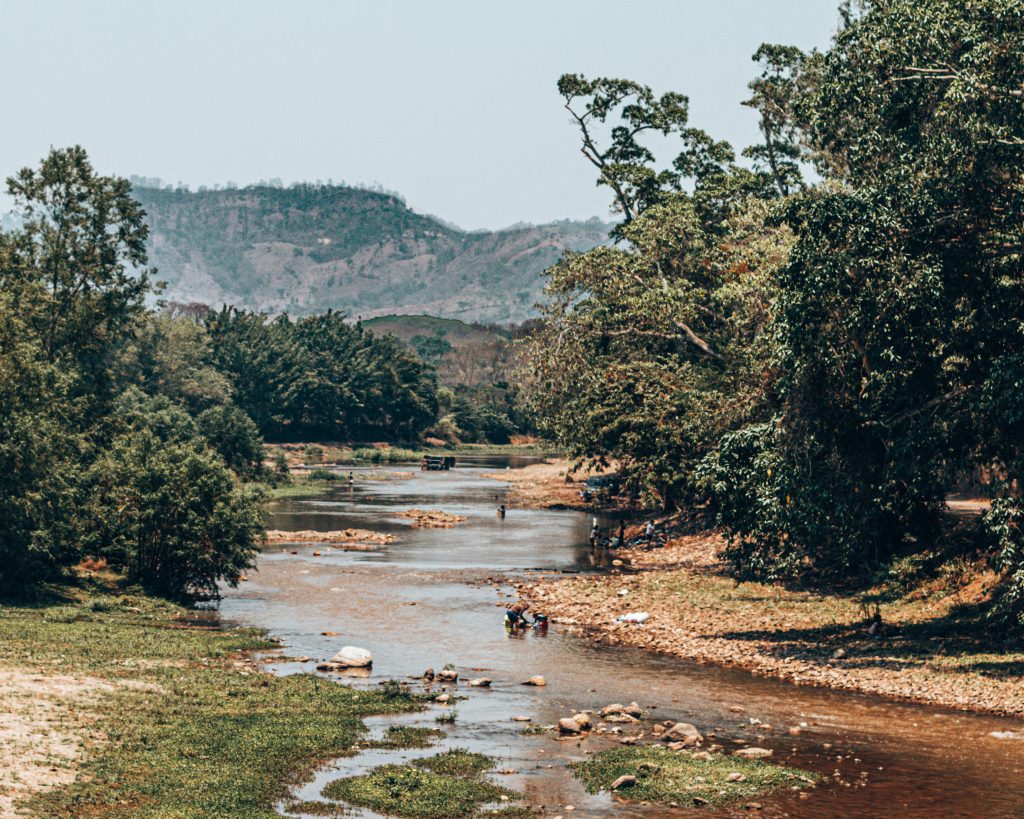
While we were in Copan , we did go through a few hours where there was no water available. It was nothing that was jarring, However, it’s so important that we help out as much as we can. Here are some tips on how you can help the Honduran community by using less water:
- Take shorter showers. Easy enough!
- Take it a step further and turn the water off while you are lathering or shampooing.
- Bring a reusable water bottle as most hotels and restaurants provide water refill stations
- Eat more vegetarian or vegan meals. Meat uses up so much water and resources before it becomes your meal.
- Skip on changing towels and sheets every day. That way, they don’t have to wash them so often.
We have a ton of articles available on how to be more sustainable, like: – How to be a more eco-friendly traveler – The most sustainable travel products for your next trips – How to go plastic-free (or reduce the amount of plastic in your life) – How to be more sustinable in your everyday life
Things to know about money in Honduras
17. what currency does honduras use.
In most of the country, especially mainland Honduras, Lempiras are used by all businesses. However, they do often accept US dollars.
The case is quite different in Roatan. On the island, they mainly use USD. They still use Lempiras , but it seemed like most restaurants and stores had their prices in USD.
18. Do they accept credit cards in Honduras?
You know the rule: ‘Cash is king!’. Most businesses, especially smaller shops and restaurants only accept cash. Certain hotels will accept credit cards, but they are few and far between.
Ideally, make sure you have cash with you, either in lempiras or USD, as this is how the great majority of businesses operate.
If they do accept a credit card, make sure you find out if they charge an additional fee, as some sneaky restaurants or hotels do. This is an extra fee on top of the conversion rate the credit card company charges. Just know that charging a fee to use a credit card is illegal. Refuse to pay with your card if ever the business does charge.
19. Should I leave a tip in Honduras?
The first thing you should do is to check your bill. Usually, they’ll note ‘ Servicio ’ if they do charge a service charge. In which case, you don’t need to leave a tip, unless your waiter was exceptional. If they were, you should leave an extra tip, but make sure you hand it directly to them. If not, whatever extra tip you leave will be split with the rest of the staff, just like the Servicio charge.
If there is no Servicio being charged, and you were pleased with your service, feel free to leave a tip. Anything above 10% for your waiter is a good amount. Remember that most of the population in Honduras live below the poverty line, so anything you can offer as a tip will go a long way for the staff.
20. Should I have small denominations of money?
If you’ve traveled to countries that have large denominations, you know how hard it is to come by the small change you actually need to conduct daily transactions. Honduras is no different. Most ATMs will give you money in 500 lempiras (roughly $20 USD). The unfortunate thing is that 500 lempira is a lot of money for most small purchases you make.
Ideally, try and break the large bills in larger restaurants, hotels, and shops. Avoid using big bills (100 or 500 Lempiras) at small shops if you can. You might be asking the shop owner to have more than his daily/weekly income on hand to offer a change. This is especially true for small fruit and veggie stands, or little convenience store.
Also, it’ll help you avoid getting scammed as most taxi drivers (either on water or land) will pretend not to have smaller denominations to avoid giving you any change back.
21. Can I exchange lempiras outside of Honduras?
If there’s one thing we never seem to learn is that you should absolutely exchange the local currency to $USD BEFORE you leave a country! This is no exception for Honduras.
We forgot to do it when we left the country and barely found an exchange bureau that accepted to buy our lempiras. And when we found a place that did accept them, they bought it at such a ridiculous price!
Travel advice in Honduras to make your trip more enjoyable
There you have it! These are the travel tips for Honduras we wished we knew before we got there. We didn’t have any safety issues or other types of problems while we were there. As we mentioned, we always felt safe and we really enjoyed our time in Honduras. We highly recommend you visit as well.
We hope that this helps answer a few of the questions you have about traveling safely to Honduras. If you have any other questions, let us know in the comments and it’ll be our pleasure to answer them!
We put a lot of time and effort into the content we create. Please like, comment and share, every action on your part helps us out tremendously and is very much appreciated.
You can also help us by pinning it for others to find.
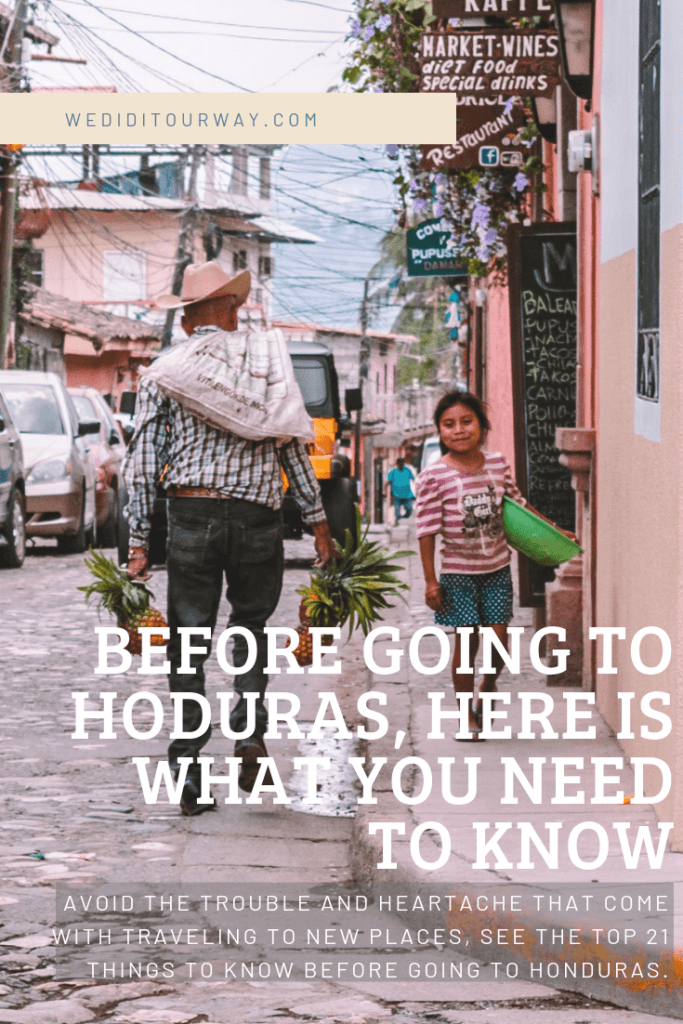
You Might Also Like:
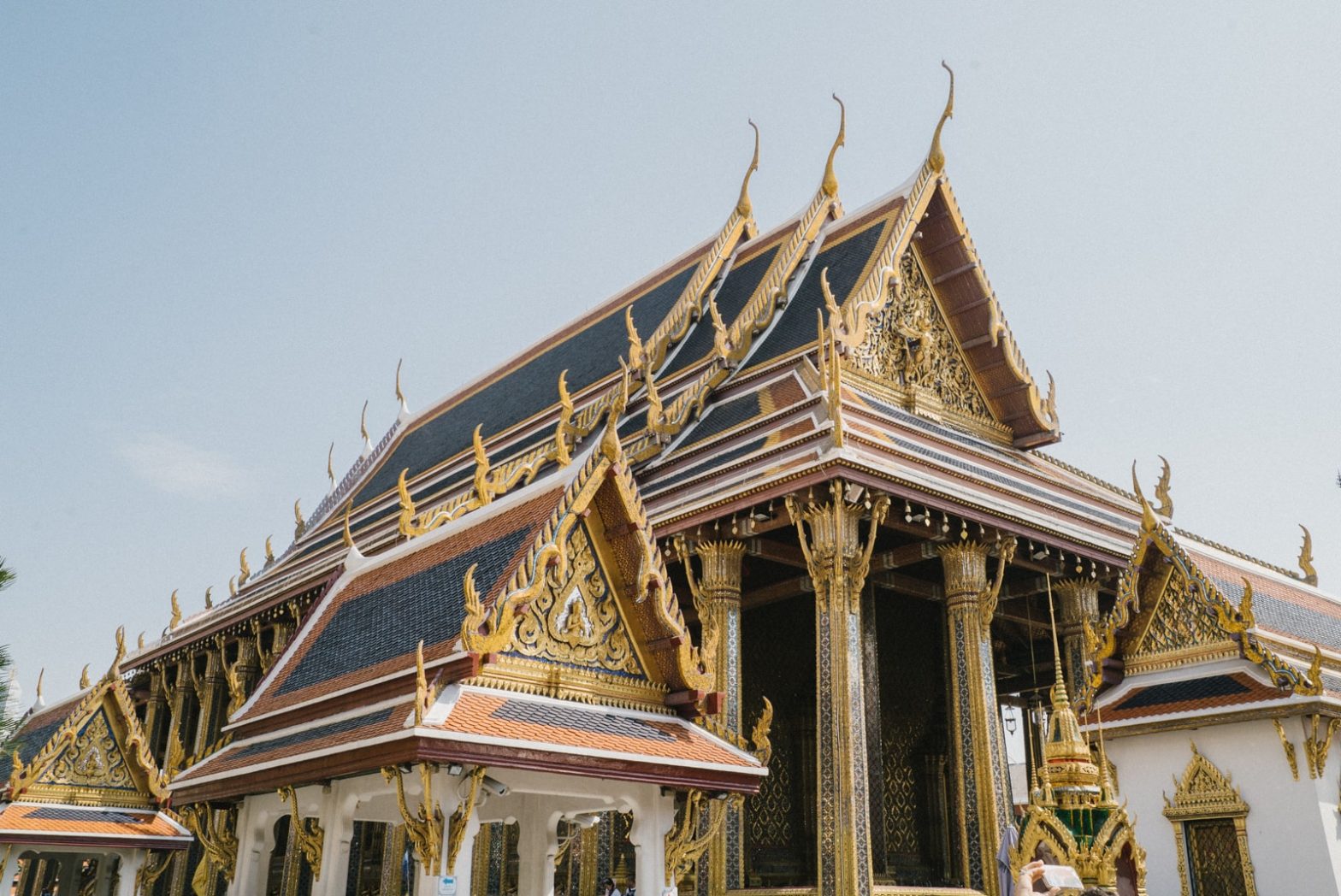
The 9 best activities for your first trip to Bangkok
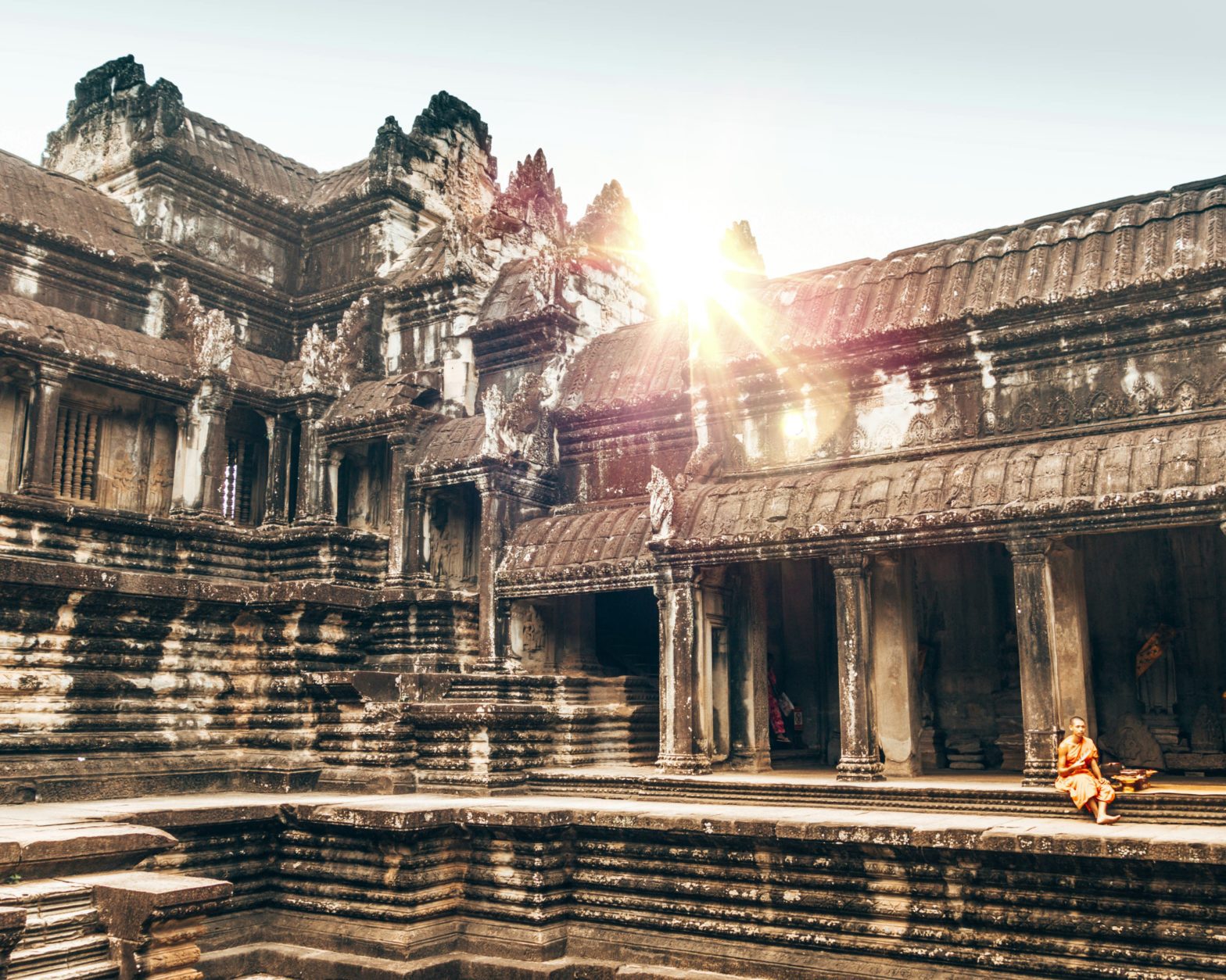
The best tips to know before visiting the Angkor Wat Temples

37 fun and unique things to do in Yerevan, including free activities
Submit a comment cancel reply.
You must be logged in to post a comment.
We’re Carine and Derek, two Canadians in love with each other, the environment and this world. We left our old routines behind to discover all the wonders our planet has to offer. We want to inspire everyone to chase their dreams and leave a positive impact on Earth.
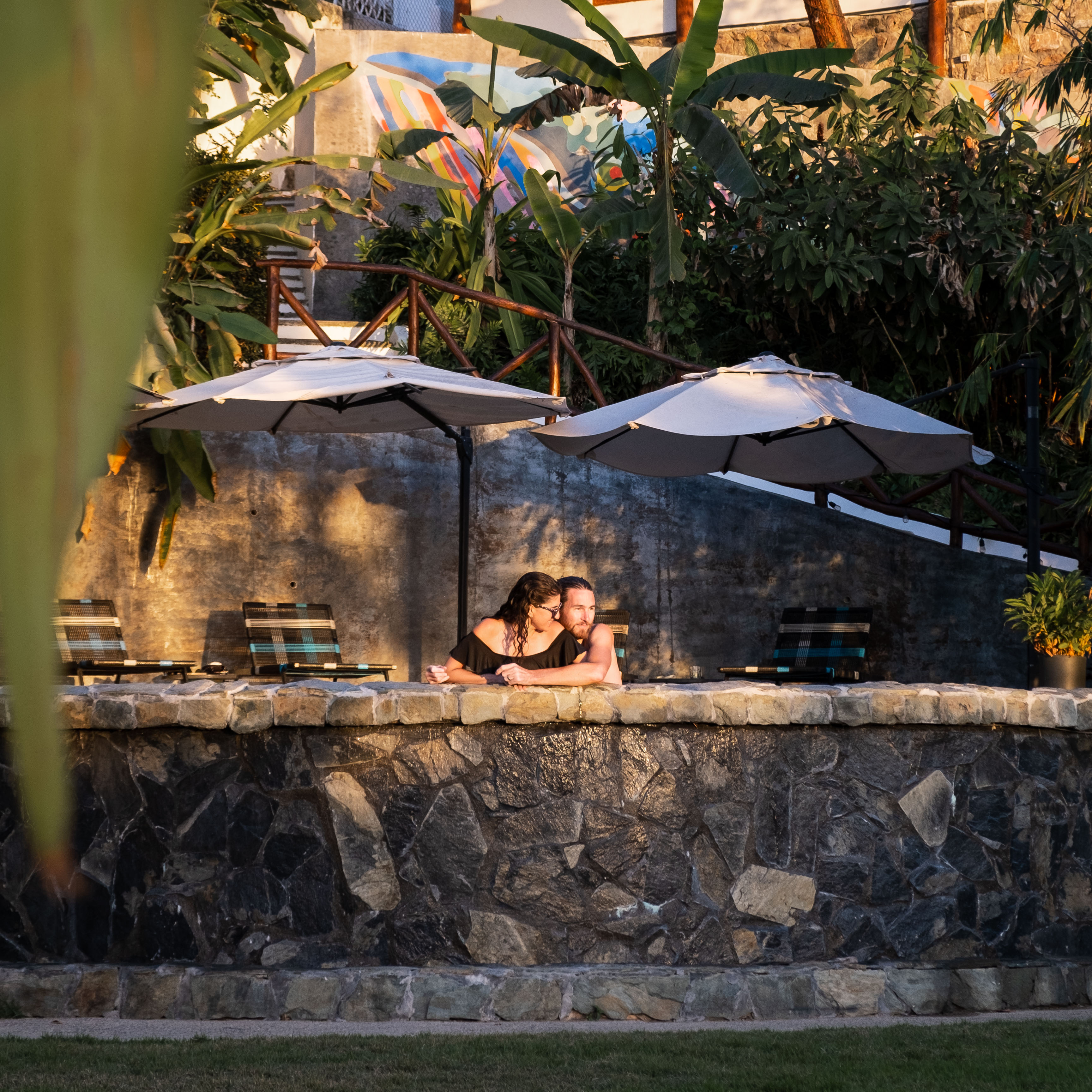
Let’s keep in touch!
Sign up for our newsletter to get our free e-book as well as our latest updates, travel recommendations, eco-friendly advice, inspiration, good vibes and so much more.
Thanks, see you in your inbox!

How to build a micro-influencer media kit – Step-by-step instructions for new content creators
Big or small, every influencer or content creator needs a media kit. They’re a part of the essential tools you need if you want to collaborate with brands. All too often, they're poorly made and lack the important information brands need to know that they HAVE TO work...

31 easy ways to go plastic-free
For July, we joined hundreds of million people around the world to go plastic-free. Our goal was to avoid all plastic for #plasticfreejuly. During the whole month, we shared our tips with our Instagram community to help them ditch plastic too. These are our 31 easy...
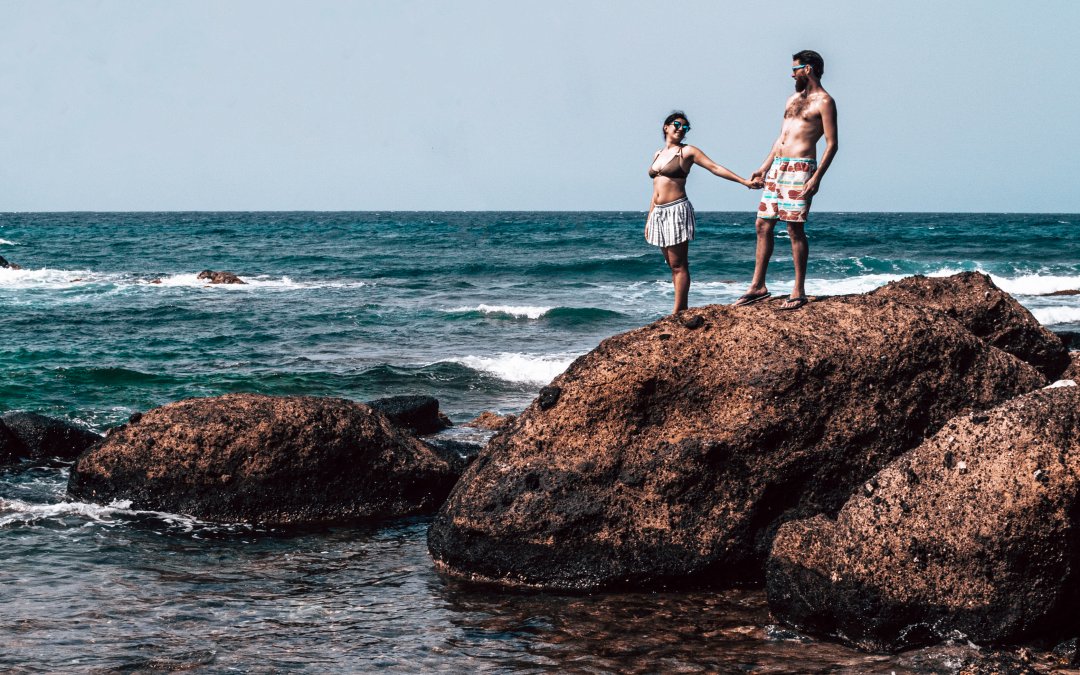
Your ultimate 2-week Honduras itinerary – The best things to do on vacation in Honduras
Welcome to the most underrated and under-visited country in Central America, Honduras. If you’re here, you’re probably thinking about visiting this beautiful country, and we’re here to tell you that you’re in for a real treat! Most people avoid Honduras, thinking it’s...
Follow us on Social Media
When is the best time to visit Honduras?
Jan 8, 2024 • 5 min read
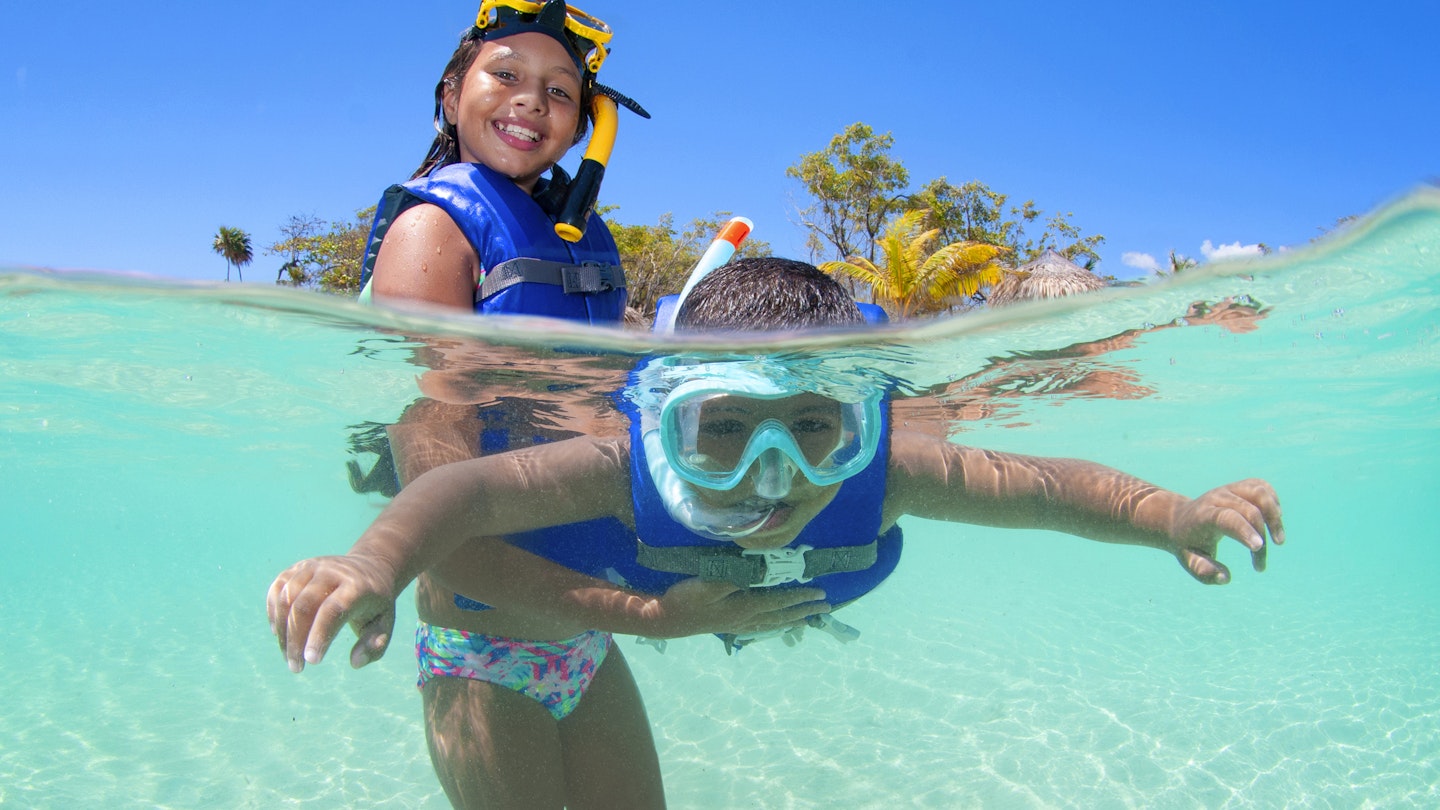
Young girl holding her brother in surface and helping him snorkelling.
A warm, subtropical climate makes Honduras an ideal year-round destination so the best time to visit depends on what you want to do when you arrive.
Many outdoor activities are weather-dependent and, just to add a little spice to your travel planning, some parts of Honduras remain dry while the rest of the country gets lashed by tropical deluges.
Whenever you visit, be prepared both for sun and rain and pack a sweater for the cooler highlands. Here’s our guide to the best time to visit Honduras.
January to June is the best time to visit for outdoor adventure
Sunny, warm days and brisk nights draw visitors to Honduras to explore the Maya ruins of Copán , hike in the mountains around Lago de Yojoa, and soak up the atmosphere in the quirky coastal town of Trujillo. This is Honduras’ busiest season and hotel prices spike around New Year and during Easter.
It’s also the driest time to hit the Bay Islands , where you can head beneath the waves to explore the world’s second-largest barrier reef – visibility is best between January and March.
January is a relatively quiet month, as everyone goes back to work after the Christmas celebrations and the Día de los Reyes Magos parades on January 6.
It’s cold at night in Santa Rosa de Copán, Tegucigalpa and other high-altitude destinations, but it’s a great time to head out to the Bay Islands where balmy temperatures and the last of the winter rains are a boon for beach bums and scuba divers alike.
February is the driest month of the year and that means terrific visibility for scuba divers visiting Roatán and Utila; if you’re lucky, you may spot the first solitary whale shark of the year.
It’s a wonderful time to explore the Maya ruins at Santa Rosa de Copán, but pack a sweater or two for the cold nights. Feria de la Virgen de Suyapa is celebrated across the country on February 3.
Easter is one of the biggest festivals in Honduras and highlights include solemn processions and carpets of flowers. While the highlands are beginning to see rain showers, they rarely last long, and warmer evenings bring an influx of visitors to Santa Rosa de Copán.
May brings the start of the rainy season in mainland Honduras; daytime temperatures remain hot and muggy. Coastal La Ceiba kicks off its two-week-long carnival – the biggest party in Central America, complete with costumed parades, exuberant dancing in the streets and live music.
It’s still relatively dry in the Bay Islands in June but it’s one of the hottest and rainiest months of the year in the rest of Honduras. In the forests, savannahs, and grasslands to the far east of the country, humidity is close to 100% and hurricanes begin to form in the Atlantic.
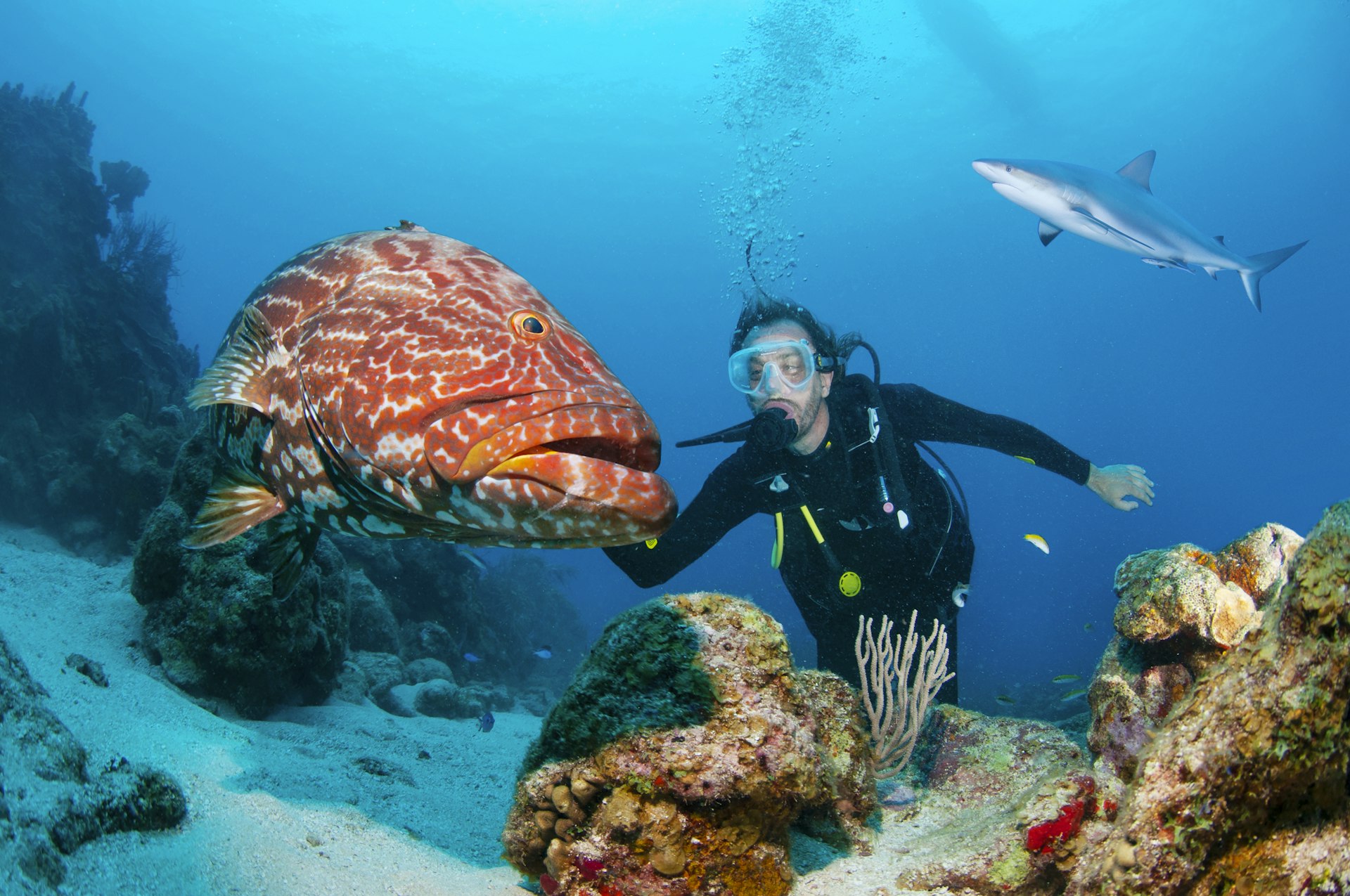
July to September is best for whale shark spotting
If you have your heart set on spotting whale sharks, July is the time to visit the Bay Islands. It's the peak of the annual whale shark migration, and you have a good chance of diving alongside a pod of these remarkable creatures.
Coastal Honduras is ruffled by occasional tropical storms in August and the rough seas can make traveling to the Bay Islands by boat a bit of a rollercoaster. Pods of whale sharks are still spotted in the depths around Utila , and it’s warm and pretty dry in the northern highlands – a pleasant time to be in Santa Rosa de Copán.
Many Hondurans go on vacation in August, so book your accommodations in advance. The Festival del Maiz is celebrated with parades and music across the country.
While the mainland is drenched by the heaviest rains of the year in September, there's a mini dry season in remote Moskitia in eastern Honduras.
It's the perfect time to head for the Río Plátano Biosphere Reserve and the small indigenous villages in the jungle, accessed only by riverboat. September 15 sees El Día de Independencia celebrations all over the country.
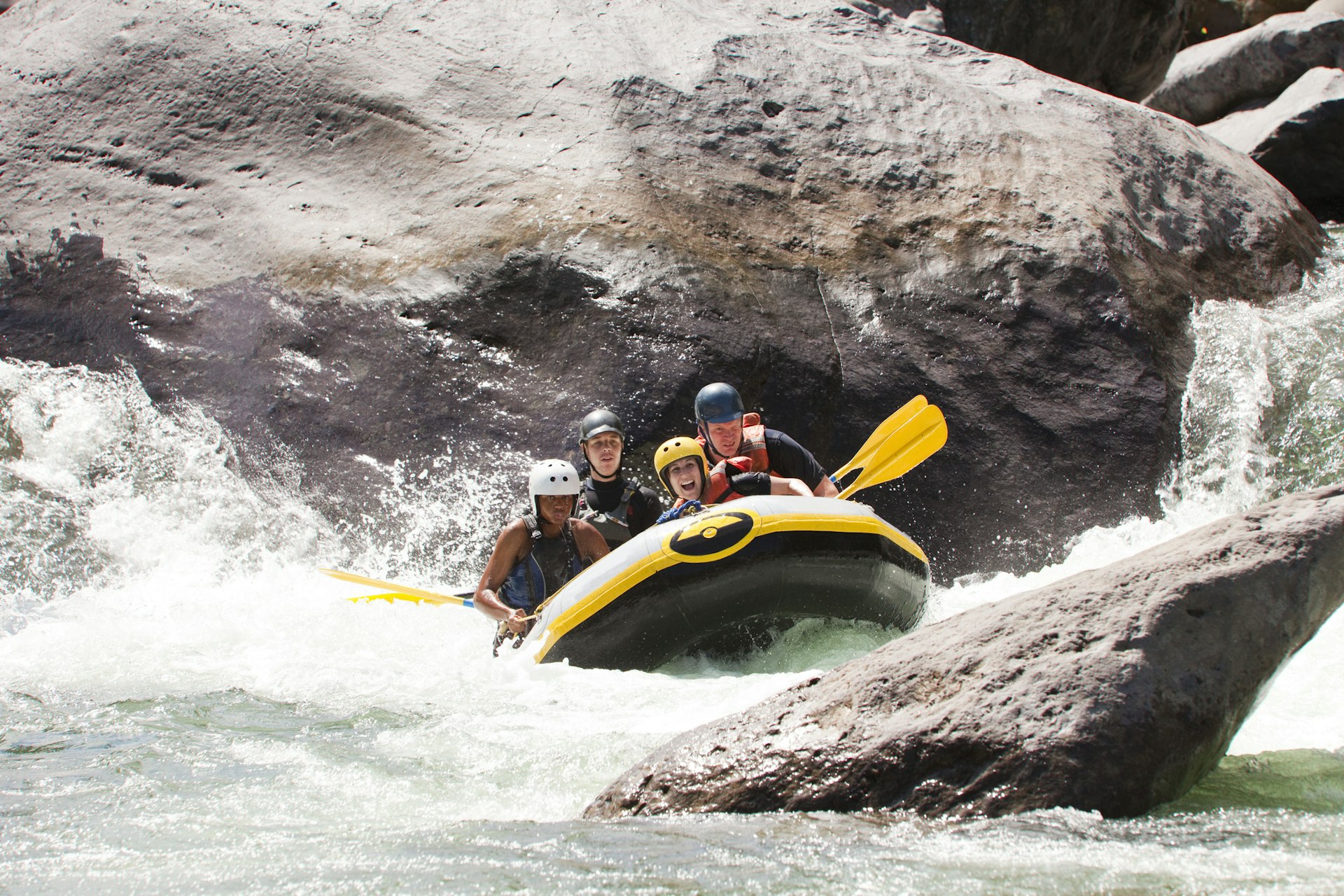
October to December is best for white-water sports and exploring Moskitia
While mainland Honduras is battered by torrential downpours during the rainy months, and overland travel is affected by occasional flooding and mudslides, conditions for white-water rafting and kayaking are particularly good after the rainiest months of September and October.
November sees the rivers swelled up by fall rains and adventurous travelers go white-water rafting on Río Cangrejal. The Chortí Indigenous people of the Santa Rosa de Copán area spend much of the month celebrating their biggest annual festival, Tzikin.
This is also an excellent time to jump aboard a riverboat and explore the remote La Moskitia region, which has its own mini dry season.
Scuba diving centers on Roatán and Utila stay open year-round, and while visibility isn’t as great as during the drier months, now is the time to get some real bargains on diving packages.
Festivities are in full swing during the weeks preceding Navidad (Christmas), so head for Santa Barbara to catch the celebration of El Paseo Real de las Chimeneas Gigantes, or to the north coast to witness Garifuna drumming and processions. It’s the start of the dry season, and accommodations get booked up ahead of the holidays.
Does Honduras have a hurricane season?
Honduras’ east coast and the Bay Islands are bathed by the Caribbean Sea, and the region is notoriously affected by the Atlantic hurricane season that typically lasts from June to late November.
However, the last time the Bay Islands were affected was in 1998 when Hurricane Mitch scored a direct hit. Odds are, you’ll only encounter a tropical storm or two in September or October. If you’d rather not risk it, opt to travel during the high season instead.
This article was first published July 2022 and updated January 2024
Explore related stories

Destination Practicalities
Mar 2, 2024 • 7 min read
Honduras is a place of immense beauty and diversity, but traveling here does require some forethought and on-the-ground know-how.
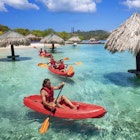
Jan 6, 2024 • 6 min read
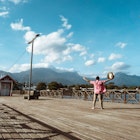
Dec 26, 2023 • 7 min read
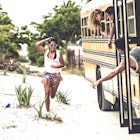
Nov 5, 2023 • 11 min read
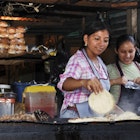
Jun 28, 2022 • 7 min read
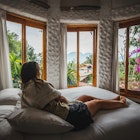
May 1, 2022 • 6 min read

Apr 5, 2022 • 7 min read

Mar 19, 2022 • 8 min read

Jan 7, 2024 • 3 min read

Dec 10, 2023 • 7 min read
Information
Find the most important information about starting your adventure to Honduras.
Before traveling to Honduras remember:
504 Assist Tourist Insurance
The 504 Assist insurance can be used by any natural person or foreigner who enters Honduran territory by commercial carrier air flight. It can also be used by any Honduran or foreign resident leaving Honduran territory to go abroad. It is valid for 30 days from the date of entry or exit from the country.
International Airports
Important: Every traveler leaving Honduran territory must pay an airport charge not included in your airfare. Airport Fees at: www.interairports.hn
Visa|Passport
You might only need your passport to visit Honduras. Check the entry requirements for citizens of your country. Citizens of Spain and the European Union do not require a visa to enter Honduras. They can remain within the Central American territory as tourists for a three-month period.
Other nationalities may require visas. Information at: cedturh.iht.hn
Exchange rate
The official currency in Honduras is the Lempira (L). Its name commemorates the Cacique Lempira, an indigenous leader of the lenca ethnic group who defended his territory during the Spanish conquest. The official exchange rate is set every day by the Central Bank of Honduras (Banco Central de Honduras). You can consult it in this link: www.bch.hn
You can exchange dollars and euros, to a lesser extent, in some stores (banks and hotels receive both currencies). You can use your Visa, Master Card and American Express credit cards in many places, and there are ATM networks with ample national coverage.
If you’re traveling from Argentina, Bolivia, Brasil, Colombia, Ecuador, Guyana, French Guiana, Panamá, Paraguay, Perú, Surinam, Trinidad and Tobago or Venezuela, you must first get vaccinated against yellow fever. Also if you’re coming from Angola, Benin, Burkina Faso, Burundi, Cameroon, Central African Republic, Chad, Congo, Equatorial Guinea, Ethiopia, Ivory Coast, Democratic Republic of the Congo, Gabón, Gambia, Ghana, Liberia, Mali, Mauritania, Guinea, Guinea Bissau, Kenya, Nigeria, Sierra Leone, Senegal, Somalia, Sudán, Tanzania, Uganda, Nigeria, Rwanda, São Tomé and Príncipe or Togo.
For more information about the vaccines required to enter Honduras, click here: www.embahonduras.es
The weather in Honduras has a privileged temperature throughout the year, with an average of around 25 degrees Celsius. However, it only has two marked seasons: a dry season, that begins on November and ends between April and May, and a rainy season, that centers on the months of May, June, July, September and October.
Honduras has a privileged location: it is the heart of Central America. To the north is the Caribbean Sea, with extensive beaches and the second greatest barrier reef in the world. To the south is the Pacific Ocean, with a black sand gulf that embraces calm waters. Its neighboring countries are Guatemala, El Salvador and Nicaragua. Its mostly mountainous territory contributes to the weathers’ diversity and the rich and extensive flora and fauna that characterize this tropical country.
Measurements
You’ll find a combination of systems of measurement, although the metric system is predominant. You’ll see that weight is also measured in pounds, liquids in gallons and areas in “manzanas” (approximately 1.72 acres). Heat is expressed in Celsius or centigrade and electricity reaches with 110 VAC 60Hz through flat parallel pin outlets, and, more often every day, in polarized outlets (3 pins).
ABOUT THE ATTRACTIONS
Beach and sun
Visiting the beaches in Honduras is an experience unlike any other. The country has a wide range of beaches for all tastes, from white sandy beaches to beaches of dark sand, bathed by the warm waters of the Caribbean or the agitated waters of the Pacific.
Honduras has about 91 Protected Areas that correspond to 27% of the national territory. It has great diversity of flora, with more than 64 plant ecosystem varieties, and of fauna, among which the Guacamaya or Guara Roja, the National Bird of the country, stands out.
Archaeology
Honduras is a territory with archaeological wealth in almost all of its departments. However, it is in Copán, the Sula Valley, Intibucá, La Paz and Olancho where most archaeological sites are located. There are more than 140,000 sites of archaeological interest that are still not registered.
Birdwatching
754 bird species have been documented in Honduras to date, and there are at least 50 others sighted. There is a rich birdlife, with many species endemic to Mesoamerica that live amongst the unique mix that furrows and makes its home in the country.
Tourist areas have restaurants serving international cuisine and American style dishes. Honduran gastronomy is very varied, since it has pre-Columbian, Spanish, Creole and, to some extent, African elements, as is typical throughout the Atlantic coast of Central America.
Colonial Cities
During the more than 300 years that the colonial period lasted, Spanish presence was manifest in all daily life activities. Now, Honduras is the country with the second greatest tangible colonial heritage in all of Central America.
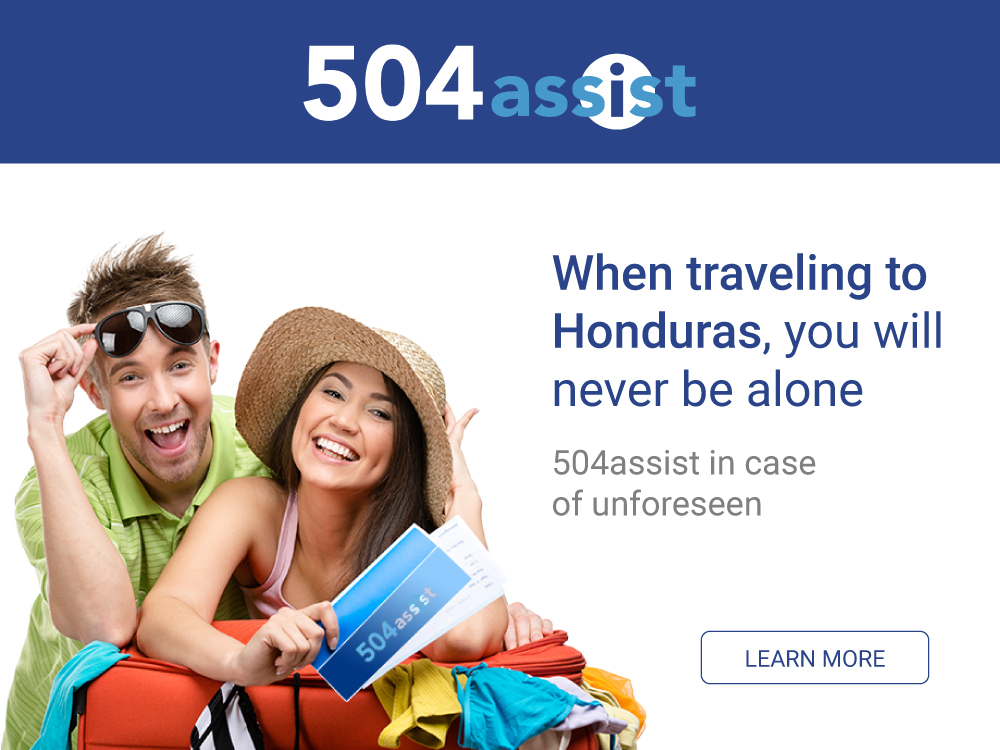
Update April 12, 2024
Information for u.s. citizens in the middle east.
- Travel Advisories |
- Contact Us |
- MyTravelGov |
Find U.S. Embassies & Consulates
Travel.state.gov, congressional liaison, special issuance agency, u.s. passports, international travel, intercountry adoption, international parental child abduction, records and authentications, popular links, travel advisories, mytravelgov, stay connected, legal resources, legal information, info for u.s. law enforcement, replace or certify documents.
Share this page:
Honduras Travel Advisory
Travel advisory july 17, 2023, honduras - level 3: reconsider travel.
Reissued with obsolete COVID-19 page links removed.
Reconsider travel to Honduras due to crime and kidnapping . Some areas have increased risk. Read the entire Travel Advisory.
Do not travel to:
- Gracias a Dios Department due to crime .
Country Summary : Violent crime, such as homicide, armed robbery, and kidnapping, is common. Violent gang activity, such as extortion, violent street crime, rape, and narcotics and human trafficking, is widespread. Local police and emergency services lack sufficient resources to respond effectively to serious crime.
Read the country information page for additional information on travel to Honduras.
If you decide to travel to Honduras:
- Avoid demonstrations.
- Be aware of your surroundings.
- Avoid walking or driving at night.
- Do not physically resist any robbery attempt.
- Be extra vigilant when visiting banks or ATMs.
- Do not display signs of wealth, such as wearing expensive watches or jewelry.
- Exercise caution using cell phones in public, including inside of cars while stopped in traffic.
- Visit our website for Travel to High-Risk Areas .
- Enroll in the Smart Traveler Enrollment Program (STEP) to receive Alerts and make it easier to locate you in an emergency.
- Follow the Department of State on Facebook and Twitter .
- Review the Country Security Report for Honduras.
- Prepare a contingency plan for emergency situations. Review the Traveler’s Checklist .
- Visit the CDC page for the latest Travel Health Information related to your travel.
Gracias a Dios Department – Level 4: Do Not Travel
Gracias a Dios is an isolated area with high levels of criminal activity and drug trafficking. Infrastructure is weak, government services are limited, and police and military presence is scarce.
- The U.S. government has limited ability to provide emergency services to U.S. citizens in Gracias a Dios as U.S. government employees are restricted from traveling to the area.
Visit our website for Travel to High-Risk Areas
Travel Advisory Levels
Assistance for u.s. citizens, honduras map, search for travel advisories, external link.
You are about to leave travel.state.gov for an external website that is not maintained by the U.S. Department of State.
Links to external websites are provided as a convenience and should not be construed as an endorsement by the U.S. Department of State of the views or products contained therein. If you wish to remain on travel.state.gov, click the "cancel" message.
You are about to visit:
- Meet the Team
- Work with Us
- Czech Republic
- Netherlands
- Switzerland
- Scandinavia
- Philippines
- South Korea
- New Zealand
- South Africa
- Budget Travel
- Work & Travel
- The Broke Backpacker Manifesto
- Travel Resources
- How to Travel on $10/day
Home » Central America » Travel Safety
Is Honduras Safe for Travel? (Insider Tips)
Home to the second biggest barrier reef in the world , beaches, and sparkling turquoise sea, as well as a whole host of Mayan ruins , amazing coffee, and the second largest rainforest in the Americas, Honduras is extremely biodiverse: there are 770 bird species alone.
But Honduras is far from Eden . Violence has long ruled here. This Central American country actually has one of the highest murder rates in the world. Drug trafficking gangs, corruption, and extreme poverty keep Honduras down.
Naturally, you’re going to be wondering, “Is Honduras safe?” That is why we have created this insider’s guide looking at the safety of travelers in Honduras. We are all about smart travel and we’re here to help you travel smart too.
We are going to be covering a whole lot of topics in this epic Honduras safety guide. We’ll be answering super important questions including “How safe is Honduras right now?” and “Is it safe to live in Honduras?” We also give loads of tips for solo travelers and families.
For your trip to Honduras, our handy guide has you covered.

Unlock Our GREATEST Travel Secrets!
Sign up for our newsletter and get the best travel tips delivered right to your inbox.
How Safe is Honduras? (Our take)
Is honduras safe to visit right now, safest places in honduras, 20 top safety tips for traveling to honduras, is honduras safe to travel alone, is honduras safe for solo female travelers, more on safety in honduras , faqs on honduras’ safety, so, is honduras safe.
Biodiversity is a huge part of Honduras. There’s more nature here than you can shake a stick at. Couple that with 470 miles of (mainly) Caribbean coastline, a load of beaches and tropical islands, as well as Mayan ruins and you got yourself a dream destination.
It might sound like paradise… But it isn’t. Honduras isn’t exactly what we’d call safe.
This Central American country suffers from what many countries in the region have suffered from or are currently battling with – namely corruption, gangs, and drugs. With those come violence and poverty. So backpacking Honduras isn’t always just a breeze…
In fact, most people in Honduras have a family member in a gang. So, yeah. We’re not going to lie – it’s pretty sketchy.
However, whilst it’s quite dangerous, the government is promoting tourism in Honduras. And people do go.
Some areas are also safer than others. For example, the Bay Islands are safer than the mainland. Many people do travel to this particular part of Honduras, even with their families.
There is no such thing as a perfect safety guide, and this article is no different. The question of “Is Honduras Safe?” will ALWAYS have a different answer depending on the parties involved. But this article is written for savvy travellers from the perspective of savvy travellers.
The information present in this safety guide was accurate at the time of writing, however, the world is a changeable place, now more than ever. Between the pandemic, ever-worsening cultural division, and a click-hungry media, it can be hard to maintain what is truth and what is sensationalism.
Here, you will find safety knowledge and advice for travelling Honduras. It won’t be down to the wire cutting edge info on the most current events, but it is layered in the expertise of veteran travellers. If you use our guide, do your own research, and practise common sense, you will have a safe trip to Honduras.
If you see any outdated information in this guide, we would really appreciate it if you could reach out in the comments below. We strive to provide the most relevant travel information on the web and always appreciate input from our readers (nicely, please!). Otherwise, thanks for your ear and stay safe!
It’s a wild world out there. But it’s pretty damn special too. 🙂
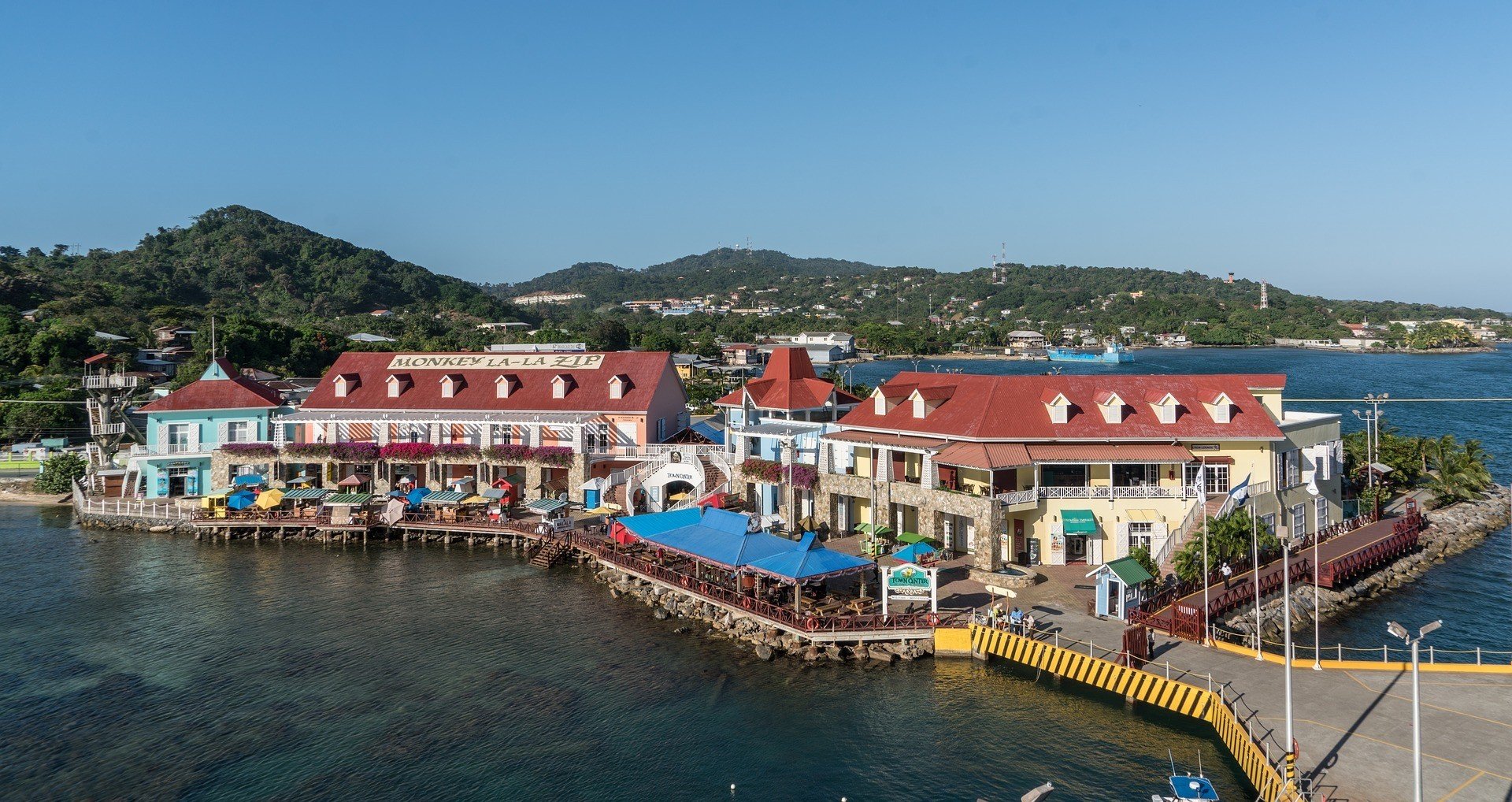
Visiting Honduras right now is as safe as it ever was: not very.
However, More than 2 million tourists visited in 2017 . A large chunk of those arrived via cruise ships, however. That’s mainly to visit islands like Roatan. Chances are, if you are arriving via a cruise ship, you will be safe. Traveling around the country is a more complicated matter.
The government of Honduras is committed to attracting more tourists. By 2020 they want an additional million tourists annually. Clearly, with the pandemic, that goal wasn’t reached, but it’s not been forgotten either.
Honduras is one of the murder capitals of the world. The rate of young people killing other young people is down to two main gangs : Mara Salvatrucha (MS-13) and Barrio 18. They practice “war taxing”, which is essentially just demanding money from people. This helps keep everyone in poverty.
There have been protests due to contested election results in late 2017 . In these demonstrations, more than 1,500 were arrested and 30 people were killed.
That said, the government claims there has been a 52% decrease in violent crime over the past five years. In fact, according to InSight Crime there has definitely been around a 26% drop in crime since 2016. This is due to negotiations between criminal groups and the government, and possibly because of economic aid from the US.
So whilst it’s getting safer , it’s a slow process. We’d say only experienced, intrepid travelers should tackle this one alone. Anyone else would do well with a trusted tour group.
There are probably more sketchy areas in Honduras than there are safe ones. generally, if you’re visiting with a guided tour, you should be fine. However, if you decide to travel independently, you’ll face quite a few challenges. To make sure you’re having a successful trip, we’ve listed the safest, and the no-go areas below.
Bay Islands
The Bay Islands are the only palace in Honduras that can (kind of) be considered somewhat safe. While there were a few violent crime incidents, most travelers have a safe and pleasant stay. You can also visit the island through a guided tour, which will add another layer of safety to your trip. These are the safest islands:
Utila Island
Once you get off the ferry in Utila you have officially entered an alternate reality. Utila is unlike the rest of mainland Honduras in just about every way. Suddenly you find yourself surrounded by backpackers, dive shops, hostels, burger shacks, smoothie stands, and pirate bars.
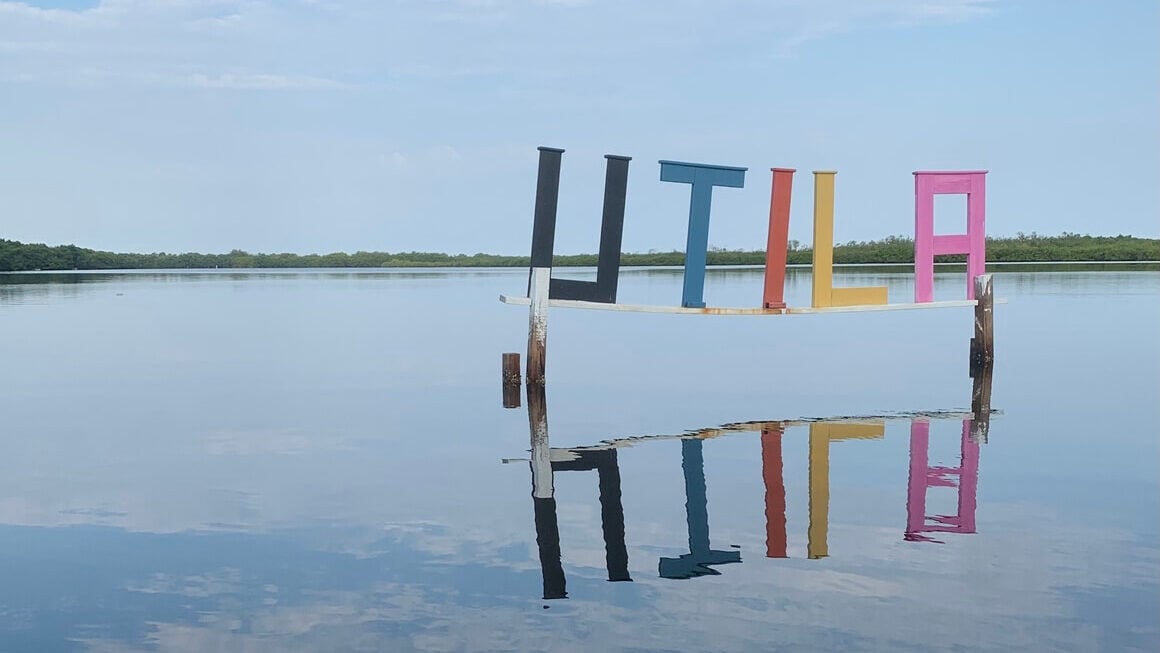
It is important to know that Utila is very much a developed backpacker hotspot. Don’t expect to discover an undeveloped private island. That said, the development that has taken place has not totally sucked the island dry of its charm. It may have improved it actually.
Roatan Island
Roatan is the largest of the Honduras Bay Islands. Roatan is the more developed, more expensive, and family friendly big brother of Utila. The island attracts a very different crowd indeed. Expat retirees, yachties, families with kids, and cruise ship tourists make up a large majority of the demographic found on Roatan at any given time.
One good thing I can say about Roatan is that the dive sites are excellent around the island. If you are a keen diver, Roatan is well worth a visit.
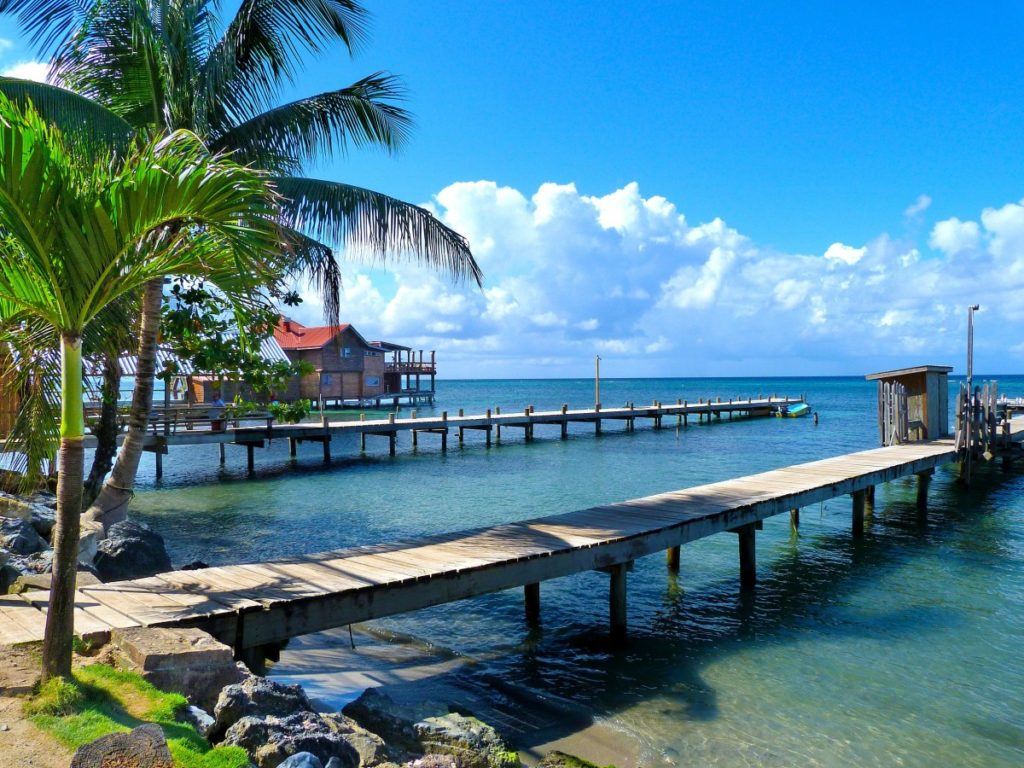
Places to avoid in Honduras
We’ve made it pretty clear that Honduras isn’t the safest country. You can definitely push your luck by staying in the wrong neighborhood as well. Being in the wrong place at the wrong time can seriously get you in trouble. That’s why we listed the no-go areas in Honduras below. Note that they are generally safe to visit during the day (with a bit of caution obviously), especially if you have a local guide, but should be fully avoided at night.
- San Pedro Sula – this is an area that has a lot of gang activity, you should definitely be careful when visiting or might even think about leaving it out if your Honduras itinerary completely. Poverty is bad in San Pedro Sula so you’ll definitely have to watch all of your belongings and stay very aware of your surroundings.
- Tegucigalpa – this is another area with lots of gang activity. While tourists usually aren’t targeted by gang wars and violent crimes, you still need to take a lot of caution while visiting this district. Stay away from the small alleys and side streets and stick with the areas where there are a lot of people. Completely avoid it at night!
- Any public transport station – these attract thieves and sketchy characters. If you have to wait for your bus or taxi, stay inside a cafe or restaurant until your ride arrives.
Honduras Travel Insurance
ALWAYS sort out your backpacker insurance before your trip. There’s plenty to choose from in that department, but a good place to start is Safety Wing .
They offer month-to-month payments, no lock-in contracts, and require absolutely no itineraries: that’s the exact kind of insurance long-term travellers and digital nomads need.

SafetyWing is cheap, easy, and admin-free: just sign up lickety-split so you can get back to it!
Click the button below to learn more about SafetyWing’s setup or read our insider review for the full tasty scoop.
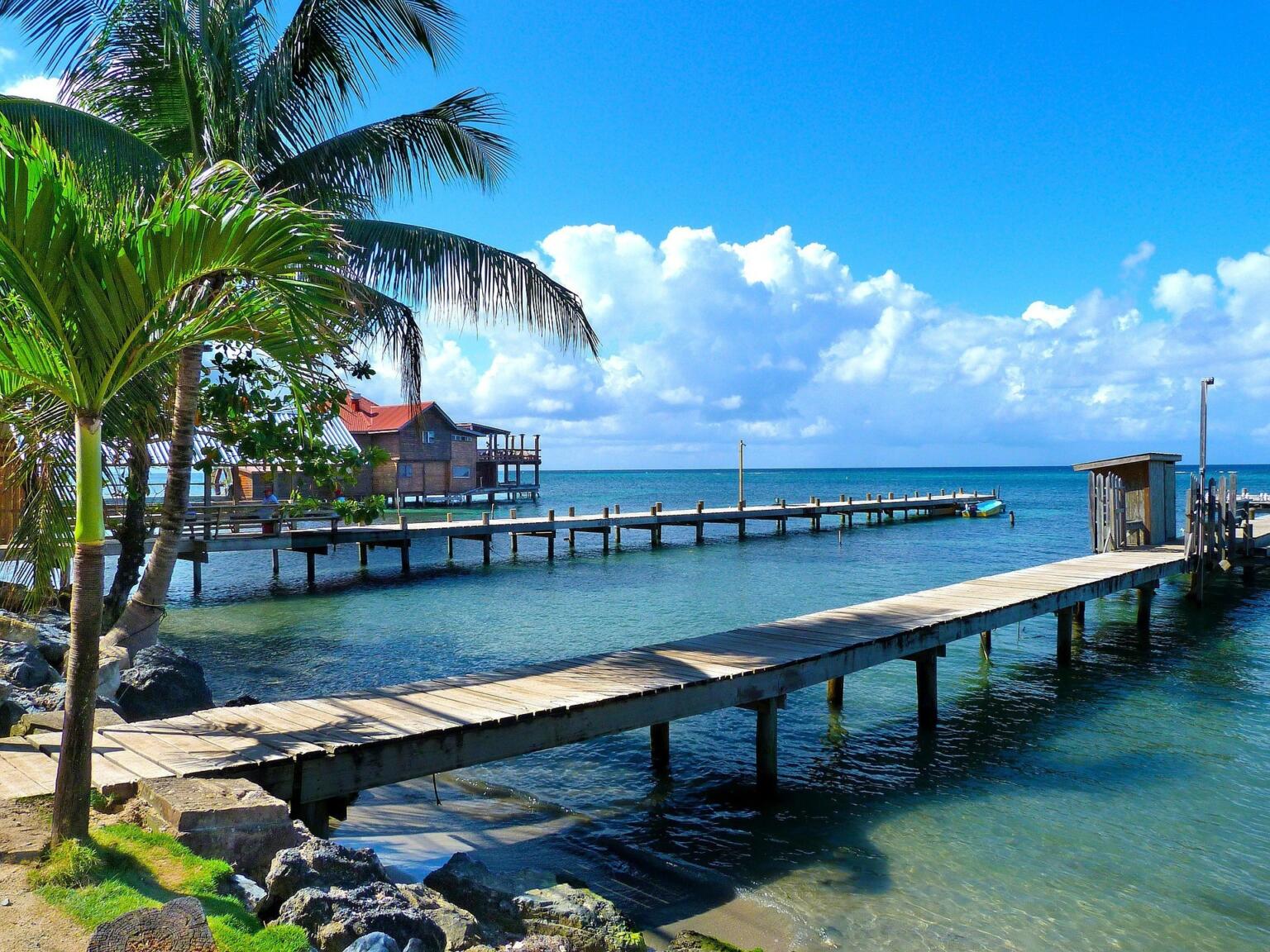
Gang violence is a big issue in Honduras. These drug trafficking gangs rule people’s lives. Lucky for you, you’re not a Honduran citizen. So you’ll likely escape having to pay “war tax” (or facing the consequences). The poverty resulting from all this is what you’ll have to watch out for. Namely, being robbed. There are some safety points that travelers should know for anywhere they travel, but Honduras requires these special considerations.
- Don’t carry your valuables (or all your cash) around with you – why risk getting them stolen? You can keep extra bank notes and passport copies in a money belt for emergencies.
- On that note, don’t even LOOK wealthy – designer clothes, jewelry, SLR round your neck = advert for thieves.
- Protests can happen out of the blue – careful of large crowds. Don’t get involved.
- Protect yourself against mosquitoes – these nasty critters carry malaria, zika virus, and dengue fever. Cover up, use repellent, burn coils.
- Hand over the goods – if someone does try robbing you, let them. Seriously. People die resisting robbery.
- Carry a dummy wallet – a throwdown, fake wallet, whatever. It should have just a little cash in it to hand over in the event of a mugging.
- Take care of beaches after dark – especially in Tela and the North Coast. Attacks on tourists have been reported.
- Be vigilant in busy places – tourist spots, airports, bus stations, cities in general. This is pickpockets’ paradise.
- Be aware that there are high levels of HIV and AIDS in Honduras – it’s important to keep that in mind.
- Use ATMs only in shopping centers, hotels, inside banks – only these areas.
- And don’t use ATMs at night – there have been attacks on people.
- Or get too much out at once – again, why risk it? Small amounts only.
- Keep valuables locked in a safe – room robberies can happen. You don’t want to lose your passport.
- It’s best not to travel around after dark – it’s riskier.
- Be careful in border areas – El Salvador, Guatemala, and Nicaragua. The border with Nicaragua is also littered with unmarked minefields.
- DON’T DO DRUGS – they’re illegal and you could end up in a “rehabilitation center”. Plus, why contribute to the gangs?
- Watch out in San Pedro Sula and Tegucigalpa – this is where the two main gangs operate. In the day, it’s generally ok, but at night you should just take a taxi.
- Nature is dangerous here, too – venomous snakes, crocodiles, poisonous spiders. Watch your step, basically.
- Hurricanes can and do occur from June to November – if caught one, you’ll want to be staying in a STABLE building.
- Make sure you’re up to date with your vaccines – check with your doctor and see what you’ll need for Honduras.
It’s not 100% safe in Honduras. Not really. But traveling there is possible, of course. And if you’re visiting as part of a tour, then you’re likely to stay safe.
Independent travel is going to require A LOT of being careful. Travel smart and make sure your safety and security is your number one priority.
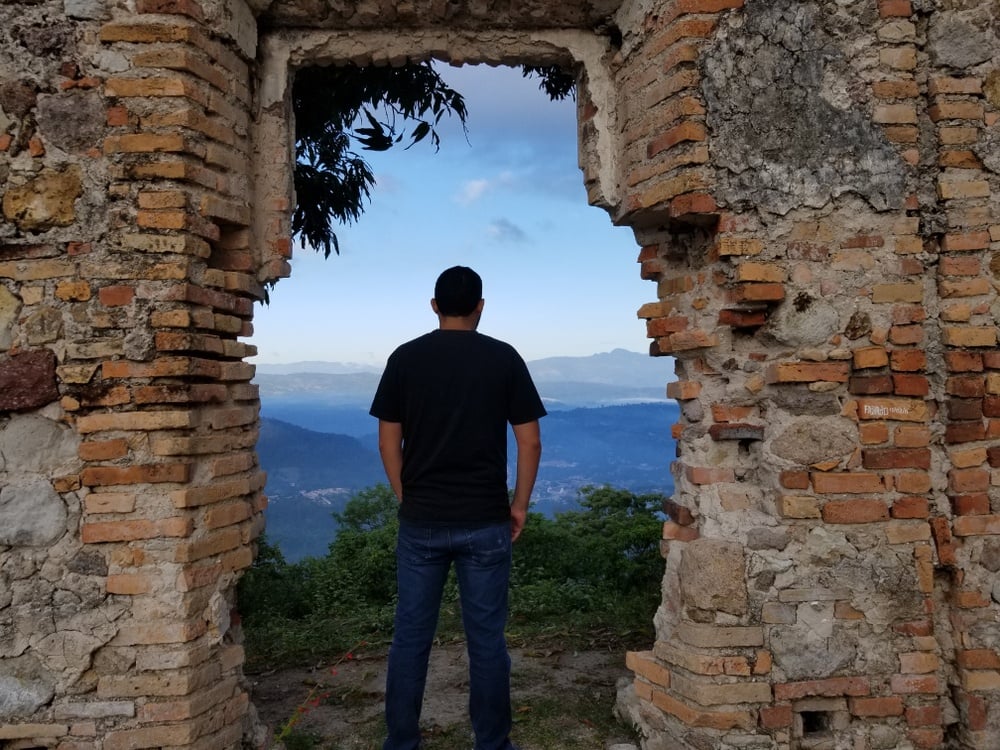
Seeing the world without anyone to answer to, getting to challenge yourself and grow as a person. There are definitely a fair few pros to solo travel. At the same time, traveling alone can be stressful, boring, lonely, and dangerous in varying quantities.
And we’re not going to lie, Honduras doesn’t exactly lend itself to solo travel. This is essentially an unsafe country. You’ll need to be a confident traveler. This isn’t one for first-time backpackers. But if you’re thinking about it, here are some tips.
- Traveling alone to remote areas can be sketchy. As in, dangerous. You either take extreme care or make some travel buddies to go with.
- Make sure to stay at well-reviewed, trusted accommodation. You can see from reviews if the staff somewhere consists of dodgy people. Read reviews, find somewhere that’s right for you, and book yourself a room or a bed. You’ll get to meet fellow travelers at the best places.
- Don’t go off-grid . Make sure you keep in touch with people. Post a few Facebook updates. Send some messages. Facetime your parents. Just make sure that people know where you are.
- Don’t hitchhike or take lifts from strangers – especially if you’re by yourself. People traveling alone are definitely going to be more of a target than a group of people.
- When you’re walking around, look confident. The more lost you look, the more of an easy target you’re going to be. Try to memorize a map of the area because you definitely don’t want to be getting your phone out all the time, either.
- Stay aware at all times. This isn’t the sort of country where it’s just a couple of problem areas and that’s it . A lot of Honduras is risky. Don’t let your guard down, stay vigilant, and use your common sense.
- That said, it’ll be cities where most crime occurs. Therefore these are the places that carry the most risk. Be on high alert in urban areas.
- When it comes to transport, leave plenty of time to get to your destination. Traveling after dark, either on foot, on a bus, or in a car, can be dangerous. Make sure you arrive before night falls.
- Ask locals about what areas they think are safe. Or simply get recommendations for things to eat, drink, see or do. It’s a good way to get to chat to locals, but also just a good way to see things that maybe other tourists won’t be asking for.
- With that in mind, use those Spanish skills. Learn a few words and phrases. It will open up the country for you, both in terms of talking to people and simply getting around.
Hondurans are warm and welcoming people who have to live day in, day out with the violence in their country. Chatting to them means getting first-hand knowledge, and means your experience is going to be a lot richer.
Traveling here is definitely adventurous, but that doesn’t mean it’s off-limits for solo travelers. People do it. You can too.
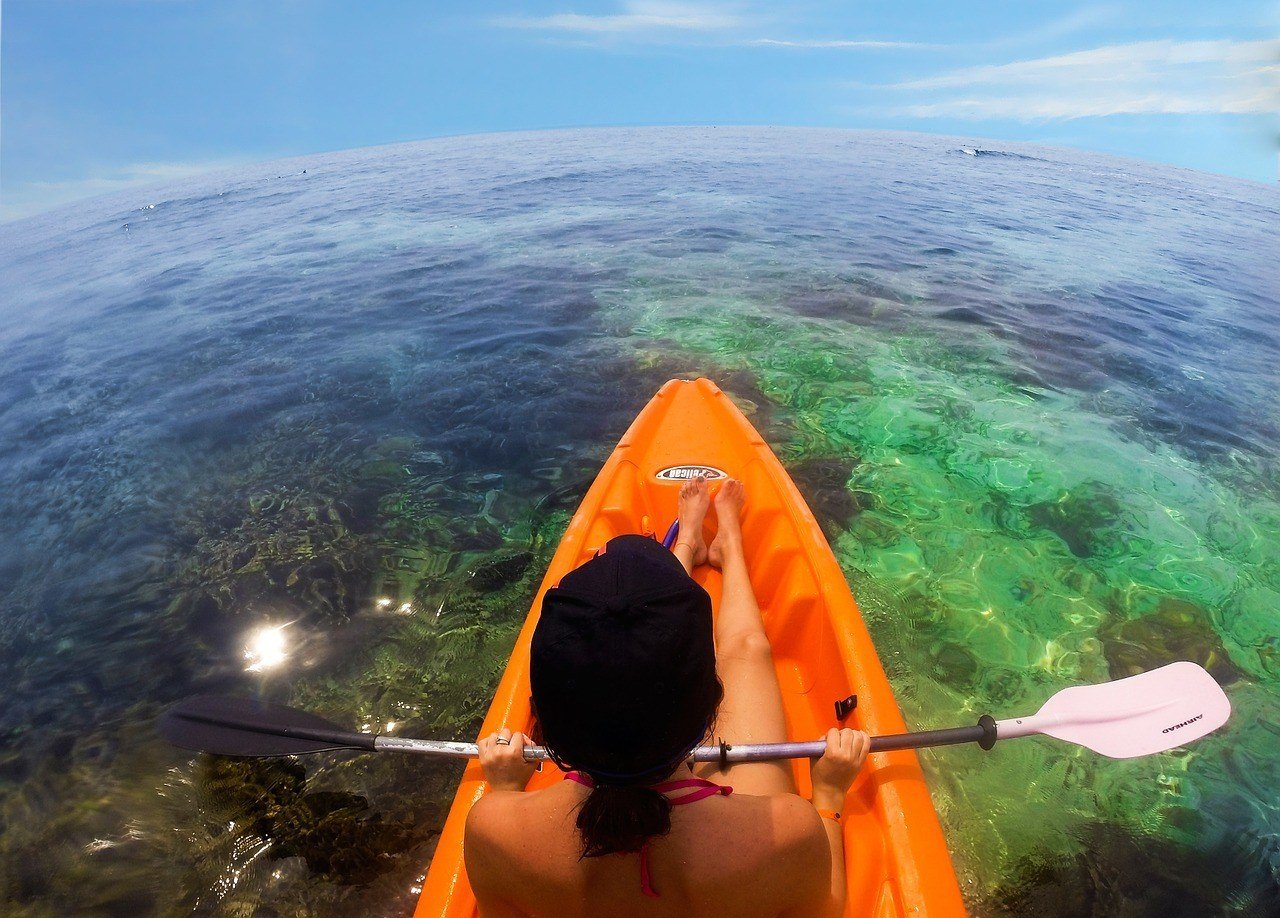
Honduras may have one of the highest murder rates in the world, and as a solo female traveler, that doesn’t sound very inviting as a destination. We get it. We’re not going to say it’s the safest place to travel, nor is it going to be the easiest place to travel as a solo female.
But the thing is women DO travel alone to Honduras. It can be a super enriching experience. With all the threats of violence, there’s a low number of tourists, so oddly you can really have an authentic experience here while getting to know Honduran women, too.
It can be safe as a solo female traveler in Honduras. Of course, being a woman anywhere is going to come with additional risk . So keep that in mind – and have a read of our safety tips for solo female travelers thinking of taking a trip to Honduras.
- If you’re the sort of person who prefers to be around people to chat with, head to the Bay Islands. This is the safest area of Honduras and this is also the place where you are going to find a lot of other travelers. It’s perfect for sharing travel stories, trips and maybe even making a travel buddy or two.
- Other ways to meet fellow travelers – and feel safer – involve joining a tour. They can even help take you across other Central American countries on your travels, too.
- If not, plan everything in advance. Leave fewer things to chance and risk. This will definitely help not just your peace of mind but will help you FEEL and BE safer.
- Check in and let people know your plans. Whether that’s with friends and family back home, or with accommodation staff, or both. Let people know where you are. Somebody knowing where you are is much better for your safety than nobody knowing where you are.
- Honduras has a macho society. Be aware of how women are perceived, and their role in the male-dominated world of this country. This doesn’t necessarily mean that women are more threatened, just that you might have to be a bit more aware and assertive.
- It’s not a good idea to go out to bars and clubs by yourself. You’ll get the wrong attention. Go with a male friend or go out with a group of people.
- Dress modestly and cover up to avoid unwanted attention. Anything that shows too much is going to attract too much attention probably. It’s best to be as incognito as possible. Blend in.
- Catcalling definitely happens in Honduras. Don’t make a big deal about it. It will probably cause more stress than you’ll want. The best course of action is just to ignore it and walk on, but involve someone else if the harassment continues.
- Be aware that Honduran women are oppressed by the government. Abortion is completely illegal (having been recently re-criminalized ). There’s very little in terms of gender equality. The opposite in fact.
Honduras may sound scary, but if you take into account the advice of locals, plan ahead, and use your common sense, Honduras will open up to you as a solo female traveler. Honduran women face daily struggles. Sexual violence and oppression are frequent tragedies here.
But if you meet the local ladies and learn about their lives you’re going to have a VERY enriching experience on your hands. There’s a lot to learn about Honduras that goes beyond gangs and beaches. It’s a country with a big heart. And Honduras can be a safe place for solo female travelers, but we’d only recommend it after some solo travel experience.
We’ve covered the main safety concerns already, but there are a few more things to know. Read on for more detailed information on how to have a safe trip to Honduras.
Is Honduras safe to travel for families?
In certain areas, yes – Honduras is safe to travel for families.
Take the Bay Islands, for example. You’ll be able to travel around here with relative ease. Especially through a tour company.
And this area is great for children. Your little ones get to see the Mesoamerican Reef, the second largest barrier reef in the world. And that is pretty cool.
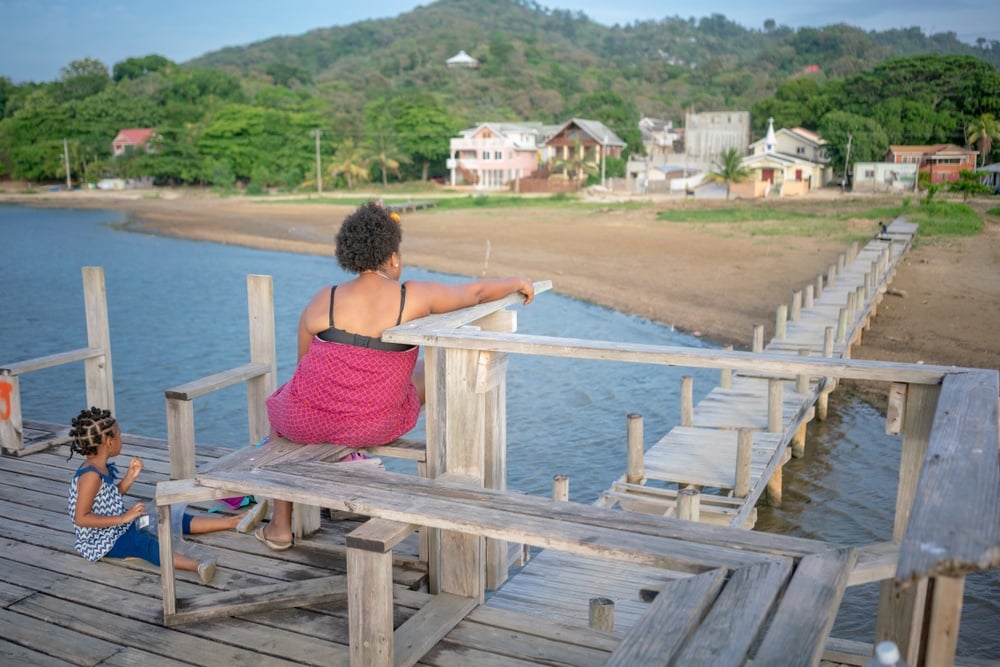
La Ceiba on the northern coast, with mountains, jungles, and beaches, is a chilled and adventurous area to explore. Plus there’s Copan : the ancient Mayan archaeological site, complete with amazing sculptures. This is a pretty safe area to visit.
Honduras, in general, is open and welcoming to children.
We don’t want to recommend traveling to the rest of Honduras with your family. Of course, you can book a local tour that can look after your safety during your trip, but make sure your research leaves you feeling absolutely confident in the reliability of the tour you choose.
You’ll also have to take care that your children don’t stay in the sun for too long. It can get SUPER hot in Honduras. That means suncream, sun-hats, and limiting time in the sun.
Is it safe to drive in Honduras?
Nope. Not really. It’s not very safe to drive in Honduras.
Locals drive at crazy speeds on the highways, there are random toll roads that make the cost high (but if you don’t take them, alternative routes are often not paved ), and there are animals on the road. We’d classify it as generally hazardous.
If you’re not on a highway you’ll probably need a 4×4. It’s pretty extreme. And watch out for bad road conditions after heavy rain.
You should ask locals on the best routes to take to any given place. Sat Navs might not always tell you the best route.
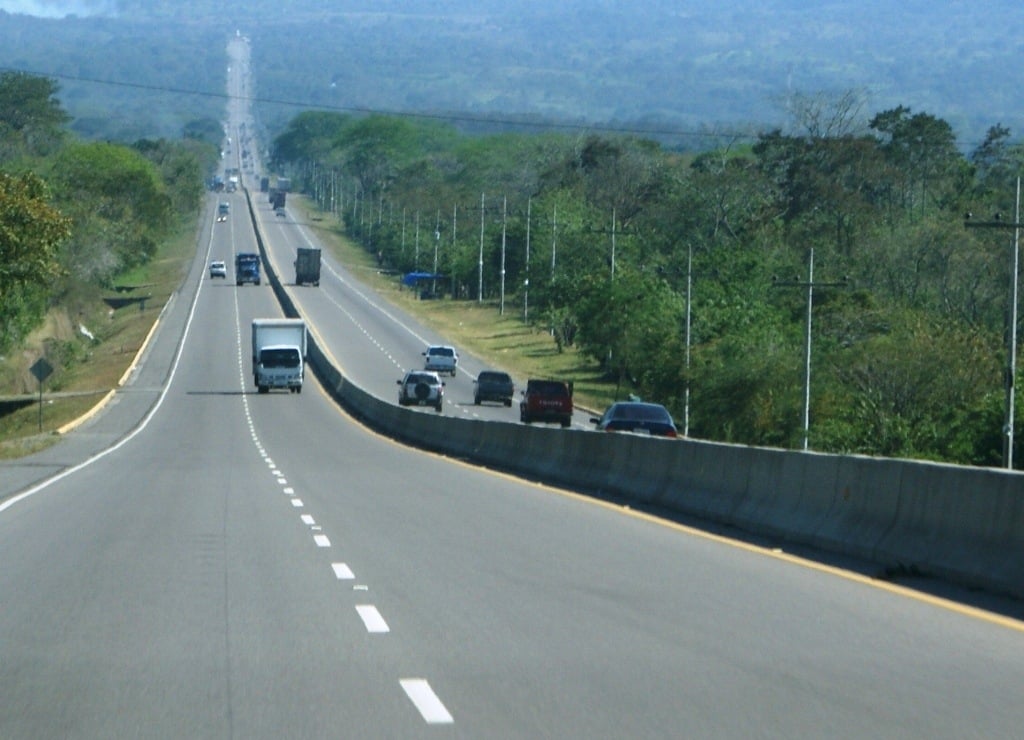
And there are roads that have higher levels of attacks, including carjacking. From Limones to La Union , from Gualaco to San Esteban, and from La Esperanza to Gracias… These routes can be dangerous. All of these are in Santa Barbara Department , which also sees hijackings around Tela, La Ceiba, and El Progreso as well as Trujillo.
Don’t drive after dark. Please.
Honestly? It’s just better to have a local driver drive you around. Don’t put yourself through that stress.
Is Uber safe in Honduras?
There is NO Uber in Honduras.
For now, there are 15,000 taxis who want your attention. So…
Are taxis safe in Honduras?
Taxis are all over the place in Honduras. And they’re… generally safe.
Radio taxis are always a better option than hailing one off the street. Get your accommodation to either recommend a good company or just book one for you.
If you do get one in the street, ensure that you tell the taxi driver that you don’t want to share the taxi. This is when things can get sketchy. Just in case, that’s “No quiero compartir el taxi.”
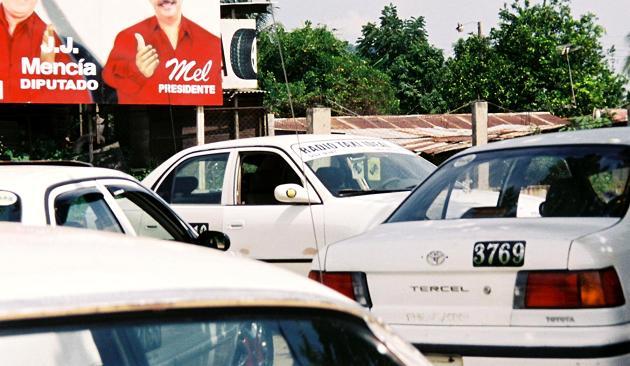
You will have to agree on a price before you get in. And taxi drivers probably won’t have enough change to cover a big bill, so carry small denominations.
At nighttime, you should really get a taxi. There are taxi ranks in a lot of locations.
Is public transportation in Honduras safe?
Well… Public transportation can be a little tricky in Honduras, and it’s not always safe.
The public buses consist of the good old chicken bus. They’re old U.S. school buses that are poorly maintained, and overcrowded. Certain routes that these take have been the target of armed attacks.
But travelers DO take these buses. They’re fairly easy to use, but be aware of the risks.
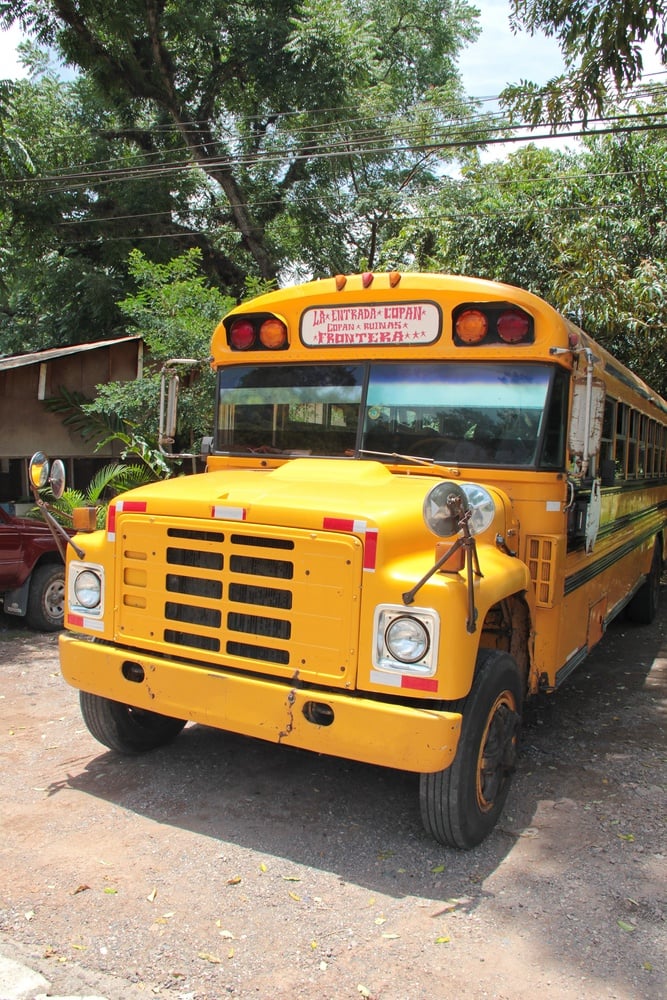
City buses travel around the cities and towns themselves. They are “taxed” by gangs. Sometimes the drivers are assaulted.
There are private coach services that connect cities and towns that are usually more maintained and more comfortable than the chicken buses.
These are pretty safe. They’re run by private companies, obviously, and are more expensive than public buses. You basically pay for safety, but better safe than sorry we’d say.
There are also passenger ferries if you want to go to the Bay Islands. You can catch a ferry from the mainland at La Ceiba to either Utila or Roatan. A ferry also runs between Trujillo and Guanaja.
Is the food in Honduras safe?
The food in Honduras is super tasty. On the Caribbean coast, there are plenty of delicious dishes to sample, with tortillas and things like refried beans served up with every meal. One example: tajadas (fried plantains, topped with cabbage and served with ground beef).
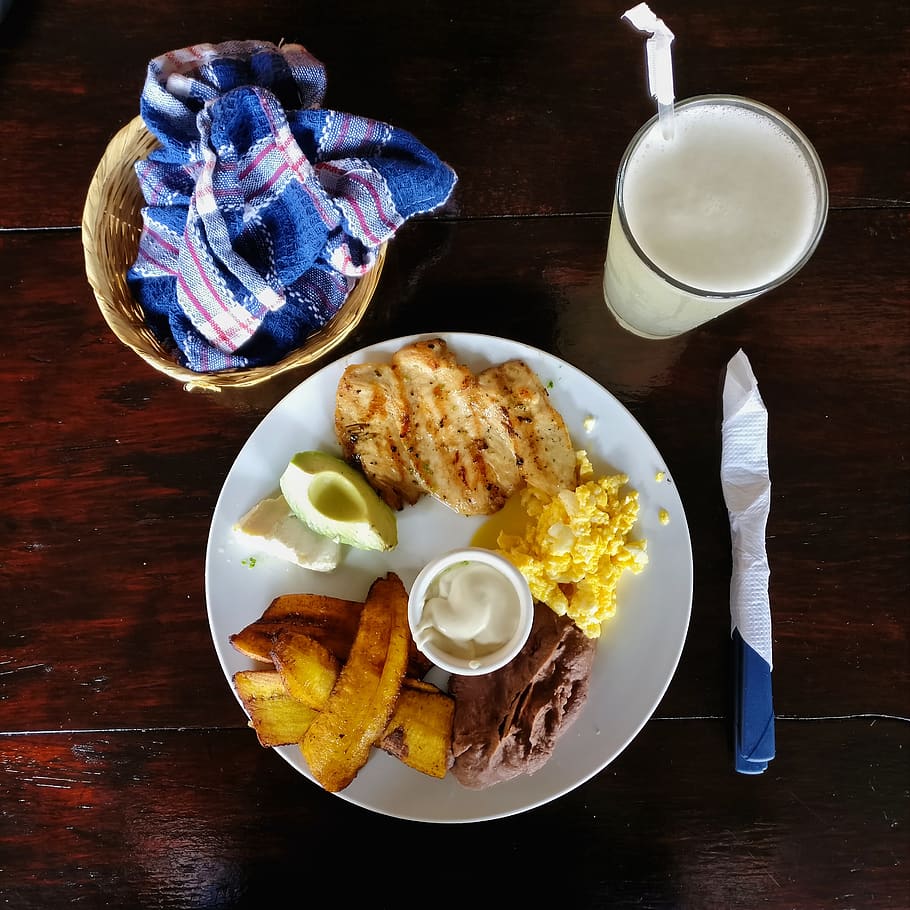
It’s a mix of European , indigenous and Caribbean influence, and you’ll love it. Here’s how to not get ill whilst trying local delights.
- Using some Spanish will get you pretty far. Just order something at any restaurant using the words plato típico – this just means refried beans, rice, a bit of cheese, plantains and some tortillas. Simple and tasty.
- Ask locals where’s good to eat. Where you can go to get some REAL local food. Someone is bound to know somewhere that’s amazing.
- If you’ve got no locals to ask, just use your eyes. Look and see where locals are eating. If a restaurant or eatery of any sort looks busy, that’s probably because it’s good, both in terms of taste and not making you ill.
- Don’t eat at tourist traps. You’ll most likely get watered-down versions of Honduran food and Western stuff. Chances are it wasn’t cooked with too much care.
- There’s a lot of fresh fish in places like Tela and Roatan, and you should definitely try it. Ask what’s been caught that morning. Basically, you’ll want fresh fish. There are things like ceviche, which is raw fish, so you just need to make sure that this really IS fresh and that where you’re eating it can be trusted in terms of hygiene.
- Steer clear of anything that you can’t peel yourself. You don’t know how clean the person’s hands are who’s been peeling and chopping the fruit. So do it yourself. You can get LOADS of fresh fruit at the markets – just make sure you WASH it before you eat it.
- Don’t go TOO in on the food when you first arrive, especially if you get ill from food quite easily. The flavors, spices and portion sizes here might slap you down on the toilet for the first few days of your trip. So… Take it easy! At least at first.
- And last – but definitely not least – is the old classic: WASH YOUR HANDS. It’s simple. You don’t know how grubby your hands are getting before you eat your lunch or dinner so just wash them. Save yourself from yourself.
- Traveling with an allergy? Research ahead of time how to explain your allergy. Keep in mind that store owners and restaurant staff might not know all the foods that contain allergens, so it’s helpful to know the names of some of these too. If you’re gluten-free , pick up a handy Gluten-Free Translation Card with descriptions of Celiac disease, cross-contamination risk, and local Honduran ingredients in Latin American Spanish.
Honduras isn’t different from lots of other great backpacking countries in that you’re never absolutely safe from food-borne illness. Use these tips to reduce the risk, but we also recommend that you pack some medication fit for a bad stomach.
Can you drink the water in Honduras?
It is honestly NOT safe to drink the water in Honduras.
Lots of travelers stick to bottled water, but please don’t. There’s a huge problem with single-use plastics in the Earth’s water and you don’t have any assurance whatsoever that your bottles will be properly disposed of, even if you’re careful to sort them in the proper bin.
We travel with a filter bottle, the GRAYL GEOPRESS or we just boil the water for a few minutes and store in a refillable water bottle . It’s better for the environment and ends up being more economical in the long run.
So no. Don’t drink the water without treating, and steer clear of ice cubes, too.
Is Honduras safe to live?
Honduras has been through a lot in recent years.
Many Hondurans don’t have access to clean water and medical care. Over 60% of the population live below the poverty line.
Gangs play a big part of life here. There are an estimated 115,000 gang members. Everyone from children to adults are recruited.
Not only that, but the corruption in everything the low to the high levels of the politics here is standard. Politicians are manipulated by criminals or other politicians. It’s a massive issue.
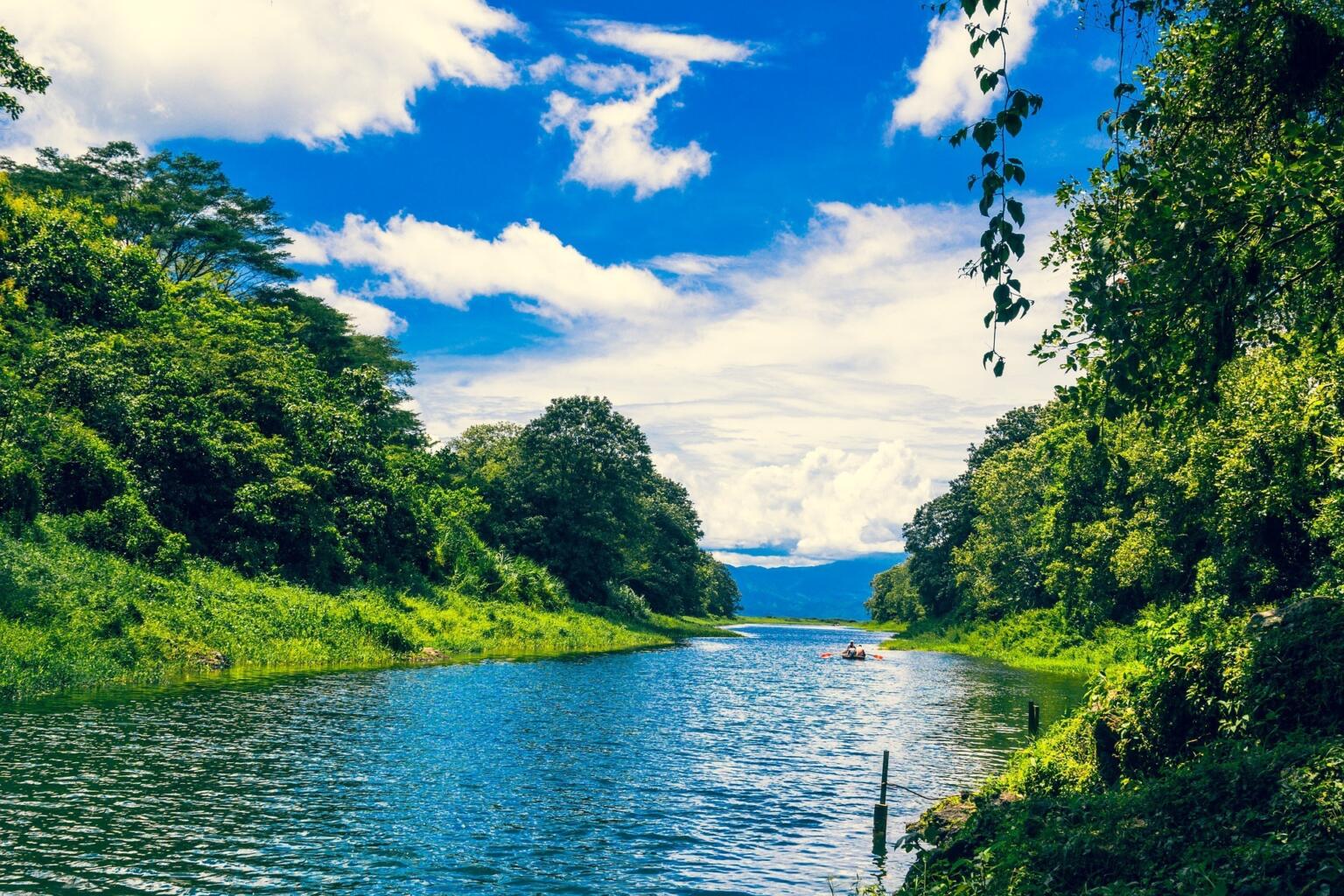
All that in mind, there are places that expats do live in Honduras.
There is an expat community in Trujillo. This coastal city is more welcoming to gringos than other places and features beaches fringed by coral reefs and there’s a lot of new development happening here.
There’s also La Ceiba. This has a pretty good expat community too. It’s also a nice place since the ferry to Utila runs from here, making it easy to escape to the tropical paradise of the Bay Islands whenever you feel like it.
People live here with children, by themselves, as couples, some retire here, and some people have even started up their own hostels or other businesses.
Whilst many people DO live here, it doesn’t mean Honduras is safe to live. Living in Honduras means you’ll have to adjust your life to the way of life here. That means getting used to gangs, violence, and corruption.

A new country, a new contract, a new piece of plastic – booooring. Instead, buy an eSIM!
An eSIM works just like an app: you buy it, you download it, and BOOM! You’re connected the minute you land. It’s that easy.
Is your phone eSIM ready? Read about how e-Sims work or click below to see one of the top eSIM providers on the market and ditch the plastic .
Is it safe to rent an Airbnb in Honduras?
There are quite a few cute Airbnbs in Honduras, and as long as you stay in one of the safer neighborhoods, we’d say that renting an Airbnb is perfectly safe. Make sure to check the reviews from previous travellers to check for any problems during their stay. Don’t open the door for anyone, unless you’re expecting a visit. This rule especially goes at night.
Is Honduras LGBTQ+ friendly?
We wouldn’t recommend members of the LGBTQ+ community to visit Honduras unless they’re prepared to keep any sort of affection behind closed doors. Honduras isn’t a gay-friendly country, however, there are some movements that are going in the right direction. Activist groups, like the Grupo Prisma, have formed that educate and inform the general public as well as fight the current rules against homosexual relationships.
Planning a safe trip to Honduras can get quite overwhelming. That’s why we’ve listed and answered the most frequently asked questions on safety in Honduras.
Is Honduras safe for tourists?
Honduras isn’t perfectly safe for tourists, but that doesn’t mean that you can travel there or have a good time. The crime rates are improving and the government is putting a lot of effort into attracting more tourists. That being said, it’s still one of the murder capitals in the world, so if you’re an inexperienced travellers, you won’t be safe.
What is the most dangerous city in Honduras?
San Pedro Sula is the most dangerous city, not just in Honduras, but in the whole world. if you’re visiting Honduras, you will have to avoid this city completely. Gang wars and fights with the police are common in this city.
What makes Honduras so dangerous?
Violent crime is at its peak in Honduras. Poverty, violence, and insecurity are the main reasons for the high crime rate. Then there are quite a lot of gang wars as well. Locals have to pay “war taxes” which keeps the poverty rate high as well. Shootings are very common in poorer areas too.
What to avoid in Honduras?
These are the things to avoid in Honduras: – Avoid looking wealthy or like a tourist – Avoid the beaches after dark – Don’t use ATMs at night – Stay away from drugs
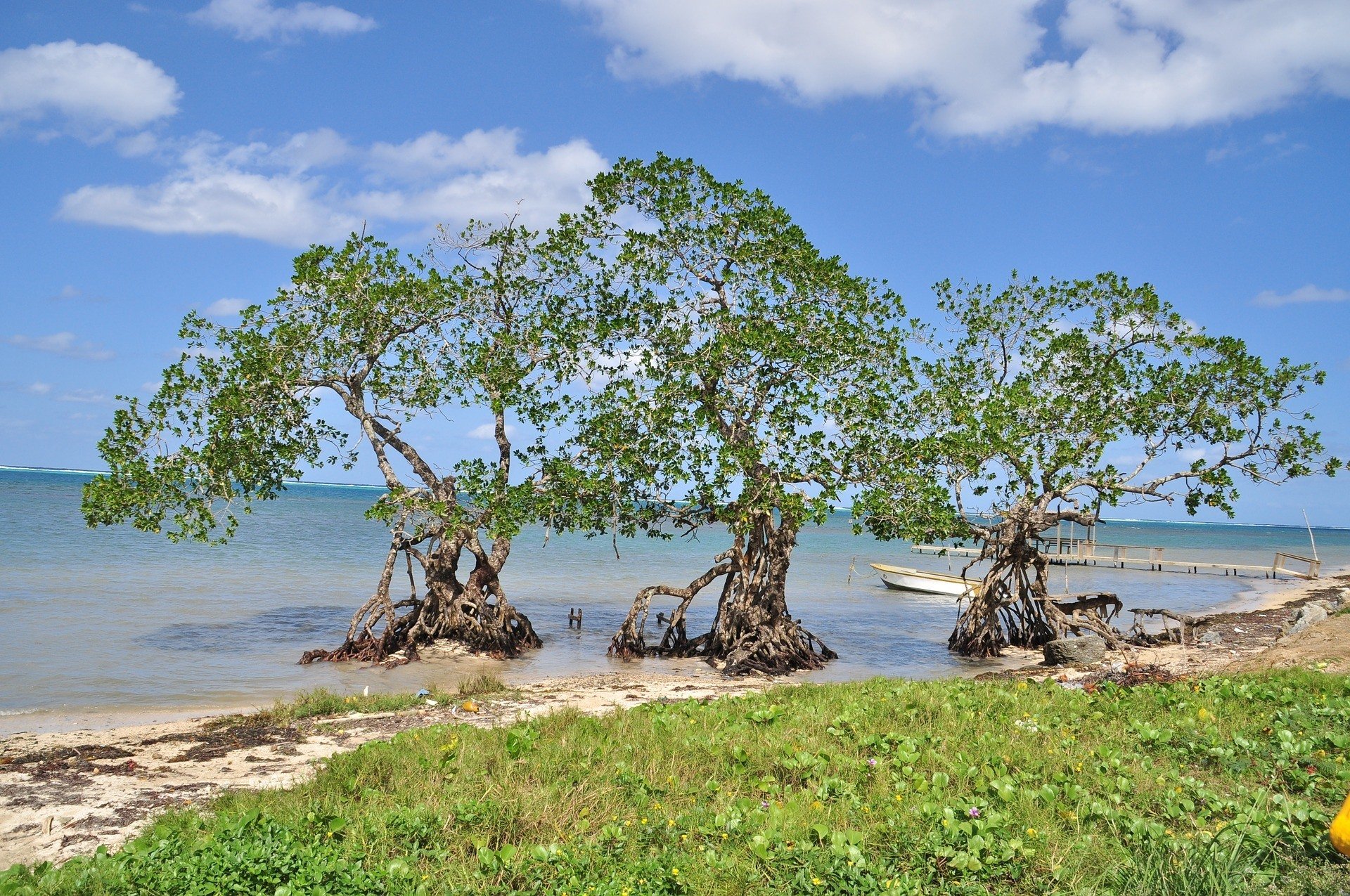
It may not exactly be classed as safe, but Honduras shouldn’t be ignored. People here live in pretty supreme poverty – 60% of the population living in poverty really is a lot of people.
It pays to travel smart in Honduras – like ANYWHERE in the world. And when it comes to the extreme violence of Honduras, those very high figures come from gang violence. Gangs attacking other gangs. Or gangs attacking Honduran citizens for not paying “war tax”. The likelihood of you getting caught up in all that relies very much on you being somehow related to one of the gangs.
But you won’t be (in a Honduran gang, that is). There’s no reason to get mixed up with a gang in Honduras. Simple as that. Keeping yourself away from any situation to do with them will be a good way to keep yourself pretty much safe. So when it comes to safety in Honduras, we think you’ll generally be fine, especially in the Bay Islands. Honduran people are friendly and welcoming.
Disclaimer: Safety conditions change all over the world on a daily basis. We do our best to advise but this info may already be out of date. Do your own research. Enjoy your travels!

And for transparency’s sake, please know that some of the links in our content are affiliate links . That means that if you book your accommodation, buy your gear, or sort your insurance through our link, we earn a small commission (at no extra cost to you). That said, we only link to the gear we trust and never recommend services we don’t believe are up to scratch. Again, thank you!
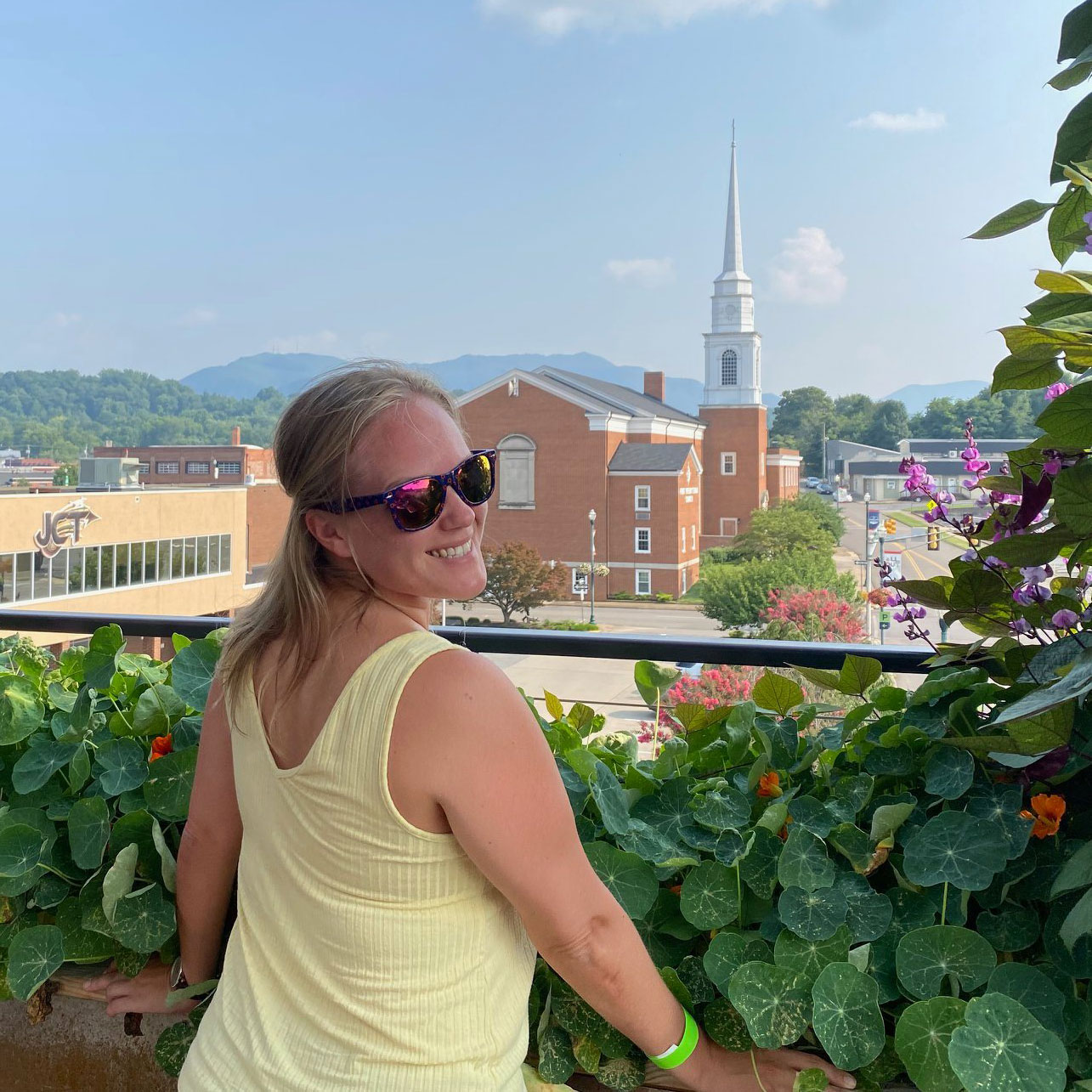
Share or save this post

18 Comments
Honduras has become safer over the past year with much of the riffraff joining the caravans to the US. It’s true! But in all fairness, all the cautions outlined here are to be heeded. Having been a resident here for over 2 years now, I’ve deduced that Honduras overall is not hugely different, safety wise, than living near to, or in a large US city. Hondurans are extremely opportunistic, meaning they will leverage ANY opportunity for gain, be it to get ahead in a line or to charging you more than something is worth, to forgetting they borrowed something from you, and it’s that way for everybody. This is dangerously obvious when driving. I think many people mistake the gas pedal for the brake pedal. It seems it’s worth risking your life to get ahead of just one car. And don’t get me started on motorcycles! Although this is a third world country, EVERBODY is in a hurry! The lack of education manifests itself in everything here. Common courtesy is nigh non-existent. Part of the danger here is that people don’t think, or they are indecisive in their actions. They will walk out in front of a car without looking, or pull out into traffic and stop trying to decide when to proceed. They are often seemingly unaware that anyone else is around them. LOL The examples are endless. If you are an impatient person, you will find your time here challenging. Having said these things, I like it here. I prefer living here to living in the US. The US is getting crazy. I live in the mountains in the central part of the country. It’s beautiful, the air is fresh and the people are more laid back. Here, as many have revealed, life here is simpler and people are, in general, happier. As in all things, I am generalizing about the people. There are astute, accomplished and impressive people here just like any other place in the world. Some of them are my friends. I’m still working on my patience. I’m making slow painful progress. 🙂 Did I mention I retired here?
Australian working in rural Honduras….
I’ve been here for 8 months and the place is so safe that my 78 year old mother came out (by herself!) to stay with me and help out whilst my two kids (8 & 9) went to school here. We drove all over the countryside including 5 hours to Copan Ruinas and never had a problem, particularly with police. In fact the police would see I wasn’t a local and had my kids in the car and would always wave me through. Honduras is a refreshing dose of reality after the insanity of the covid madness in the western world.
I just returned from a medical mission in La Ceiba. I felt safe, but we either walked to and from the hospital together, or rode in our bus. We went nowhere alone. The people of Honduras are wonderful. The food is wonderful. We also took the ferry from Roatan to La Ceiba and I would recommend it. But, the cab to the hotel was expensive. And, do get the price before you get in the cab. Roatan was very safe. Make sure all your travel papers are in order, and just be careful. We did not go out alone. I would go back again.
Wow nicely written, and yeah it does paint a fairly picture. And though the stats don’t lie. They also don’t show how the vast majority of that crime is not perpetuated on tourists. For tourists the crime is mainly having your stuff stolen. I lived in Ceiba nearly a year and loved it but I was a very cautious careful traveler. Enjoy
The facts also disagree with El Pirata’s personal anecdotal experiences. Honduras is not just one of the murder capitals of the world, it is THE murder capital of the world. There is no place on Earth more dangerous, where the murder rate per capita is higher, than Honduras. This means inclusive of all school shootings, more people die at the hands of others per capita (per 100,000 people, as a percentage rate), than in Honduras.
That’s not to say some people (like El Pirata) might get along quite well and never witness or be subject to any violence. But statistically speaking, if you want to get murdered by someone else, Honduras is one of the best places you can go.
Is it an issue to cross from Guatamala and travel in honduras all the way to nicaragua driving a motorcycle?
Its not something any of us at TBB have any experience of but I have a buddy who went all the way from Chile upwards on his. His take on it is that border crossings across Latin America can be easy, or they can be a nightmare. You need to have all imaginable relevant paperwork for you and the bike, and also be ready to offer a quick token of appreciation if you sense a border agent is being needlessly difficult.
I am writing a novel and one of the characters emigrates to the US from Honduras. I am American and have never been to Honduras. The farthest south I have been is Costa Rica. Question: is the war taxing by the gangs as bad as it sounds in the media? is war taxing a reason to leave Honduras if you are from there? How does a resident of Honduras avoid the gangs?
I have lived in Honduras as well, and I also have to say that it is not as dangerous as it is portrayed here. True, there are difficult places (the main cities), like anywhere else, especially if we are talking of a major city; but first of all, you have to use common sense, and second, not all places in Honduras are the same. And if you earn their trust, people in Honduras will take care of you too, just be a little sympathetic to them.
I have lived in Honduras for 30 years and still do .Just use your head if somebody is going to rob you just calculate what your life is worth and then give the thief your money.
If your mother tells you something don”t believe it.The rest of the people Don”t tell the truth
Agreed George. A bit of cash or an iPhone is not worth dying for – ever.
What suggestions can you offer for those who particularly want to do photography & videography in Honduras (the ruins at Copan, and other scenic areas)? If you don’t dare be seen with a good camera, how can you manage to accomplish that?
Hi Walden – yeah what we meant is that you should not have your expensive camera out at all times – one needs to be mindful when pulling it out – but at places like Copan and the Bay Islands – you’ll be fine. If you are in a group I’d say walking around nice parts of San Pedro Sula also would be fine.
Ahh, Honduras, such beauty and such beautiful people. But like the author writes, there is also a dark side. Be cautious. I’ve been to Honduras a number of times, and agree with the author on all points. One thing not mentioned was panhandlers: you will stand out as a gringo, so be prepared for them. Just keep walking. If you want to take the chance, pretend to be Danish or something, as the accoster will probably not know any Danish. Of all the travel articles I’ve ever read about Honduras, this one is the most accurate.
This is a very good article on Honduras travel. I have lived or visited here on and off for nearly 20 years. I did start a small eco resort business in the Rio Cangrejal valley near La Ceiba and have lived with the ups and downs that have affected Honduras over the years. Following these common sense suggestions has resulted in a very enjoyable, quiet life both here and everywhere else I have lived! In the 12 years I have been open I have yet to have a security problem reported by any of my guests. This is in common with tourists in general who visit this country. Common sense prevails please.
I moved to Honduras in 1978, then moved to Mexico and other countries in the Middle East and Far East. I returned to Honduras in 1994 and have lived here ever since. I train police and community security committees. I also have worked in every ‘departamento’ state in Honduras except for Olancho, la Mosquitia, and the Islands. ‘El Pirata’ is very mistaken when he states that Honduras is safer than any major American city. According to official government figures last year the murder rate here was 68/100000. The UN figures for approximately the same time were 85/100000. San Pedro figures were 173/100000 and Tegucigalpa’s were 105/100000. Detroit in the USA is one of the most dangerous cities there. It has a murder rate of 27/100000. Again, ‘el Pirata’ is totally wrong when he says that Honduras is safer than any major American city.
I am an Italian-American having lived in Honduras over 12 years. Safer than ANY major U.S. city by far. NO school shootings here, friendliest people I have EVER encountered. There’s good and bad here as is ANYWHERE on the planet. Safer here Than ANY major city in the U.S.A.; guaranteed!
I am honduran, and wow I hate the way it is portrayed in the media, I have lived here my whole life, and completely love it here, there is no place I rather live in. Yes, there are problems here but there are everywhere in the world. I truly love Honduras, the people, the food, the culture, everything. If you want to go the beach I 100% recommend Roatan, the most beautiful and natural beach I have been in.
Leave a Reply Cancel reply
Your email address will not be published. Required fields are marked *
Save my name, email, and website in this browser for the next time I comment.
Notify me of followup comments via e-mail.
- Skip to main content
- Skip to "About this site"
Language selection
Search travel.gc.ca.
Help us to improve our website. Take our survey !
COVID-19: travel health notice for all travellers
Honduras travel advice
Latest updates: The Health section was updated - travel health information (Public Health Agency of Canada)
Last updated: April 15, 2024 13:01 ET
On this page
Safety and security, entry and exit requirements, laws and culture, natural disasters and climate, honduras - exercise a high degree of caution.
Exercise a high degree of caution in Honduras due to crime.
Regional advisory - Avoid non-essential travel
- within 20 km of the border with Guatemala, excluding Copán Ruinas, the El Florido border crossing and the CA-11 Highway leading there
- within 20 km of the border with El Salvador, excluding the El Amatillo border crossing and the CA-1 Highway leading there, and El Poy border crossing and the CA-4 Highway leading there
- Choluteca: the city of Choluteca
- Colón, excluding the city of Trujillo
- Chamalecón
- Cofradía
- Rivera Hernandez
- the city of Choloma
- the neighbourhood of El Planeta in the city of La Lima
- El Paraíso: the city of Danlí
- Francisco Morazán: the city of Comayagüela, excluding the Toncontin airport and the major roads leading there
- Gracias a Dios
Back to top
Borders areas
Border areas often see higher criminal activity and violence.
If you’re travelling by land to neighbouring countries:
- use official border crossings only
- consider crossing borders in the morning as they sometimes close unexpectedly early
- avoid anyone suggesting that they can obtain your documents quicker or cheaper on your behalf
- keep the receipt of payment of the border fee until you leave the country
Criminal groups are especially active on the coast between the Guatemalan border and Puerto Cortés. Criminal activities include:
- drug trafficking
- human trafficking
There has also been an increased number of migrants leaving Honduras through Guatemala, particularly at the border crossing in Agua Caliente. This movement results in periodic closures.
The El Florido border crossing in the town of Copán is also closed daily from 9 pm to 6 am.
There has also been an increased number of migrants leaving Nicaragua through Honduras, particularly at the border crossings in Las Manos and Trojes.
Expect possible delays at borders.
Department of Cortés
Street gangs and criminal groups are very active in the Cortés municipalities of:
- San Pedro Sula
The number of murder and violent crime is higher in these areas.
Departments of Colón, Gracias a Dios, Olancho and Yoro
Drugs smuggling and violence pose security threats in the northern departments of:
- Colón
Roadblocks and violent incidents related to land disputes in Colón, mostly in the Aguán valley and in the north coast area near Trujillo, have occurred.
The department of Gracias a Dios is a remote area where law enforcement and access to government services are very limited. Levels of criminal activity are high.
Violent crime is high in the coastal city of La Ceiba. This includes murders and armed robberies.
Although tourists are not the primary target of criminals, you could be in the wrong place at the wrong time.
If you consider travelling to La Ceiba:
- use reputable tour operators only
- choose accommodation with good security measures
- avoid outings outside the resort
Bay Islands
The Bay Islands are generally safe. Violent crime is lower, but petty crime sometimes occurs.
Some foreigners have been assaulted on beaches, mainly at night. Home burglaries have also occurred, sometimes in rental accommodations.
While in the Bay Islands:
- avoid Coxen hole, Los Fuertes and Suampo neighbourhoods after dark
- avoid isolated beaches and areas
- stay in well-lit areas
- make sure you lock windows and doors at night and when you are away
If you’re docking in Roatán and getting off the cruise ship, you should consider booking a tour or a sightseeing trip through a reputable company to avoid becoming the victim of a scam.
Violent crime
Although the overall situation has slightly improved since 2022, violent crime remains a concern throughout Honduras. The country retains one of the highest homicide rates in the world.
Drug trafficking, transnational organized crime and street gang activity is prevalent in certain neighbourhoods. Violent incidents are frequent, including:
- armed robberies
- kidnappings
- home invasions
- sexual assaults
These crimes are carried out by criminals acting individually or as a group.
Many Hondurans are armed. Guns and other weapons, such as machetes and knives, are frequently used. Incidents of armed robbery occur mainly on urban streets during the day and on intercity buses at night.
The Government of Honduras lacks sufficient resources to properly respond to, investigate and prosecute cases. Infiltration within the security forces by local gangs weaken law enforcement even further. Criminals linked to organized crime often operate with a high degree of impunity throughout Honduras.
- Remain aware of your surroundings at all times
- Maintain your cellphone charged
- Avoid travelling after dark
- Avoid walking alone
- Keep a low profile
- Avoid carrying large amounts of cash
- don’t resist if you’re threatened, hand over your cash and valuables immediately
Petty crime
Petty crime, such as pickpocketing and bag snatching, occurs. Thefts commonly occur in:
- popular tourist areas
- bus terminals and airports
- shopping malls and hotel lobbies
- restaurants, including patios
To avoid becoming a victim:
- be suspicious of recent acquaintances or strangers approaching you
- avoid accepting rides or invitations from strangers
- avoid hitchhiking
- ensure that your belongings, including your passport and other travel documents, are secured at all times
- avoid carrying large amounts of cash
- avoid showing signs of affluence
State of emergency
Local authorities periodically declare a state of emergency in various municipalities to fight against gang-related crime and extortion.
While a state of emergency is in effect, security forces have increased rights to conduct searches, seizures and detain persons of interest.
If you are travelling in an area where a state of emergency is in effect:
- be aware that you may be subject to searches by security forces
- always cooperate with military and police officers
- carry valid ID at all times and be prepared for various checkpoints
- allow extra time to reach your destination
- follow the instructions of local authorities
- monitor local news to stay informed on the current situation
Express kidnappings
Express kidnappings can occur in urban areas.
These kidnappings are often committed by organised gangs or taxi drivers. The kidnappers usually take their victims to an ATM and force them to make a cash withdrawal.
- Avoid hailing taxis on the street
- If you’re threatened, don’t resist
Demonstrations and civil unrest
Demonstrations take place regularly. In Tegucigalpa, demonstrations may occur:
- at the National Congress and Central Park
- at the National Autonomous University of Honduras
- at the United States Embassy
- at the Centro Civico
- at the Presidential Palace
- at the Hospital Escuela
- on Suyapa and Centroamerica boulevards
- on La Paz and Los Próceres avenues
- along the Peripheral Ring Road
In San Pedro Sula, protesters usually gather at the Monumento a la Madre.
Even peaceful demonstrations can turn violent at any time. They can lead to disruptions to traffic and public transportation.
- Avoid areas where demonstrations and large gatherings are taking place
- Follow the instructions of local authorities
- Monitor local media for information on ongoing demonstrations
Honduran law prohibits political activities by foreigners. Participating in demonstrations or activities may result in you being detained or deported.
Mass gatherings (large-scale events)
Credit card and ATM fraud occurs.
Be cautious when using debit or credit cards:
- cover the keypad with one hand when entering your PIN
- pay careful attention when your cards are being handled by others
- avoid using card readers with an irregular or unusual feature
- use ATMs located in well-lit public areas or inside a bank or business
- check for any unauthorized transactions on your account statements
Overseas fraud
Spiked food and drinks
Snacks, beverages, gum and cigarettes may contain drugs that could put you at risk of sexual assault and robbery.
- Be wary of accepting these items from new acquaintances
- Never leave food or drinks unattended or in the care of strangers
Women’s safety
Women travelling alone may be subject to some forms of harassment and verbal abuse.
Advice for women travellers
Water activities
Coastal waters can be dangerous. Riptides are common.
Rescue services may not be consistent with international standards. Not all beaches have lifeguards or warning flags to warn of unsafe conditions.
- Only undertake scuba diving and other water activities with a well-established company
- Don’t swim alone alone or outside marked areas
- Consult residents and tour operators for information on possible hazards and safe swimming areas
- Monitor weather warnings
Water safety abroad
Adventure tourism
Outdoor activities, such as hiking, diving, mountain biking and other adventure activities can be dangerous if unprepared. Trails are not always marked, and weather conditions can change rapidly, even in during summer.
If you intend to practice adventure tourism:
- never do so alone, and do not part with your expedition companions
- obtain detailed information on your activity and on the environment in which you will be before setting out
- buy travel insurance that includes helicopter rescue and medical evacuation
- ensure that your physical condition is good enough to meet the challenges of your activity
- avoid venturing off marked trails
- ensure that you’re adequately equipped and bring sufficient water
- stay informed about weather and other conditions that may pose a hazard
- refrain from using facilities or equipment if you have doubts on their safety
- inform a family member or friend of your itinerary
Road travel
Road conditions and road safety are poor throughout the country. Accidents causing fatalities are common. The number of traffic accidents involving tourists has also increased.
Road conditions
Many roads are poorly delineated due to regular flooding. Driving can be dangerous due to:
- roaming livestock and wildlife
- poorly maintained roads and bridges
- unpaved roads
- inadequate lighting
- lack of signage
- lack of guardrails
- winding mountain roads
- overloaded or poorly maintained vehicles
- slow-moving or heavy traffic, especially in San Pedro Sula and Tegucigalpa
If you’re travelling by land, use caution between:
- El Progreso and La Ceiba
- Chamelecón and Copán via Cofradía
- Copán and Gracias Lempira
- Limones to La Unión
Between Tegucigalpa to Trujillo, you should use the RN39 and transit via Gualaco, San Esteban and Bonito Oriental rather than the RN41 via Salamá et Sabá.
Road safety
Drivers don’t respect traffic laws. They often drive at excessive speeds. They may be aggressive and reckless.
If you drive in Honduras:
- always drive defensively
- maintain a heightened awareness along all routes
- plan your trip ahead of time, especially if you plan to visit a rural area
- avoid road travel at night
- keep your car doors locked and the windows closed at all times
- avoid picking up hitchhikers
- carry a cell phone and a charger
- avoid renting cars and motorcycles from operators who don’t provide insurance
- ensure that helmets meet international safety standards
Police officer impersonation
Gang members and criminals sometimes disguise themselves as police officers. At legitimate police checkpoints, you should see:
- a police vehicle
- green cones
- at least five police officers
If you have any doubts, you may contact the Honduran Transit Authority by dialing 911 to confirm the location of the roadblocks and the identity of the individuals stopping you before rolling down your window or opening your door.
Sometimes, thieves also pose as victims of road accidents.
- Don’t stop to help a person at the side of the road
- Report any suspicious incidents at the next police checkpoint
Public transportation
Public transportation in Honduras is unsafe and unreliable.
Most urban public buses are poorly maintained. Drivers are reckless. Accidents are common.
Incidents of armed robbery are frequent on public buses. Incidents of arson have also occurred.
- Avoid intercity public transportation
- Use only companies that offer non-stop service from your place of departure to your destination
Some taxis are an acceptable option for transportation.
When travelling to the airport, you may pre-arrange your pickup with your hotel prior to your departure. Authorized airport taxis drivers wear easily identifiable ID badges.
- Use a reliable taxi company recommended by your hotel
- Don’t use white street taxis
- Never board taxis at taxi stands or flag taxis in the street
- Never use shared taxis
- Make sure the driver doesn’t pick up other passengers along the way to your destination
- Note driver’s name and plate number
- Negotiate the fare in advance
- Make sure you have small bills as taxi drivers often don’t make change
We do not make assessments on the compliance of foreign domestic airlines with international safety standards.
Information about foreign domestic airlines
Every country or territory decides who can enter or exit through its borders. The Government of Canada cannot intervene on your behalf if you do not meet your destination’s entry or exit requirements.
We have obtained the information on this page from the Honduran authorities. It can, however, change at any time.
Verify this information with the Foreign Representatives in Canada .
Entry requirements vary depending on the type of passport you use for travel.
Before you travel, check with your transportation company about passport requirements. Its rules on passport validity may be more stringent than the country’s entry rules.
Regular Canadian passport
Your passport must be valid at least 6 months from the date of entry.
Passport for official travel
Different entry rules may apply.
Official travel
Passport with “X” gender identifier
While the Government of Canada issues passports with an “X” gender identifier, it cannot guarantee your entry or transit through other countries. You might face entry restrictions in countries that do not recognize the “X” gender identifier. Before you leave, check with the closest foreign representative for your destination.
Other travel documents
Different entry rules may apply when travelling with a temporary passport or an emergency travel document. Before you leave, check with the closest foreign representative for your destination.
Useful links
- Foreign Representatives in Canada
- Canadian passports
Tourist visa: not required for stays up to 90 days Business visa: not required for stays up to 90 days Student permit: required
Student permit
If you intend to study in Honduras, you must obtain a student permit which can be obtained from the immigration authorities once you arrive in the country.
National Institute of Migration – Government of Honduras
Customs declaration form
You must complete the Government of Honduras' customs declaration form prior to entering or leaving the country.
After completing the online form, you must present the QR code to the customs authorities, either on paper or electronically.
Customs declaration form – Government of Honduras
Entry stamp
Immigration authorities will stamp your passport upon arrival and write down the number of days you are allowed in the country. The 90-day period is not guaranteed, and the decision is at their discretion.
You may face a fine and possible delays if you fail to present an entry-stamped passport when departing Honduras.
- Make sure your passport has been stamped upon arrival
- Take good note of the maximum length of your approved stay
Central America-4 Border Control Agreement
Under the terms of the Central America-4 Border Control Agreement (CA-4), Canadian tourists may travel freely within any of the following CA-4 countries:
- El Salvador
You can travel between these countries for up to 90 days without having to undergo entry and exit formalities at border immigration checkpoints.
You must still check in at immigration counters when you enter or exit these checkpoints.
The 90-day period begins at the first point of entry to any of the CA-4 countries. You will be fined if you exceed the 90-day limit.
Entering by land
If you plan to enter by land, you need to pay 3 USD or the equivalent in lempiras.
Stay extension
You can apply for extensions of up to 30 days at a time, at the discretion of the immigration authorities. You must request this extension and pay the required fee at the Honduran immigration office before your first 90-day limit expires.
Other entry requirements
Customs officials may ask you to show them:
- a return or onward ticket
- proof that you have sufficient funds for the duration of your stay
Children and travel
The age of majority in Honduras is 21. The country has strict requirements for the entry and exit of minors.
A minor must show a written and notarized authorization to travel:
- signed by both parents if travelling alone
- signed by the non-travelling parent if travelling with one parent only
The written authorization must be in Spanish and authenticated by the Honduran authorities prior to arrival.
This is also enforced if the minor has a residential or citizenship tie to Honduras inherited from one of the parents, even if the tie has not been legally registered.
- Travelling with children
Yellow fever
Learn about potential entry requirements related to yellow fever (vaccines section).
Relevant Travel Health Notices
- Global Measles Notice - 13 March, 2024
- Zika virus: Advice for travellers - 31 August, 2023
- COVID-19 and International Travel - 13 March, 2024
- Dengue: Advice for travellers - 8 April, 2024
This section contains information on possible health risks and restrictions regularly found or ongoing in the destination. Follow this advice to lower your risk of becoming ill while travelling. Not all risks are listed below.
Consult a health care professional or visit a travel health clinic preferably 6 weeks before you travel to get personalized health advice and recommendations.
Routine vaccines
Be sure that your routine vaccinations , as per your province or territory , are up-to-date before travelling, regardless of your destination.
Some of these vaccinations include measles-mumps-rubella (MMR), diphtheria, tetanus, pertussis, polio, varicella (chickenpox), influenza and others.
Pre-travel vaccines and medications
You may be at risk for preventable diseases while travelling in this destination. Talk to a travel health professional about which medications or vaccines may be right for you, based on your destination and itinerary.
There is a risk of hepatitis A in this destination. It is a disease of the liver. People can get hepatitis A if they ingest contaminated food or water, eat foods prepared by an infectious person, or if they have close physical contact (such as oral-anal sex) with an infectious person, although casual contact among people does not spread the virus.
Practise safe food and water precautions and wash your hands often. Vaccination is recommended for all travellers to areas where hepatitis A is present.
Measles is a highly contagious viral disease. It can spread quickly from person to person by direct contact and through droplets in the air.
Anyone who is not protected against measles is at risk of being infected with it when travelling internationally.
Regardless of where you are going, talk to a health care professional before travelling to make sure you are fully protected against measles.
Hepatitis B is a risk in every destination. It is a viral liver disease that is easily transmitted from one person to another through exposure to blood and body fluids containing the hepatitis B virus. Travellers who may be exposed to blood or other bodily fluids (e.g., through sexual contact, medical treatment, sharing needles, tattooing, acupuncture or occupational exposure) are at higher risk of getting hepatitis B.
Hepatitis B vaccination is recommended for all travellers. Prevent hepatitis B infection by practicing safe sex, only using new and sterile drug equipment, and only getting tattoos and piercings in settings that follow public health regulations and standards.
The best way to protect yourself from seasonal influenza (flu) is to get vaccinated every year. Get the flu shot at least 2 weeks before travelling.
The flu occurs worldwide.
- In the Northern Hemisphere, the flu season usually runs from November to April.
- In the Southern Hemisphere, the flu season usually runs between April and October.
- In the tropics, there is flu activity year round.
The flu vaccine available in one hemisphere may only offer partial protection against the flu in the other hemisphere.
The flu virus spreads from person to person when they cough or sneeze or by touching objects and surfaces that have been contaminated with the virus. Clean your hands often and wear a mask if you have a fever or respiratory symptoms.
Coronavirus disease (COVID-19) is an infectious viral disease. It can spread from person to person by direct contact and through droplets in the air.
It is recommended that all eligible travellers complete a COVID-19 vaccine series along with any additional recommended doses in Canada before travelling. Evidence shows that vaccines are very effective at preventing severe illness, hospitalization and death from COVID-19. While vaccination provides better protection against serious illness, you may still be at risk of infection from the virus that causes COVID-19. Anyone who has not completed a vaccine series is at increased risk of being infected with the virus that causes COVID-19 and is at greater risk for severe disease when travelling internationally.
Before travelling, verify your destination’s COVID-19 vaccination entry/exit requirements. Regardless of where you are going, talk to a health care professional before travelling to make sure you are adequately protected against COVID-19.
Malaria is a serious and sometimes fatal disease that is caused by parasites spread through the bites of mosquitoes. There is a risk of malaria in certain areas and/or during a certain time of year in this destination.
Antimalarial medication may be recommended depending on your itinerary and the time of year you are travelling. Consult a health care professional or visit a travel health clinic before travelling to discuss your options. It is recommended to do this 6 weeks before travel, however, it is still a good idea any time before leaving. Protect yourself from mosquito bites at all times: • Cover your skin and use an approved insect repellent on uncovered skin. • Exclude mosquitoes from your living area with screening and/or closed, well-sealed doors and windows. • Use insecticide-treated bed nets if mosquitoes cannot be excluded from your living area. • Wear permethrin-treated clothing. If you develop symptoms similar to malaria when you are travelling or up to a year after you return home, see a health care professional immediately. Tell them where you have been travelling or living.
Yellow fever is a disease caused by a flavivirus from the bite of an infected mosquito.
Travellers get vaccinated either because it is required to enter a country or because it is recommended for their protection.
- There is no risk of yellow fever in this country.
Country Entry Requirement*
- Proof of vaccination is required if you are coming from or have transited through an airport of a country where yellow fever occurs.
Recommendation
- Vaccination is not recommended.
- Discuss travel plans, activities, and destinations with a health care professional.
- Contact a designated Yellow Fever Vaccination Centre well in advance of your trip to arrange for vaccination.
About Yellow Fever
Yellow Fever Vaccination Centres in Canada * It is important to note that country entry requirements may not reflect your risk of yellow fever at your destination. It is recommended that you contact the nearest diplomatic or consular office of the destination(s) you will be visiting to verify any additional entry requirements.
In this destination, rabies is commonly carried by dogs and some wildlife, including bats. Rabies is a deadly disease that spreads to humans primarily through bites or scratches from an infected animal. While travelling, take precautions , including keeping your distance from animals (including free-roaming dogs), and closely supervising children.
If you are bitten or scratched by a dog or other animal while travelling, immediately wash the wound with soap and clean water and see a health care professional. In this destination, rabies treatment may be limited or may not be available, therefore you may need to return to Canada for treatment.
Before travel, discuss rabies vaccination with a health care professional. It may be recommended for travellers who are at high risk of exposure (e.g., occupational risk such as veterinarians and wildlife workers, children, adventure travellers and spelunkers, and others in close contact with animals).
Safe food and water precautions
Many illnesses can be caused by eating food or drinking beverages contaminated by bacteria, parasites, toxins, or viruses, or by swimming or bathing in contaminated water.
- Learn more about food and water precautions to take to avoid getting sick by visiting our eat and drink safely abroad page. Remember: Boil it, cook it, peel it, or leave it!
- Avoid getting water into your eyes, mouth or nose when swimming or participating in activities in freshwater (streams, canals, lakes), particularly after flooding or heavy rain. Water may look clean but could still be polluted or contaminated.
- Avoid inhaling or swallowing water while bathing, showering, or swimming in pools or hot tubs.
Travellers' diarrhea is the most common illness affecting travellers. It is spread from eating or drinking contaminated food or water.
Risk of developing travellers' diarrhea increases when travelling in regions with poor standards of hygiene and sanitation. Practise safe food and water precautions.
The most important treatment for travellers' diarrhea is rehydration (drinking lots of fluids). Carry oral rehydration salts when travelling.
Typhoid is a bacterial infection spread by contaminated food or water. Risk is higher among children, travellers going to rural areas, travellers visiting friends and relatives or those travelling for a long period of time.
Travellers visiting regions with a risk of typhoid, especially those exposed to places with poor sanitation, should speak to a health care professional about vaccination.
Insect bite prevention
Many diseases are spread by the bites of infected insects such as mosquitoes, ticks, fleas or flies. When travelling to areas where infected insects may be present:
- Use insect repellent (bug spray) on exposed skin
- Cover up with light-coloured, loose clothes made of tightly woven materials such as nylon or polyester
- Minimize exposure to insects
- Use mosquito netting when sleeping outdoors or in buildings that are not fully enclosed
To learn more about how you can reduce your risk of infection and disease caused by bites, both at home and abroad, visit our insect bite prevention page.
Find out what types of insects are present where you’re travelling, when they’re most active, and the symptoms of the diseases they spread.
There is a risk of chikungunya in this country. The risk may vary between regions of a country. Chikungunya is a virus spread through the bite of an infected mosquito. Chikungunya can cause a viral disease that typically causes fever and pain in the joints. In some cases, the joint pain can be severe and last for months or years.
Protect yourself from mosquito bites at all times. There is no vaccine available for chikungunya.
- In this country, dengue is a risk to travellers. It is a viral disease spread to humans by mosquito bites.
- Dengue can cause flu-like symptoms. In some cases, it can lead to severe dengue, which can be fatal.
- The level of risk of dengue changes seasonally, and varies from year to year. The level of risk also varies between regions in a country and can depend on the elevation in the region.
- Mosquitoes carrying dengue typically bite during the daytime, particularly around sunrise and sunset.
- Protect yourself from mosquito bites . There is no vaccine or medication that protects against dengue.
Zika virus is a risk in this country.
Zika virus is primarily spread through the bite of an infected mosquito. It can also be sexually transmitted. Zika virus can cause serious birth defects.
During your trip:
- Prevent mosquito bites at all times.
- Use condoms correctly or avoid sexual contact, particularly if you are pregnant.
If you are pregnant or planning a pregnancy, you should discuss the potential risks of travelling to this destination with your health care provider. You may choose to avoid or postpone travel.
For more information, see Zika virus: Pregnant or planning a pregnancy.
American trypanosomiasis (Chagas disease) is a risk in this country. It is caused by a parasite spread by infected triatomine bugs. The infection can be inactive for decades, but humans can eventually develop complications causing disability and even death.
Risk is generally low for most travellers. Protect yourself from triatomine bugs, which are active at night, by using mosquito nets if staying in poorly-constructed housing. There is no vaccine available for Chagas disease.
Animal precautions
Some infections, such as rabies and influenza, can be shared between humans and animals. Certain types of activities may increase your chance of contact with animals, such as travelling in rural or forested areas, camping, hiking, and visiting wet markets (places where live animals are slaughtered and sold) or caves.
Travellers are cautioned to avoid contact with animals, including dogs, livestock (pigs, cows), monkeys, snakes, rodents, birds, and bats, and to avoid eating undercooked wild game.
Closely supervise children, as they are more likely to come in contact with animals.
Person-to-person infections
Stay home if you’re sick and practise proper cough and sneeze etiquette , which includes coughing or sneezing into a tissue or the bend of your arm, not your hand. Reduce your risk of colds, the flu and other illnesses by:
- washing your hands often
- avoiding or limiting the amount of time spent in closed spaces, crowded places, or at large-scale events (concerts, sporting events, rallies)
- avoiding close physical contact with people who may be showing symptoms of illness
Sexually transmitted infections (STIs) , HIV , and mpox are spread through blood and bodily fluids; use condoms, practise safe sex, and limit your number of sexual partners. Check with your local public health authority pre-travel to determine your eligibility for mpox vaccine.
Tuberculosis is an infection caused by bacteria and usually affects the lungs.
For most travellers the risk of tuberculosis is low.
Travellers who may be at high risk while travelling in regions with risk of tuberculosis should discuss pre- and post-travel options with a health care professional.
High-risk travellers include those visiting or working in prisons, refugee camps, homeless shelters, or hospitals, or travellers visiting friends and relatives.
HIV (Human Immunodeficiency Virus) is a virus that attacks and impairs the immune system, resulting in a chronic, progressive illness known as AIDS (Acquired Immunodeficiency Syndrome).
High risk activities include anything which puts you in contact with blood or body fluids, such as unprotected sex and exposure to unsterilized needles for medications or other substances (for example, steroids and drugs), tattooing, body-piercing or acupuncture.
Medical services and facilities
Good health care is limited in availability. The quality of care varies greatly throughout the country.
Public medical services and facilities remain below Canadian standards. Medical facilities are understaffed and underfunded. They lack medical supplies and adequately trained professionals.
You should use private health care where possible. There are some private clinics and hospitals in San Pedro Sula and Tegucigalpa as well as in tourist areas such as the Bay Islands. However, they are often limited and services are expensive.
Doctors typically require upfront payment in cash. They may only speak Spanish.
Emergency services may not be able to access areas outside of major cities. Emergency medical facilities are also very limited on the Bay Islands. Major medical procedures and surgeries may require medical evacuation to a major centre.
Make sure you get travel insurance that includes coverage for medical evacuation and hospital stays.
Travel health and safety
Some prescription medication may not be available in Honduras.
If you take prescription medication, you’re responsible for determining their legality in the country.
- Bring sufficient quantities of your medication with you
- Always keep your medication in the original container
- Pack your medication in your carry-on luggage
- Carry a copy of your prescriptions
Keep in Mind...
The decision to travel is the sole responsibility of the traveller. The traveller is also responsible for his or her own personal safety.
Be prepared. Do not expect medical services to be the same as in Canada. Pack a travel health kit , especially if you will be travelling away from major city centres.
You must abide by local laws.
Learn about what you should do and how we can help if you are arrested or detained abroad .
Transfer to a Canadian prison
Canada and Honduras are signatories to the Convention on the Transfer of Sentenced Persons. This enables a Canadian imprisoned in Honduras to request a transfer to a Canadian prison to complete a sentence. The transfer requires the agreement of both Canadian and Honduran authorities.
This process can take a long time, and there is no guarantee that the transfer will be approved by either or both sides.
Penalties for possession, use or trafficking of illegal drugs are severe. Convicted offenders can expect lengthy jail sentences or heavy fines.
Honduras is used as a drug trafficking hub between South and North America.
- Pack your own luggage and monitor it closely at all times
- Don’t transport other people’s packages, bags or suitcases
- Never exchange money for strangers, as this is a common request from money launderers
Drugs, alcohol and travel
Honduran law prohibits the export of:
- antiques and artifacts from pre-colonial civilizations
- some birds, feathers, flora and fauna
Investments
Disputes related to property acquisition or other investments are costly and take time to resolve.
Many tourists have reported complications during real estate transactions in Honduras.
If you plan on buying property, or making other investments in Honduras:
- seek legal advice in Canada and in Honduras before making commitments
- choose your own Honduran lawyer specializing in real estate
- avoid hiring a lawyer recommended by a seller
- visit the property in person before purchasing
- carefully review the sales contract as it may contain irregularities
- confirm the name of the last owner and verify that the property is free of any mortgage or taxes from the local property registry (Instituto de la propiedad)
- confirm that there are no heritage or land ownership disputes
Political activities
It’s illegal for foreigners to participate in local political activities, rallies or public demonstrations in Honduras.
Political involvement may result in your deportation or expulsion.
Dual citizenship
Dual citizenship is legally recognized in Honduras.
If you are a Canadian citizen, but also a citizen of Honduras, our ability to offer you consular services may be limited while you're there. You may also be subject to different entry/exit requirements .
Travellers with dual citizenship
2SLGBTQI+ travellers
Honduran law does not prohibit sexual acts between individuals of the same sex. However, same-sex couples are not legally recognized.
LGBTQ2 travellers could be discriminated against based on their sexual orientation, gender identity, gender expression, or sex characteristics.
Avoid public displays of affection.
Travel and your sexual orientation, gender identity, gender expression and sex characteristics
International Child Abduction
The Hague Convention on the Civil Aspects of International Child Abduction is an international treaty. It can help parents with the return of children who have been removed to or retained in certain countries in violation of custody rights. The convention applies between Canada and Honduras.
If your child was wrongfully taken to, or is being held in Honduras, and if the applicable conditions are met, you may apply for the return of your child to the Honduran court.
If you are in this situation:
- act as quickly as you can
- contact the Central Authority for your province or territory of residence for information on starting an application under The Hague Convention
- consult a lawyer in Canada and in Honduras to explore all the legal options for the return of your child
- report the situation to the nearest Canadian government office abroad or to the Vulnerable Children’s Consular Unit at Global Affairs Canada by calling the Emergency Watch and Response Centre
If your child was removed from a country other than Canada, consult a lawyer to determine if The Hague Convention applies.
Be aware that Canadian consular officials cannot interfere in private legal matters or in another country’s judicial affairs.
- List of Canadian Central Authorities for the Hague Convention
- International Child Abduction: A Guidebook for Left-Behind Parents
- The Hague Convention - Hague Conference on Private International Law
- Canadian embassies and consulates by destination
- Emergency Watch and Response Centre
You may drive in Honduras with your valid Canadian driver license for up to 3 months.
At all times when driving, you must carry:
- your driver’s license
- your passport
- the vehicle’s registration
In the event of a car accident:
- remain at the scene
- don’t move your vehicle until the authorities arrive
- call 911 to report the accident and request Transit Police
Failure to remain at the site may be considered an admission of guilt under Honduran law. However, some accidents may attract a crowd that could turn hostile. If you feel unsafe:
- ensure your windows and doors are locked
- drive to the nearest police station or a secure location
- report the accident to the police and your insurance company as soon as possible
If you are involved in a road accident causing injuries, you may be temporarily detained, regardless of culpability.
International Driving Permit
The currency in Honduras is the lempira (HNL).
You cannot exchange Canadian dollars in Honduras. You can easily exchange U.S. dollars.
ATMs are available in urban areas but not all foreign cards work at all ATMs or points of service. They may be rare in rural areas.
A valid passport is required for all financial transactions.
Hurricane season
Hurricanes usually occur from mid-May to the end of November. During this period, even small tropical storms can quickly develop into major hurricanes.
These severe storms can put you at risk and hamper the provision of essential services.
If you decide to travel to a coastal area during the hurricane season:
- know that you expose yourself to serious safety risks
- be prepared to change your travel plans on short notice, including cutting short or cancelling your trip
- stay informed of the latest regional weather forecasts
- carry emergency contact information for your airline or tour operator
- follow the advice and instructions of local authorities
- Tornadoes, cyclones, hurricanes, typhoons and monsoons
- Large-scale emergencies abroad
- Active storm tracking and hurricane watches and warnings - United States’ National Hurricane Center
Rainy season
The rainy season extends from May to November. It can lead to severe flooding.
Seasonal flooding can hamper overland travel and reduce the provision of essential services. Roads may become impassable due to mudslides and landslides. Bridges, buildings, and infrastructure may be damaged.
- Monitor local media for the latest updates, including those on road conditions
- Stay away from flooded areas
- Monitor weather reports
- Follow the instructions of local authorities, including evacuation orders
Wildfires are common between December and April.
The air quality in areas near active fires may deteriorate due to heavy smoke.
In case of a major fire:
- stay away from the affected area, particularly if you suffer from respiratory ailments
- follow the instructions of local emergency services personnel
- monitor local media for up-to-date information on the situation
Earthquakes and tsunamis
Honduras is located in an active seismic zone. Earthquakes and tsunamis can occur.
Even minor earthquakes can cause significant damage.
Tsunami warnings may be issued after a strong earthquake. A tsunami can occur within minutes of a nearby earthquake. However, the risk of tsunami can remain for several hours following the first tremor. If you’re staying on the coast, familiarize yourself with the region’s evacuation plans in the event of a tsunami warning.
- COPECO - Honduran disaster relief agency (in Spanish)
- Earthquakes - What to Do?
- Latest earthquakes - U.S. Geological Survey
- Tsunami alerts - U.S. Tsunami Warning System
Local services
In case of emergency, dial 911.
There are tourist police forces in the following cities:
- Cantarranas
- San Lorenzo
- Santa Lucía
- Tegucigalpa
- Valle de Ángeles
Consular assistance
Costa Rica, Honduras, Nicaragua
For emergency consular assistance, call the office of the Embassy of Canada to Honduras, in Tegucigalpa, and follow the instructions. At any time, you may also contact the Emergency Watch and Response Centre in Ottawa.
The decision to travel is your choice and you are responsible for your personal safety abroad. We take the safety and security of Canadians abroad very seriously and provide credible and timely information in our Travel Advice to enable you to make well-informed decisions regarding your travel abroad.
The content on this page is provided for information only. While we make every effort to give you correct information, it is provided on an "as is" basis without warranty of any kind, expressed or implied. The Government of Canada does not assume responsibility and will not be liable for any damages in connection to the information provided.
If you need consular assistance while abroad, we will make every effort to help you. However, there may be constraints that will limit the ability of the Government of Canada to provide services.
Learn more about consular services .
Risk Levels
take normal security precautions.
Take similar precautions to those you would take in Canada.
Exercise a high degree of caution
There are certain safety and security concerns or the situation could change quickly. Be very cautious at all times, monitor local media and follow the instructions of local authorities.
IMPORTANT: The two levels below are official Government of Canada Travel Advisories and are issued when the safety and security of Canadians travelling or living in the country or region may be at risk.
Avoid non-essential travel
Your safety and security could be at risk. You should think about your need to travel to this country, territory or region based on family or business requirements, knowledge of or familiarity with the region, and other factors. If you are already there, think about whether you really need to be there. If you do not need to be there, you should think about leaving.
Avoid all travel
You should not travel to this country, territory or region. Your personal safety and security are at great risk. If you are already there, you should think about leaving if it is safe to do so.

IMAGES
COMMENTS
10. Lake Yojoa region. Best place for bird-watching and hiking. Lago Yojoa, Honduras' largest lake, is another locals' getaway in the middle of the countryside, about four hours from Tegucigalpa. Lakeshore restaurants serve up fried fish with the typical sides of rice, beans, curtido and plantains.
See ways to experience (69) 2023. 3. Copan Ruinas. 1,679. Ancient Ruins. Copan Ruinas valley of Kings, Sacred Valley of the Red Scarlet Macaw. Copan Ruinas is an ancient city in the Mayan Empire. Located in western Honduras at just under 10 minutes from the border with Guatemala el Florido.
12. Omoa. Source: Photo by Flickr user Mario A. Torres used under CC BY-SA 2.0. For a truly offbeat experience in Honduras, head to the seemingly end-of-the-road but utterly picturesque Omoa which sits on a curving bay just a little southwest of Puerto Cortés on the Caribbean coastline.
Discover a world of wonder in this diverse country, with our list of the top attractions and places to visit in Honduras. On This Page: 1. Roatán, Bay Islands. 2. Copán Ruins Archeological Site. 3. Utila, Bay Islands. 4.
Other Things to See and Do in the Honduras 1. Visit Mercado Guamilito. Located in San Pedro Sula, this traditional market is an excellent place to buy Lenca ceramics, high-quality (and reasonably priced) leather, cigars, and silver.
Honduras. White beaches fringed by the world's second-largest barrier reef, jungle-covered mountains cut by raftable white-water rivers and home to an astounding number of bird species, exquisite Maya ruins, colonial, cobblestone villages, fresh seafood grilled on the beachâ ¦Yes, all this is found in Honduras, a country often hurried through ...
19 Best Places To Visit in El Salvador in 2024. 17. El Mirador Waterfalls - Rappelling, ATV, Dirt Bike. The adventure traveler needs to stay an extra day in La Esperanza because they can not miss the El Mirador waterfalls and all the cool adventures around.
1. Head under the sea with (or without) an air tank. Many consider Honduras one of the world's best snorkeling and scuba diving destinations. Roatán - one of the country's three principal Bay Islands - has many spectacular dive sites within the specially protected waters of Roatán Marine Park.
Q: Is Honduras expensive to visit? Honduras is a very affordable place to visit. The average traveler should budget about $29 USD per day for meals, accommodation, transportation, and other expenses while in the country. Accommodation rates are a bit more expensive around the coast, so keep that in mind.
See the extraordinary Copan Ruins. 2. Lago de Yojoa for birdwatching and more. 3. See the 500-year-old churches of Gracias. 4. Relax by the crystal clear waters of Roatan Island, Bay Islands. 5. Visiting Gumbalimba Park - one of the best things to do in Honduras with kids.
Tumbling over 40 meters, Pulhapanzak Waterfall is the best in Honduras. Seeing the falls is an easy day trip from San Pedro Sula. The falls are surrounded by beautiful rainforest making the trek all the more meritorious. Although this is one of the best places to visit in Honduras, guides are required for this adventure.
All too often, Honduras receives short shrift on travellers' Central American itineraries: most visitors either race to see the Maya ruins at Copán or the palm-fringed beaches of the Bay Islands, and skip the rest of the country. And while these are two beautiful, worthy sights, there's much more to Honduras - from the wetlands of La Mosquitia to the subtropical shore of the Golfo de ...
For first-timers, the ideal travel itinerary lies along the corridor between Copán Ruinas and the Bay Islands.This is where you'll find the best places to visit in Honduras. Copán is home to the most artistically impressive and most studied Mayan site in Central America. The extensive knowledge we have about Copán and its ancient ...
6. La Tigra National Park. High up in the misty mountains of Honduras, La Tigra National Park beckons nature lovers with its enchanting allure. As one of the most beautiful places to visit in Honduras, this park is a tapestry of dense forests, cascading waterfalls, and vibrant wildlife.
Most ATMs will give you money in 500 lempiras (roughly $20 USD). The unfortunate thing is that 500 lempira is a lot of money for most small purchases you make. Ideally, try and break the large bills in larger restaurants, hotels, and shops. Avoid using big bills (100 or 500 Lempiras) at small shops if you can.
Call us in Washington, D.C. at 1-888-407-4747 (toll-free in the United States and Canada) or 1-202-501-4444 (from all other countries) from 8:00 a.m. to 8:00 p.m., Eastern Standard Time, Monday through Friday (except U.S. federal holidays). See the State Department's travel website for the Worldwide Caution and Travel Advisories.
Explore the ancient ruins of Copan, dive into the world's second-largest coral reef in Roatan, or wander the charming colonial streets of Comayagua. Taste the unique flavours of Honduran cuisine, engage with the diverse cultures, or discover the rich biodiversity of the Mosquito Coast. Honduras, with its historical treasures, natural wonders ...
January to June is the best time to visit for outdoor adventure. Sunny, warm days and brisk nights draw visitors to Honduras to explore the Maya ruins of Copán, hike in the mountains around Lago de Yojoa, and soak up the atmosphere in the quirky coastal town of Trujillo. This is Honduras' busiest season and hotel prices spike around New Year ...
Here are the best places to visit and top things to do in Honduras.=====Recommended Tours in Honduras: Roatan Monkey & Sloth Tour with Choc...
It can also be used by any Honduran or foreign resident leaving Honduran territory to go abroad. It is valid for 30 days from the date of entry or exit from the country. Calls from Honduras, dial the numbers 177 or 2276-3780. Calls from outside of Honduras, dial number +504 2276-3780. 504assist.com.
Visit our website for Travel to High-Risk Areas. Enroll in the Smart Traveler Enrollment Program (STEP) to receive Alerts and make it easier to locate you in an emergency. Follow the Department of State on Facebook and Twitter. Review the Country Security Report for Honduras. Prepare a contingency plan for emergency situations.
Visiting Honduras right now is as safe as it ever was: not very. However, More than 2 million tourists visited in 2017. A large chunk of those arrived via cruise ships, however.That's mainly to visit islands like Roatan. Chances are, if you are arriving via a cruise ship, you will be safe.
To avoid becoming a victim: be suspicious of recent acquaintances or strangers approaching you. avoid accepting rides or invitations from strangers. avoid hitchhiking. ensure that your belongings, including your passport and other travel documents, are secured at all times. avoid carrying large amounts of cash.
During the third visit to the country, which took place from 14-20 April, the SPT delegation examined 19 detention centres in six departments of Honduras, including men's and women´s prisons, adolescent centres, police stations, children´s homes, and a psychiatric hospital.
EXECUTIVE SUMMARY. The human rights situation in Honduras was problematic, due to the prolonged estado de excepción (state of emergency) and an increase in gender-based violence. The Office of the UN High Commissioner for Human Rights raised concerns regarding illegal detentions, excessive use of force, and abuses committed during warrantless home searches committed in the context of the ...